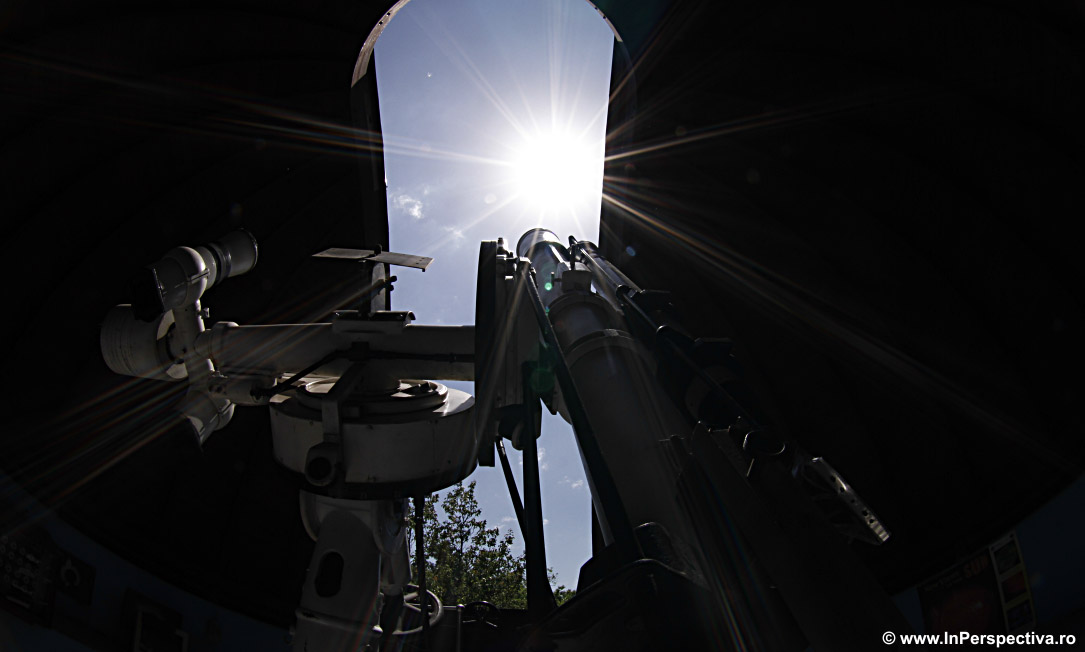Moon Day 2024 la Institutul Astronomic. Dr. Ruxandra Toma ne vorbește despre Lună
Dr. Ruxandra Toma a ales astronomia din pasiunea sa pentru stele, apărută încă din copilărie, și pentru a înțelege în fiecare zi mai mult, legitățile care descriu complexitatea splendidă a Universului. O profesionistă a cercetării științifice în domeniul astronomiei și astrofizicii, Ruxandra a câștigat o bursă de studii și a obținut apoi titlul doctoral la Universitatea Queen's din Belfast (Irlanda de Nord, UK). A revenit în România pentru a pune umărul la efortul cercetării științifice românești în cadrul acestei „științe a științelor”, astronomia, cu agilitatea minții sale și puterea de muncă. Expertiza pe care a dobândit-o în stele variabile și în cercetările de astrofizică de tip time domain a adus o valoare în plus dinamicului nucleu de cercetare științifică al Institutului Astronomic al Academiei Române.
Cu ocazia celebrării Aselenizării, a primilor pași ai omului pe Lună (20 iulie 1969), Dr. Toma ne povestește într-o scurtă prezentare video adresată publicului general, lucruri mai cunoscute și mai puțin cunoscute despre vecinul nostru cosmic cel mai apropiat.
Descărcați înregistrarea de aici
Published on Jul 19, 2024
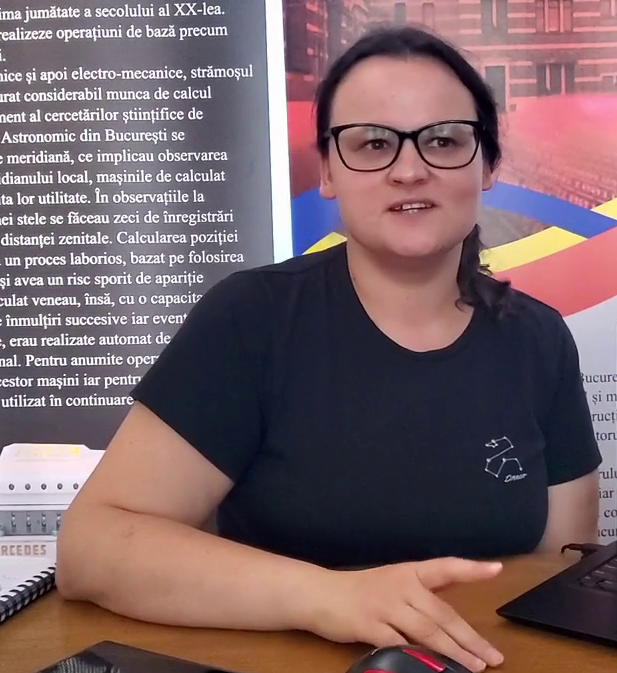
First light from the new Berthelot Solar Observatory
We obtained full disk solar images of the photosphere (WL), Calcium II K line (Ca II K) and chromosphere (HA), for the first time remotely, controlling the instruments from Bucharest. Solar activity is near the maximum of the 25th cycle and we can see many active regions with many sunspots, plages, filaments and other interesting details of the solar photosphere and chromosphere. We use three Vixen SD102 refractors on an ASA DDM85 mount, a Baader Herschel Prism for WL, a Calcium line filter and a DayStar Quantum PE H alpha filter. Further work is needed to fine tune all equipment, developing a procedure for remote work and image processing pipeline.
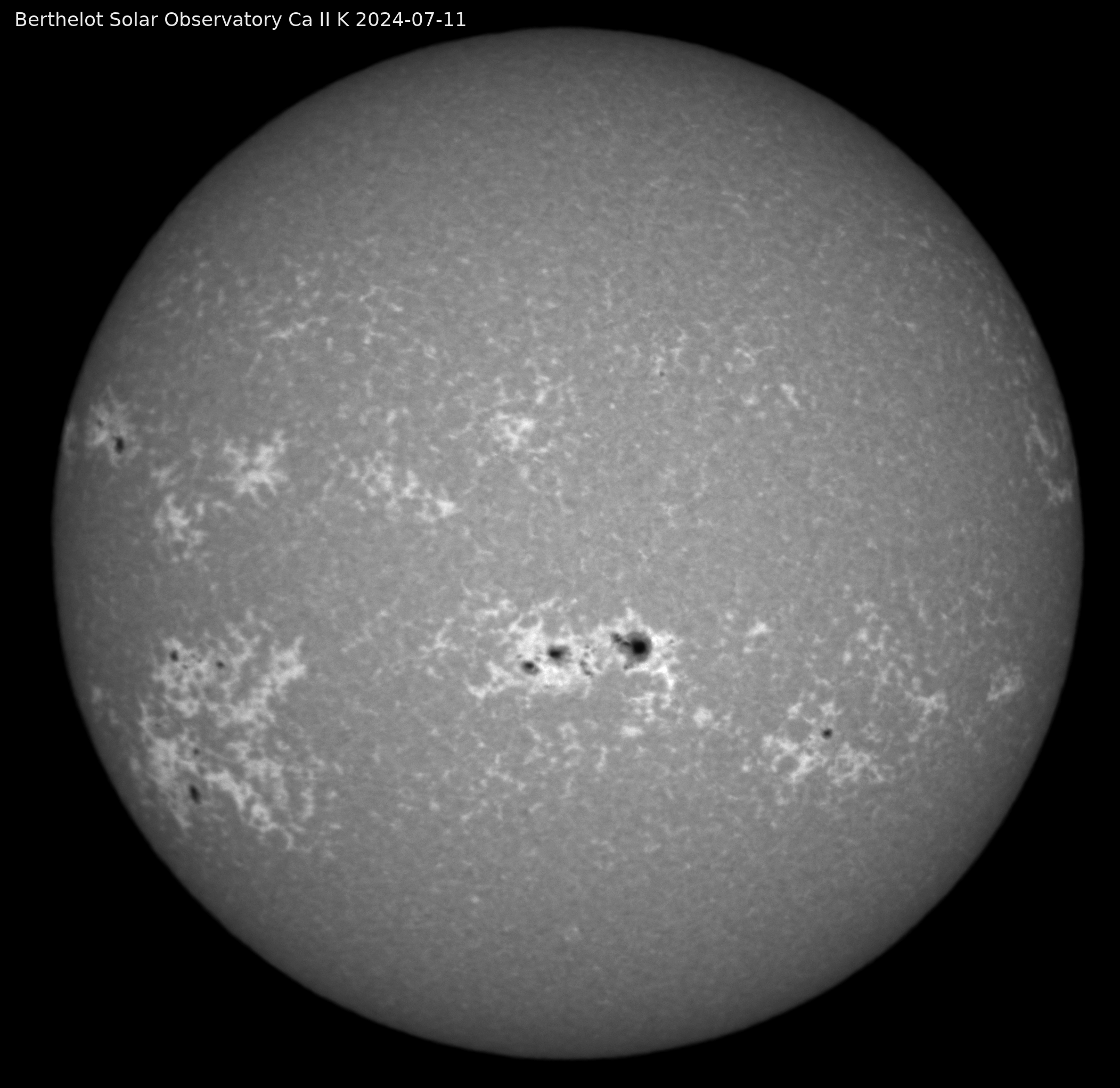
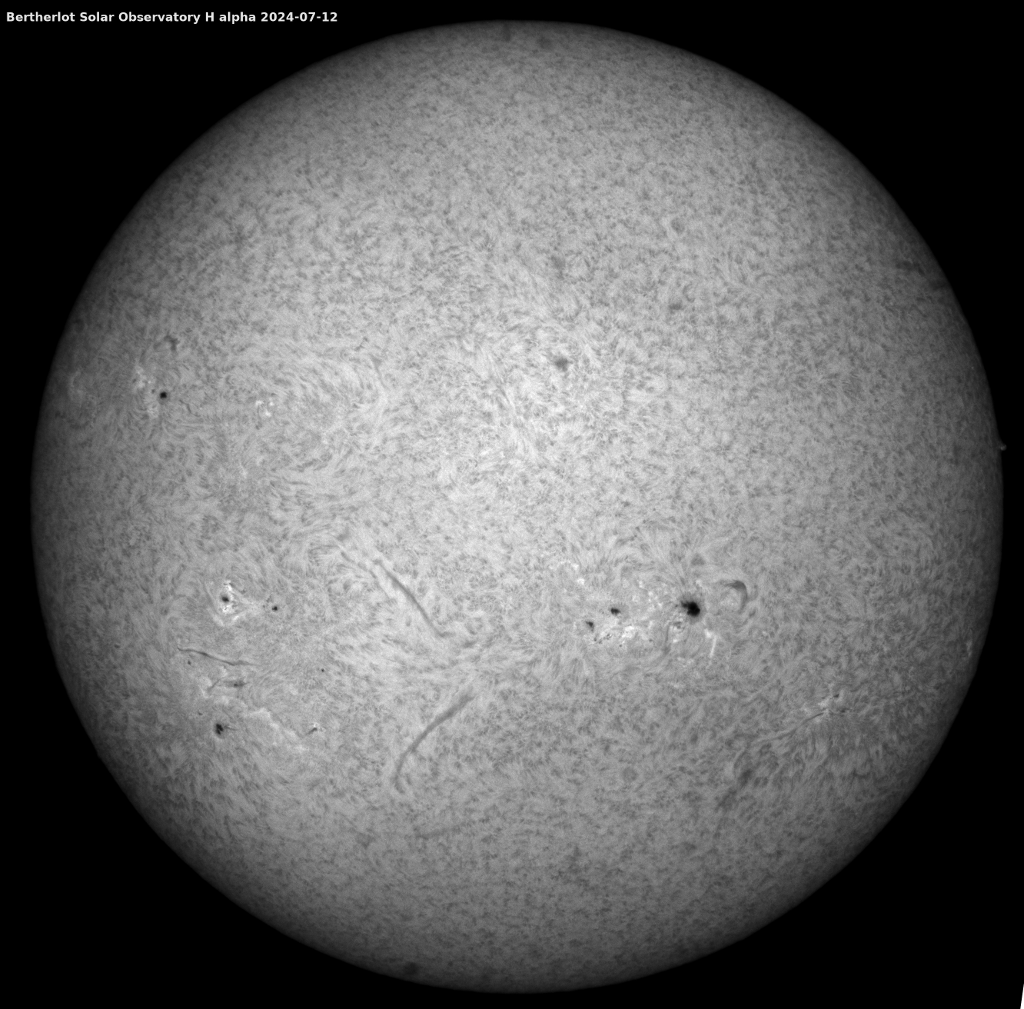
Published on Jul 19, 2024
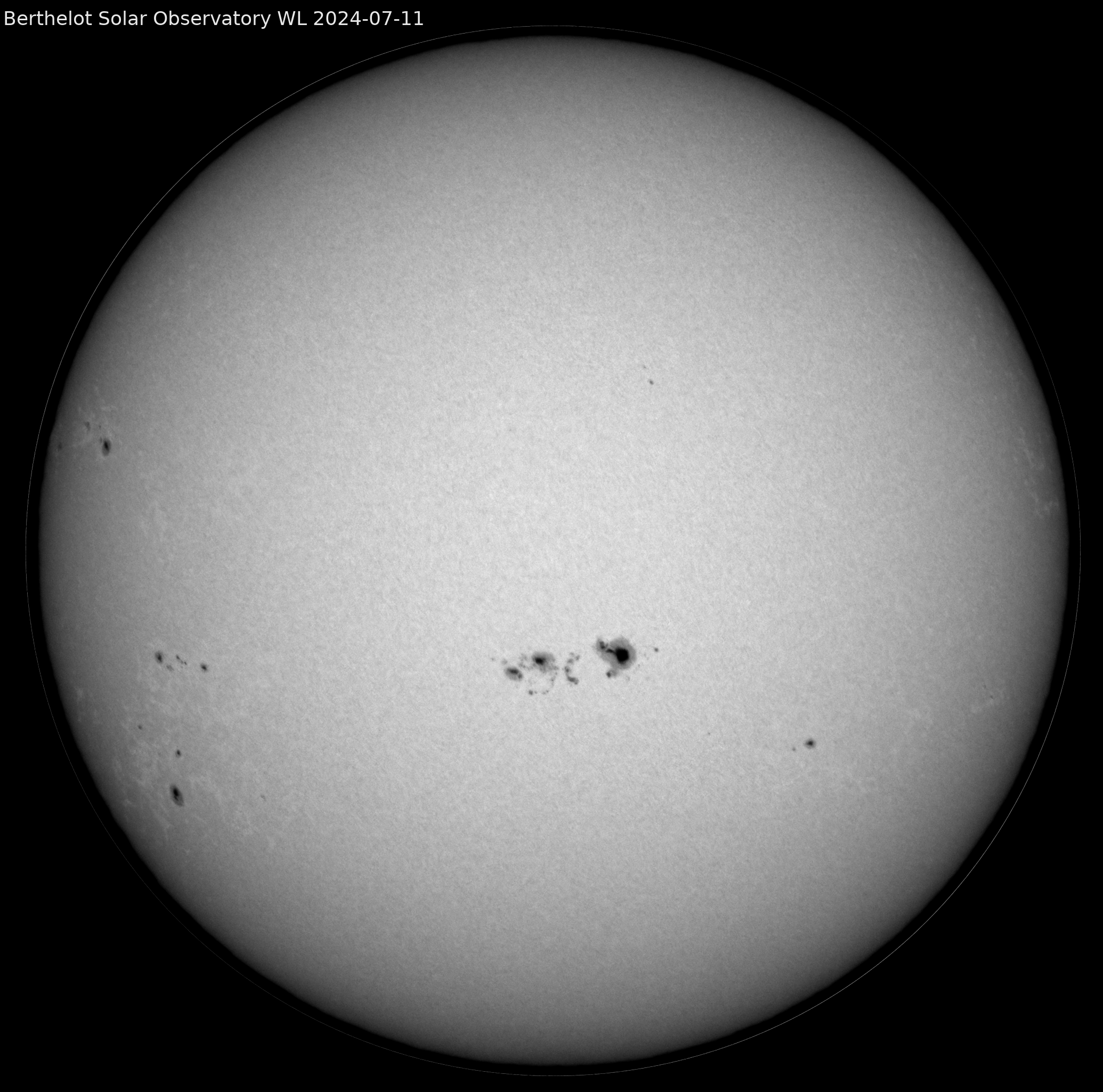
Asteroid Day 2024 - Ziua Porților Deschise la Institutul Astronomic al Academiei Române
Pe 20 iunie 2024, cu ocazia evenimentului „Asteroid Day - Ziua Porților Deschise”, un public numeros a putut vizita incinta Observatorului Astronomic din București, din cadrul Institutului Astronomic al Academiei Române.
Ca în fiecare an, Institutul Astronomic a oferit publicului larg pasionat de astronomie și știință posibilitatea de a participa la un circuit de vizitare care a inclus: Sala Meridian, Cupola Ecuatorială, Holul Planetariu, Sala Planetariu și parcul științific al Institutului.
În Sala Meridian, prezentările au fost ținute de Octavian Bădescu și Sorin Marin și au sintetizat principalele direcții de cercetare științifică din domeniile astronomiei și astrofizicii, în corelație cu funcționalitățile specifice ale instrumentelor științifice expuse în sală și rolul lor în istoria astronomiei din Patria noastră.
Grupurile de persoane de toate vârstele au intrat apoi în Cupola Ecuatorială, unde prezentările cu suport PowerPoint făcute de Dan Pricopi și Ruxandra Toma au ilustrat activitatea științifică de astrofotografiere realizată de astronomii români de la București, cu luneta astrograf Prin-Merz, timp de aproape 100 de ani.
Aflat între cele două foste săli de cercetare științifică, Holul Principal al Pavilionului Principal a găzduit o spectaculoasă expoziția astrofoto a Societății Astronomice Române de Meteori (SARM), coordonată de neobositul Valentin Grigore.
În continuarea acestei expoziții, Holul Planetariu a găzduit amplul proiect de machetare a unor vehicule spațiale realizat de Cristian Lazăr. În aceeași incintă, Adrian Popescu a utilizat suportul multimedia al terminalelor touch screen de mari dimensiuni și ochelarii 3D pentru a prezenta unele dintre caracteristicile fizico-dinamice ale Soarelui, steaua de lângă noi.
Pe durata întregului eveniment, în Sala Planetariu au ținut prezentări de popularizare a astronomiei: Ruxandra Toma, Cristian Omăt, Simon Anghel, Adrian Șonka, Diana Constantin și Valentin Grigore.
Circuitul de vizitare a continuat apoi în parcul științific al Institutului Astronomic, unde Octavian Blagoi și Liliana Dumitru au oferit o multitudine de explicații și au îndrumat publicul pentru a privi Soarele prin lunete și telescoape dotate cu filtre profesionale. De asemenea, inimoasa echipă de voluntari ai Space Club din cadrul Ministerului Apărării Naționale, coordonată de Andra Stoica, împreună cu Georgian Tudor, Diana Chiriță și Adrian Neaga au organizat workshopuri tematice cu profil de astronomie.
Published on Jul 03, 2024
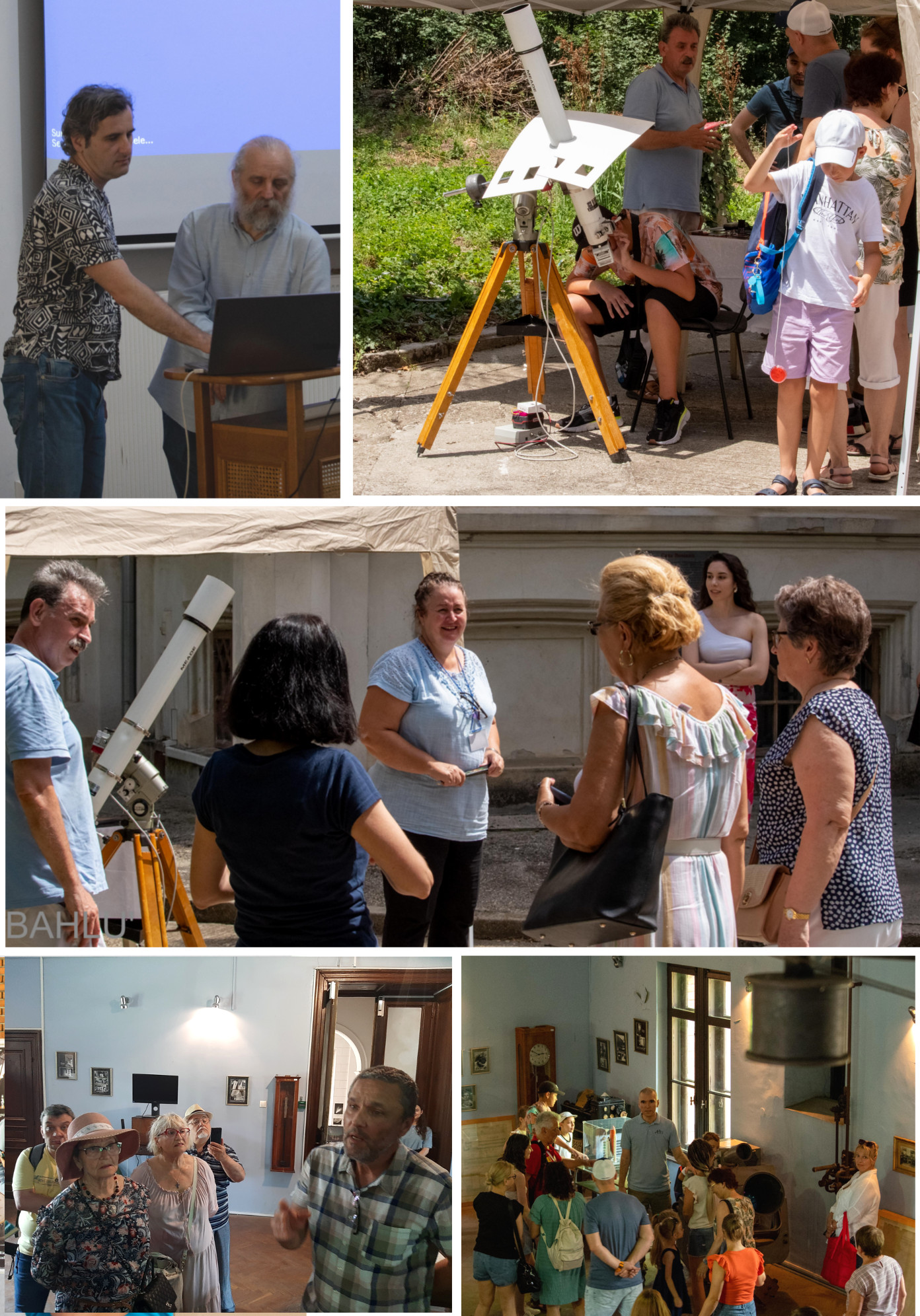
Asteroid Day 2024 - Ziua Porților Deschise la Institutul Astronomic al Academiei Române
Institutul Astronomic al Academiei Române vă invită la:
ASTEROID DAY - ZIUA PORȚILOR DESCHISE, 20 IUNIE 2024
Adresa: Strada Cuțitul de Argint nr. 5, Sector 4, București
Evenimentul se va desfășura între orele: 10.00 - 18.00
Accesul publicului se va face gratuit și doar pe bază de programare la adresa de email: astro@astro.ro, prin comunicarea numelui și prenumelui persoanelor care vor participa și prin alocarea de către organizator pentru fiecare vizitator, în limita locurilor disponibile, a unui interval orar de vizitare a Institutului Astronomic.
Activități:
- Prezentări din domeniul astronomiei - Vizitarea spațiilor muzeale ale Institutului Astronomic - Workshopuri tematice - Observații astronomice
Published on Jun 19, 2024
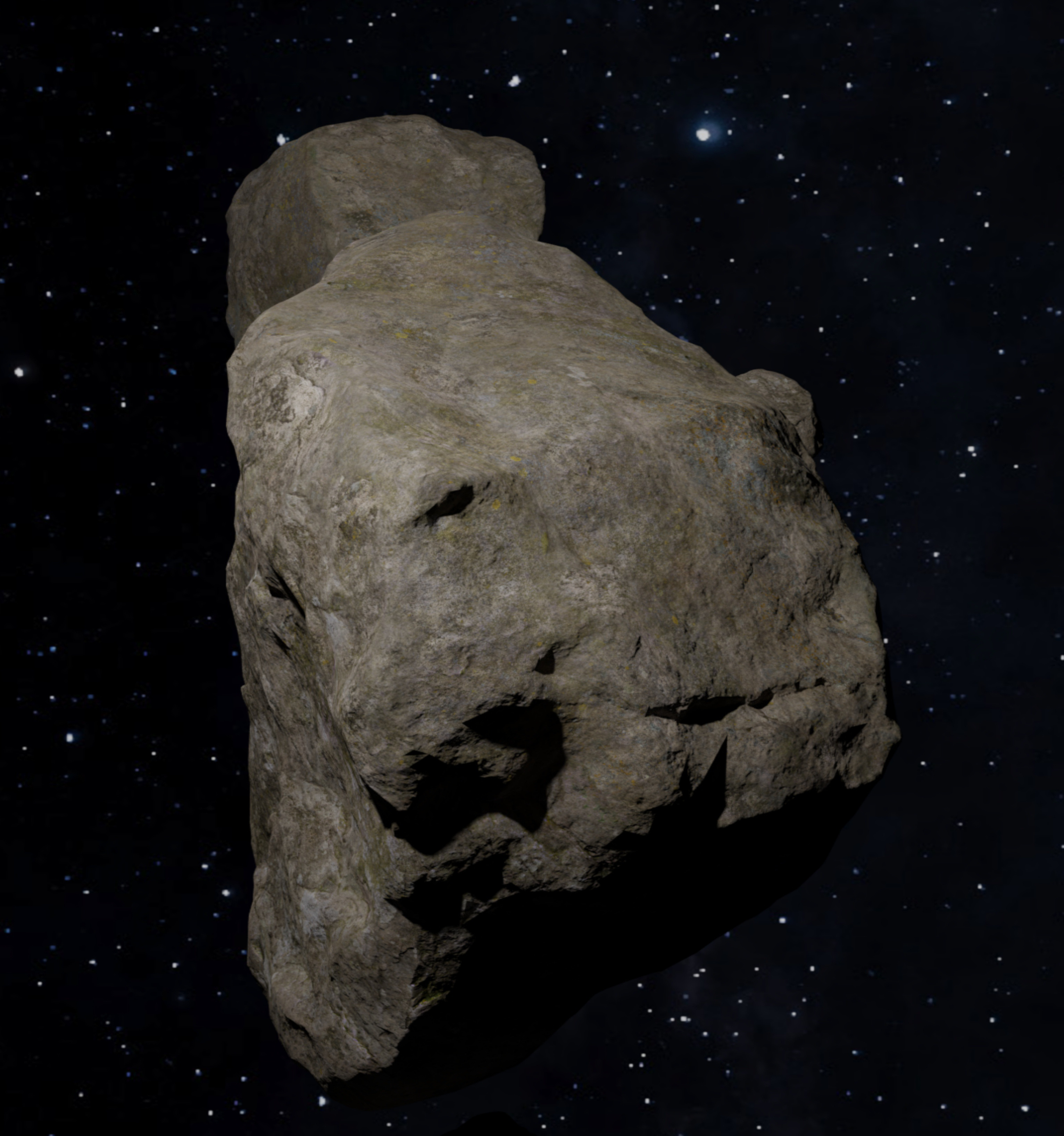
Institutul Astronomic - Vector național de promovare a astronomiei și educației prin știință
Institutul Astronomic al Academiei Române a participat în ultimele luni la activitățile educaționale naționale „Școala Altfel” și „Săptămâna Verde”, iar în zilele de 17-18 mai, la ediția din acest an a târgului de știință și tehnologii spațiale Astrofest.
În spațiile culturale din București ale Institutului Astronomic - Sala Meridian, Cupola Ecuatorială, Holul Pavilionului Principal, Holul Planetariu și Cupola Soare, precum și în rondul din proximitatea Vilei Bosianu, peste 1500 de copii și adulți au avut posibilitatea de a interacționa cu moștenirea culturală a astronomiei românești, dar și cu istoria locului, care și-a adus o contribuție importantă la istoria națională.
La Astrofest 2024, standul Institutului s-a bucurat de o mare popularitate fiind vizitat de mii de participanți. În acest an, tema prevalentă a standului au fost asteroizii - corpuri cerești studiate de nucleul dedicat de cercetători ai Institutului Astronomic al Academiei Române. Standul a expus 4 fragmente de meteorit de aprox 4-5 kg. fiecare, recuperați din nord-vestul Africii. Prin lupă binoculară, s-a studiat de către cei mari și mici, misteriosul fragment de meteorit North West Africa 869, precum și o secțiune de material meteoritic cu un mozaic de metale topite, oxizi și spectaculoase structuri cristaline, prilej de a prezenta fenomene și legități ale acestui domeniu distinct al astronomiei.
Oferta de tipărituri de popularizare și machetarea prezentată publicului au întregit experiența cunoașterii la standul Institutului Astronomic.
În partea a doua a zilei de sâmbătă, 18 mai, când cerul s-a eliberat de nori, în fața standului Institutului Astronomic al Academiei Române de la Astrofest 2024, publicul a putut observa Soarele prin lunetă dotată cu filtru profesional iar mai pe seară, Luna.
 Despre explorarea spațiului cosmic, cu cei mai tineri viitori astronauți din România, la standul Institutului Astronomic al Academiei Române (Astrofest 2024)
Despre explorarea spațiului cosmic, cu cei mai tineri viitori astronauți din România, la standul Institutului Astronomic al Academiei Române (Astrofest 2024)
Published on May 22, 2024
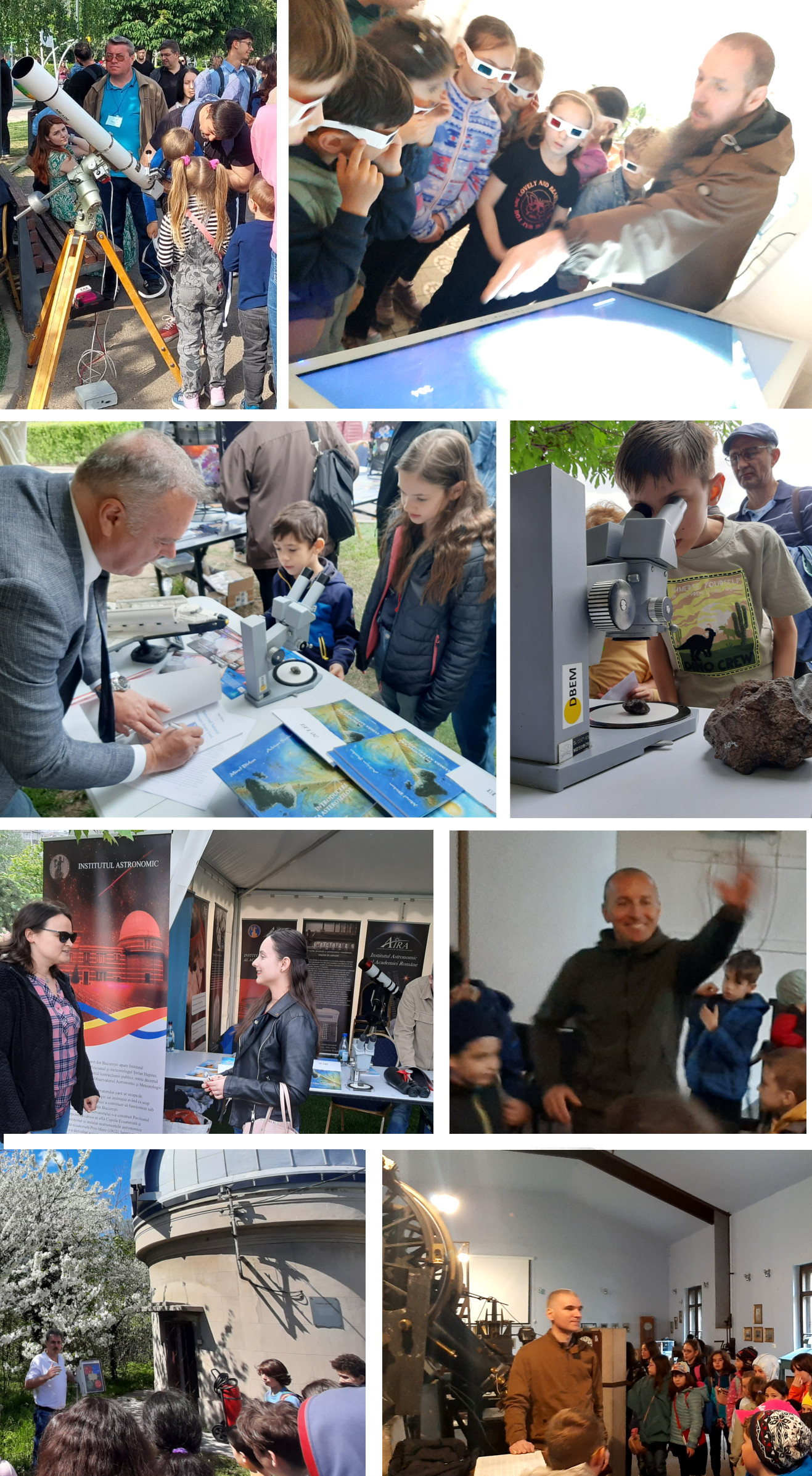
Trecerea la ora de vară în România
Pe 31 martie 2024, România trece la ora de vară iar ceasurile vor fi date înainte cu o oră, ceea ce înseamnă că ora României va fi cu 3 ore în avans față de Timpul Universal (GMT). Astfel, ora 3:00 devine ora 4:00, o schimbare care survine după trecerea la ora de iarnă de toamna trecută.
După echinocțiul de primăvară, ce a avut loc pe 20 martie 2024, când ziua este egală cu noaptea, ziua devine acum din ce în ce mai lungă iar noaptea mai scurtă. Prin adoptarea sistemului de oră de iarnă - oră de vară, programul de activitate al oamenilor poate beneficia mai mult timp de lumina naturală - un element important de natură să faciliteze activitățile socio-economice. Astfel, se realizează o importantă economie de curent electric necesar iluminatului artificial și, implicit, o poluare mai redusă pentru a-l produce; unele activități economice precum comerțul și serviciile se desfășoară mai eficient ca urmare a luminii naturale; incidentele rutiere sunt mai puține; se constată valori mai scăzute ale ratei infracționalității.
În ultimii ani, la nivelul autorităților Uniunii Europene a existat o dezbatere privind renunțarea la sistemul de oră de iarnă și oră de vară, dar până la momentul actual, Parlamentul României a respins această inițiativă.
Published on Mar 27, 2024

Type III and type II radio bursts observed by e-CALLISTO ROMANIA
On February 9, 2024, occurred the second largest X3.3 class solar flare during the current cycle, maximum occurs at 13.14 UTC, in AR13575 which has already passed the Sun's western limb, so it could have been even bigger. The coronal mass ejection was not directed to Earth, but still resulted in an S2 radiation storm, shortwave radio blackouts in the polar regions, and minor effects on satellite electronics.
Also, following the eruption, there were type III and type II radio emissions received by the e-CALLISTO Bucharest station (the attached image, processed with Java Viewer and Gimp). It is one of the most spectacular spectrograms obtained with our antenna and under conditions of significant radio disturbances produced by ground stations and building radio noise sources (RFI).
Info: Octavian Blagoi, Scientific Researcher, AIRA (oblagoi@astro.ro)
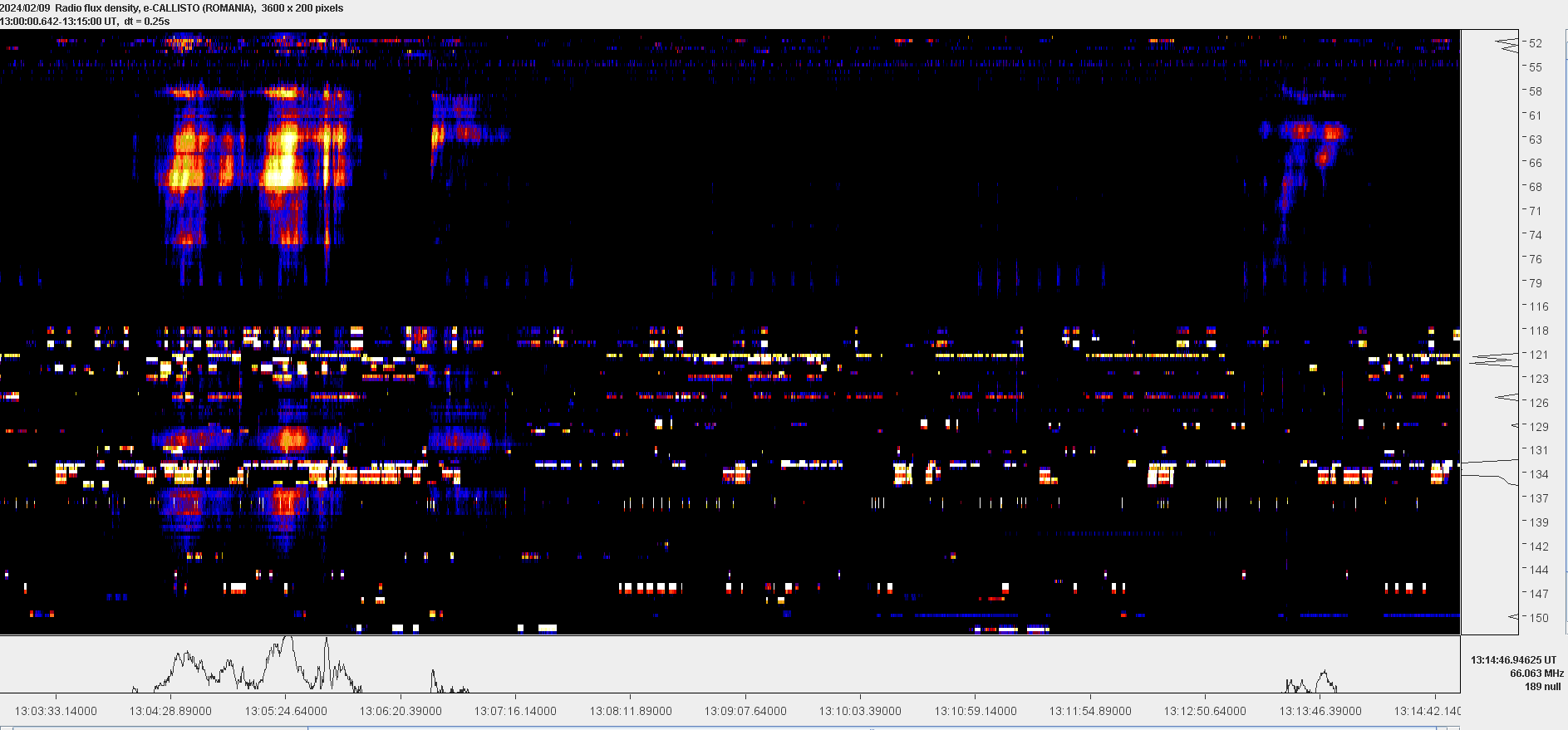 Radio bursts spectrogram of the 09.02.2024 solar flare as recorded from Bucharest, Romania (© AIRA, 2024)
Radio bursts spectrogram of the 09.02.2024 solar flare as recorded from Bucharest, Romania (© AIRA, 2024)
Published on Feb 19, 2024
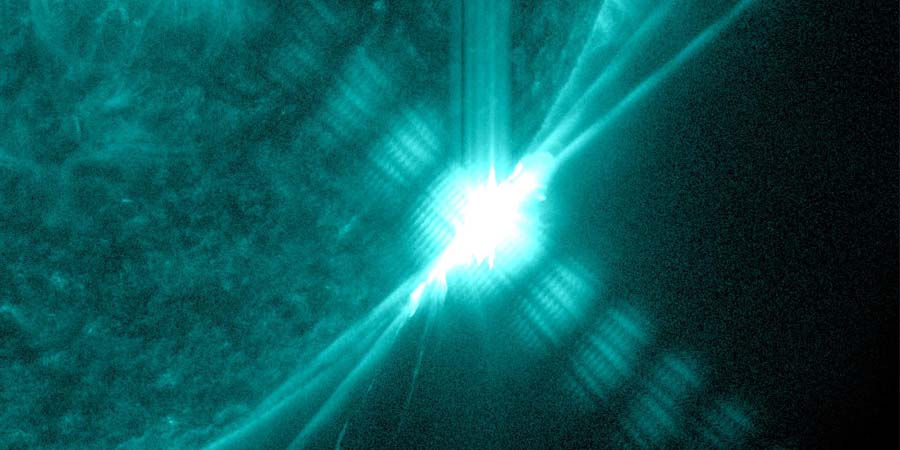
Asteroid 2024 BX1 was observed from AIRA's headquarters in Romania
Small asteroid 2024 BX1 was discovered on the night of Jan 20, 2024, by Piszkéstető Station in Hungary three hours before entered in the Earth's atmosphere.
It was observed from Bucharest Observatory for an hour until 25 minutes before impact, using a 0.35 m telescope.
The object was fast as it was getting closer to our planet and increased over six times in brightness. Our last observation was made while de asteroid was at 13.000 km away from the Earth surface.
On Jan 21, at 00:33 GMT, the asteroid entered the Earth's atmosphere over Germany and produced a very bright fireball, which was observed by multiple allsky cameras.
Download link:
Mp4 video with asteroid 2024 BX1 as observed by AIRA (Credit: Dr. Adrian Șonka)
Published on Jan 26, 2024
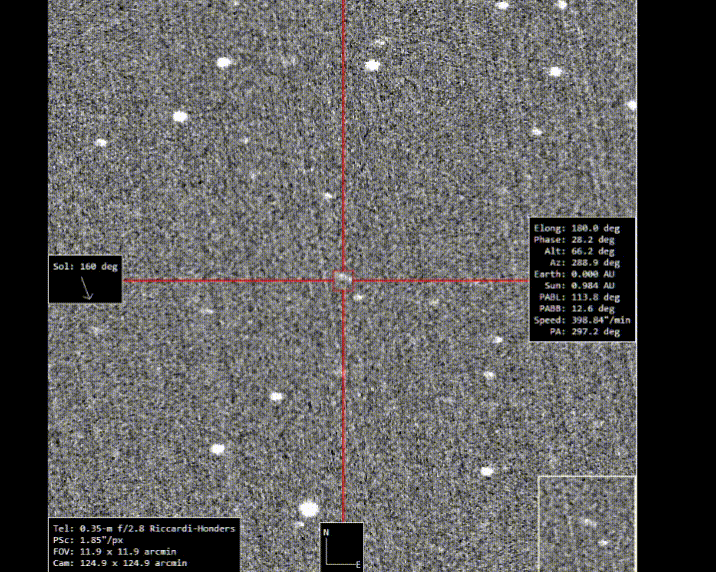
Happy New Year 2024
The Astronomical Institute of the Romanian Academy wishes you a happy and prosperous New Year 2024.
The greetings card was devoted to the allsky cameras network in Romania, called MOROI.
During 2022-2023 the network continues its activity, by recording hundreds of falling stars (meteors).
AIRA team involved in activities related to MOROI continues the densification of the nework; thus, now there are 19 cameras working continuously recording events.
During 2022-2023 the network finished the process of data fusion with the large network called FRIPON.
During 2022-2023 one PhD thesis was defended, and one post-doc was active on specific topics.
Published on Dec 31, 2023
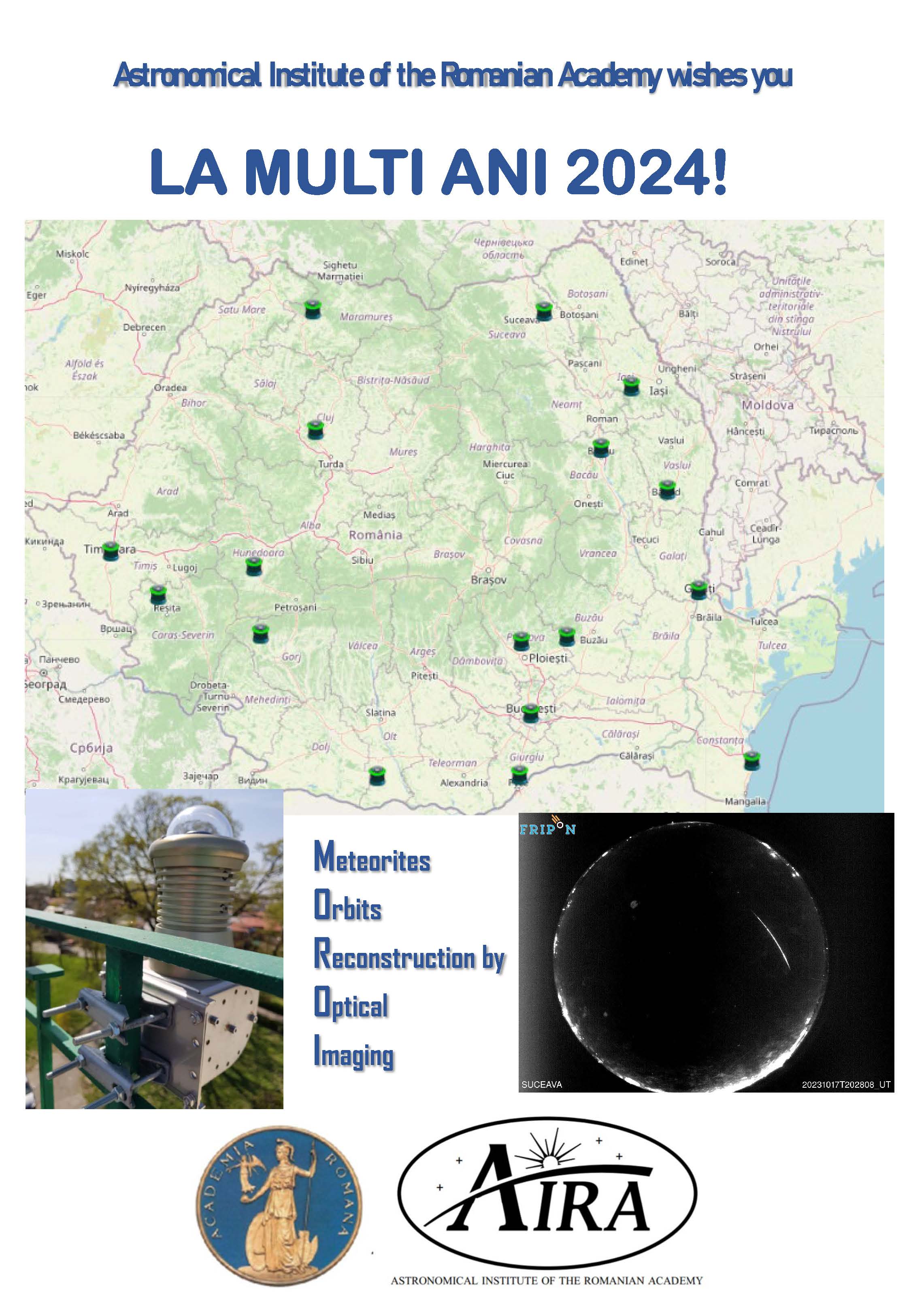
Romanian Astronomical Journal Ranked by Clarivate Analytics
Romanian Astronomical Journal is the scientific journal devoted to astronomy in Romania and it is published by Editura Academiei Romane. This journal is edited under the patronage of National Committee of Romanian Astronomers (C.N.R.A.).
The first number of Romanian Astronomical Journal appeared in 1991; this journal has been open-source since 2011. All the articles are available freely from the web portal. In 2015, Romanian Astronomical Journal was included in the Clarivate Analytics database (former Thompson ISI) into the category of Emerging Journals.
Romanian Astronomical Journal has been under evaluation since 2015. In December 2023 Clarivate Analytics first time awarded the ranking for our journal. Thus, Romanian Astronomical Journal is now in Q4 quartile. It receives a Journal Impact Factor (JIF) of 0.3 as an average for the last five years, while in 2022 the JIF was 0.6
This is a huge achievement of our journal who brings forth the quality of articles and the efforts of Editorial Boards and the Scientific Committee of this journal. Congratulations!
More information of Romanian Astronomical Journal, on the web portal.
Published on Dec 26, 2023
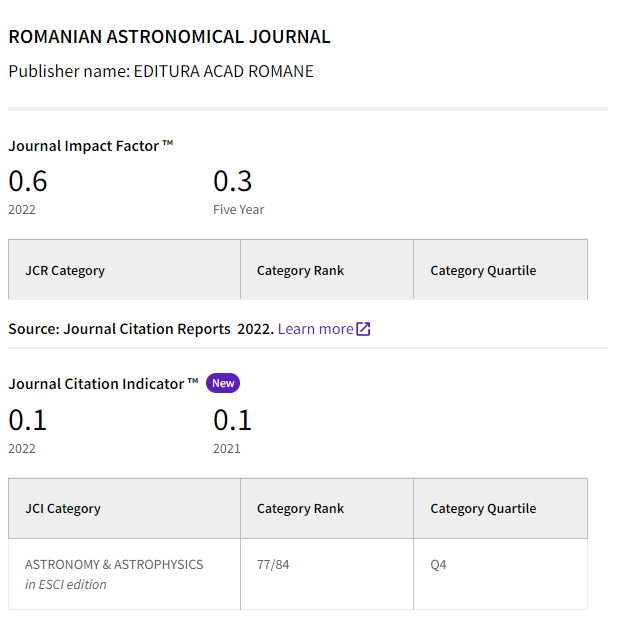
Astronomia își dezvăluie tainele pentru copiii cu dizabilități de vedere
Pe 4 decembrie 2023, la sediul Institutului Astronomic al Academiei Române din București, a avut loc o activitate educațională dedicată copiilor cu dizabilități de vedere. Evenimentul a fost organizat de Institutul Astronomic alături de clubul de astronomie „Space Club” al Agenției Spațiale și de Radiocomunicații a Armatei Române, și a beneficiat de susținerea cadrelor militare și a logisticii lor. La eveniment a luat parte ca invitat special, Maior Emily Trop, din partea Ambasadei Statelor Unite ale Americii.
„Emoție” și „bucurie”, sunt cuvintele care pot descrie cel mai bine întâlnirea cu astronomia a copiilor cu dizabilități de vedere, prin intermediul paginilor 2D termoformate, a numeroaselor print-uri 3D de mini-bolte cerești și constelații dispuse în relief pe aceste modele, și a planetariilor mecanice miniaturale ce au oferit suport tactil. În plus, pe durata evenimentului, planetele Sistemului nostru Solar s-au aliniat „miraculos” pe o sfoară purtată prin spațiul educațional al Institutului Astronomic al Academiei Române și studiată centimetru cu centimetru de mânuțele curioase ale celor mici. Print-urile 3D reduse la scară ale unor asteroizi, rezultat al accesării scanărilor 3D exacte ale acestor corpuri cerești, au îmbogățit instrumentarul educațional al activității. Primiți cu multă căldură de extraordinar de sufletiștii coordonatori ai evenimentului - Dipl. Ing. Andra Stoica, Diana Chiriță și Col. Georgian Tudor, zecile de participanți au avut șansa de a intra, pe rând, în interiorul planetariului pentru nevăzători aflat în cadrul spațiiilor educaționale ale Institutului Astronomic – o semi-sferă cu dispunere tactilă corespunzătoare in interior a reprezentării unora dintre principalele constelații.
De-a lungul întregului eveniment, personalul Armatei Române din componența „Space Club” – Slt. Bogdan Daniliuc, Maistru militar Alexandra Bogoiu, Sg. Sergiu Zîrnovean și Asp. Cătălina Pop, precum și inimoșii voluntari Corina și Suzana Păcală, Adrian Neaga, Cosmin Șulea și Petrișor Munteanu, au oferit oră de oră, o multitudine de informații primite cu interes de cei mici.
Echipa de pedagogi din cadrul evenimentului a fost întărită de reprezentantul Institutului Astronomic al Academiei Române, Sorin Marin.
Mesajul și, totodată, promisiunea organizatorilor acestui eveniment este că, ne vom dedica munca și energia, pentru ca în Patria noastră Mamă, România, oricine să poată atinge stelele.
Published on Dec 08, 2023
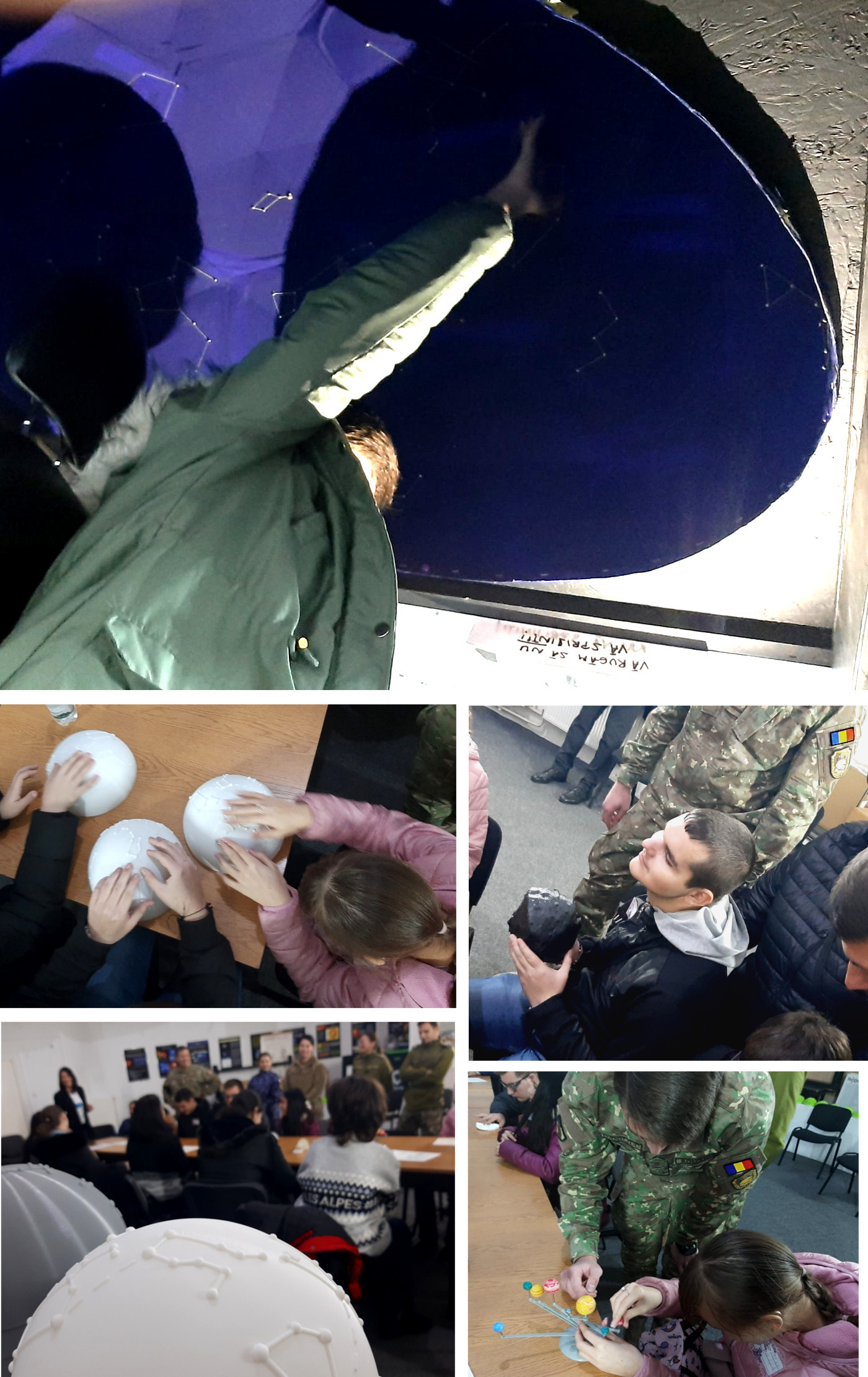
Ocultația Venus-Lună observată de Institutul Astronomic al Academiei Române
În data de 9 noiembrie 2023, ora 12:18 (ora României), a avut loc o ocultație a planetei Venus de către Lună. Fenomenul a avut câteva particularități:
1. A avut loc în timpul zilei, astfel încât conditiile de observare / fotografiere nu au fost cele mai bune. Datorită luminii diurne, contrastul Lunii, aflată în ultimul pătrar pe cerul zilei, a fost destul de scăzut.
2. Luminozitatea planetei Venus a fost mai intensă decât cea a Lunii, ceea ce a facut ca Venus să fie extrem de strălucitor în camera astrofoto comparativ cu suprafața alăturată a Lunii. A fost nevoie ca timpul de expunere al camerei să fie redus la 0.003 secunde ca să se poată obține o imagine a planetei Venus care să nu fie super-saturată, și Luna să fie, totuși, vizibilă în filmare.
3. Din locul din care s-au efectuat observațiile (Cupola Solară a Observatorului București al Institutului Astronomic al Academiei Române), s-au observat cu relativă ușurința intrarea discului planetei Venus în spatele Lunii, însă ieșirea din spatele Lunii nu a mai fost observată întrucât Luna a coborât destul de mult și s-a „ascuns” după ramurile unor copaci din parc.
Observațiile au fost făcute folosind luneta Zeiss de 120 mm F/15, camera ATIK 460 MM, softul de achiziție și preprocesare - MaximDL.
Expunerile au avut 0.003 secunde, iar pentru calibrare am folosit bias și flat făcut pe fondul cerului. Distanta între expuneri a fost de circa 17 secunde la începutul filmului și de 7 secunde către sfârșit, când s-a încercat prinderea ingress-ului cât mai în detaliu.
Link-uri download:
Fișier .gif cu ocultația Venus-Lună, exp. 0.003 s. (© AIRA, 2023)
Imagine de înaltă rezoluție cu ocultația Venus-Lună (© AIRA, 2023)
Published on Nov 13, 2023
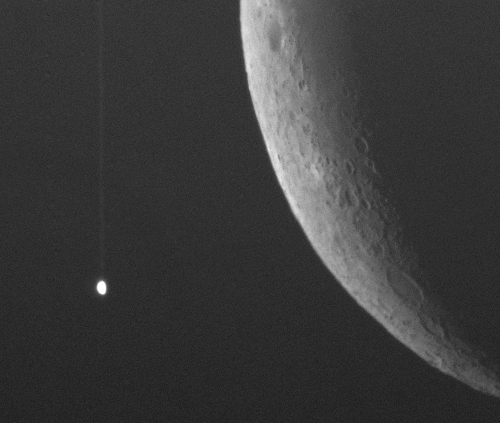
„Școala Altfel” și „Noaptea Cercetătorilor 2023”
Începerea noului an de învățământ i-a readus pe energicii vizitatori de vârstă școlară în incinta parcului științific din București al Institutului Astronomic al Academiei Române. Tururile cu ghidaj de specialitate prin sălile-muzeu ale Institutului și pe sub umbra cupolelor astronomiei românești, s-au bucurat de o apreciere generală din partea micilor noștri vizitatori și a personalului didactic însoțitor, ca urmare a ineditului și spectaculozității patrimoniului nostru cultural. Atât fostele săli de cercetare științifică, azi încremenite în timp pentru a asigura memoria posterității ca spații culturale naționale, cât și ariile active științific din prezent ale Institutului, au reprezentat un spațiu educațional non-formal și multi-disciplinar ideal, și scena a numeroase întrebări, răspunsuri, revelații, exclamații, înșiruite într-un adevărat perpetuum mobile.
În continuarea activităților educaționale și de promovare a ofertei sale culturale, Institutul Astronomic a fost prezent cu un stand propriu la evenimentul „Noaptea Cercetătorilor”, în zilele de 29-30 septembrie a.c. Cu această ocazie, Institutul a adus la stand două lunete și un telescop, care au permis publicului observarea Soarelui prin filtru profesional, cu evidențierea unor detalii de pe suprafața sa, iar după căderea serii, Luna și planetele Saturn și Jupiter. Printr-o puternică lupă binoculară, vizitatorii standului nostru au putut studia îndeaproape fragmente din meteoriți recuperați de pe trei continente - Europa, Africa și America de Sud. La această ediție a „Nopții Cercetătorilor”, am prezentat la standul Institutului Astronomic și o expoziție de machete din domeniul aero-spațial și civil, prilej pentru a ilustra și problematiza pentru sute de vizitatori, transferul de tehnologii de vârf din domeniul explorării spațiului către viața cotidiană a publicului larg.
Published on Oct 09, 2023
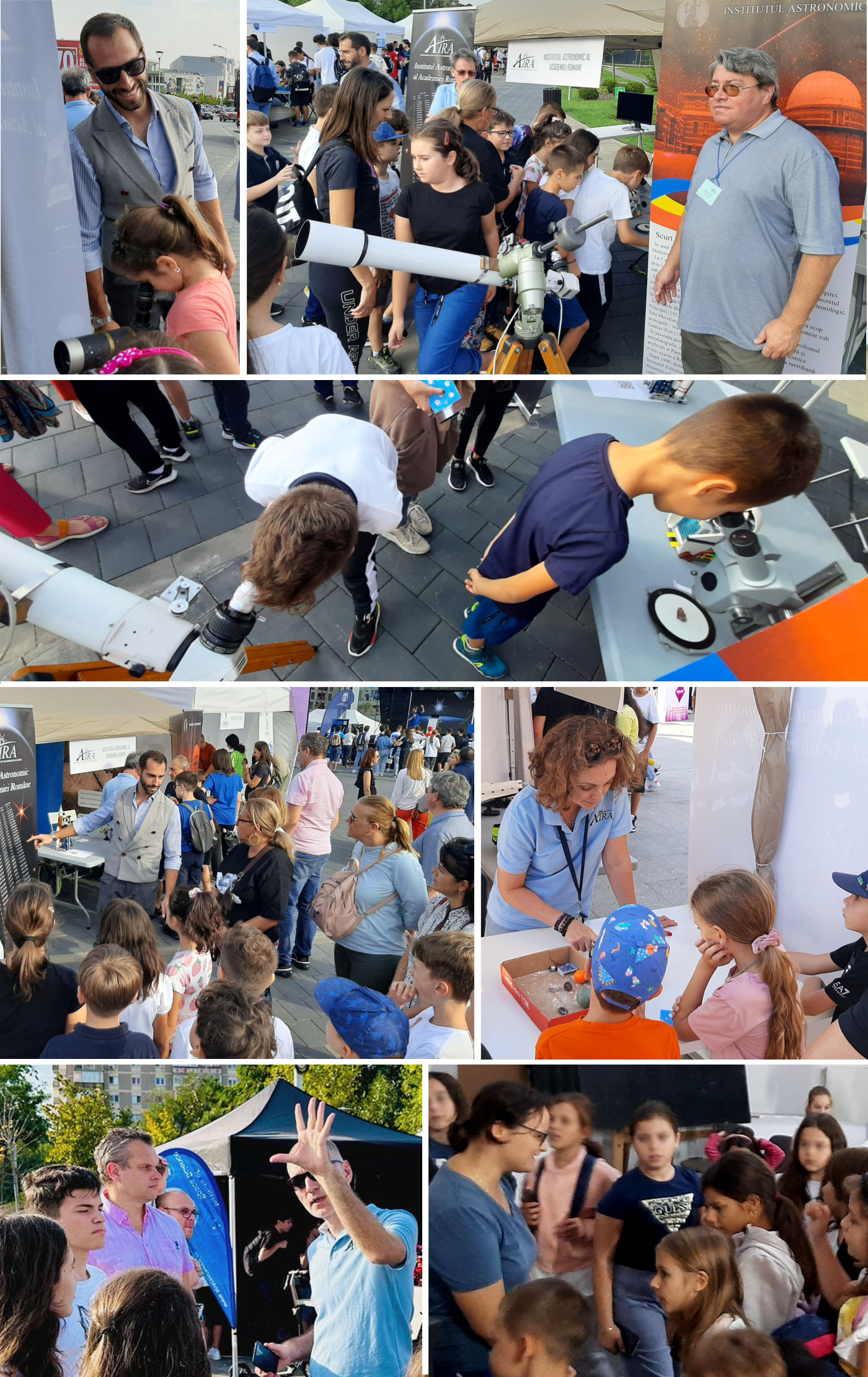
Bright fireball observed in southern Romania
On Tuesday, July 11, 2023, at 9:49:54 PM, during twilight, people in southern Romania were able to witness a large fireball. It was followed by a loud noise (sonic boom), characteristic of any object traveling at supersonic speeds. The object, with a brightness greater than that of a full moon, burned up in the atmosphere, and the luminous phenomenon exhibited several increases in brightness, associated with fragmentations due to the dynamical pressure along the trajectory.
The sky monitoring network in Romania, called MOROI, was initiated mainly for the detection of meteors entering the atmosphere and producing a luminous phenomenona called a meteors. It is managed by a team of researchers from the Astronomical Institute of the Romanian Academy.
The all-sky camera located in Obarșia Nouă, in the Olt County, belonging to the MOROI network, recorded the event most effectively. The meteor was observed during twilight and lasted approximately 5 seconds. The fragmentation during the observation saturated the camera, and the preliminary estimation of the brightness (approximate magnitude -16) significantly exceeds the maximum brightness of a full moon night, classifying the phenomenon as a fireball.
The recorded images from the all-sky cameras of the MOROI network (integrated into the European FRIPON network) along with complementary recordings will allow for the calculation of the object's trajectory, the altitude at which it extinguished, the probability of this object to produce fragments that may reach the ground (meteorites), as well as the most likely location where these fragments could have fallen.
Published on Jul 13, 2023
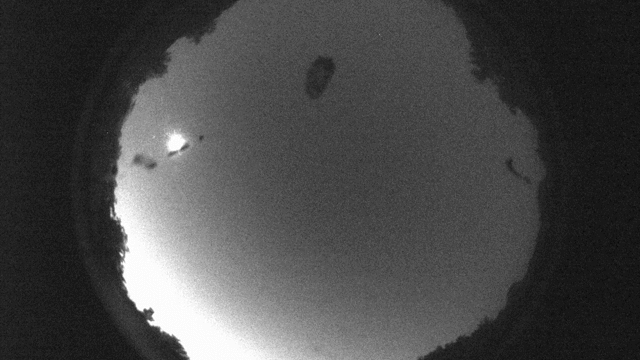
Educație prin știință la Institutul Astronomic al Academiei Române
În primăvara și vara acestui an, Institutul Astronomic al Academiei Române a participat la activitățile educaționale de nivel național „Școala Altfel” și „Săptămâna Verde”, iar în continuarea acestora, la data de 30.06.2023, a fost organizată o nouă ediție a evenimentului cultural „Asteroid Day - Ziua Porților Deschise”.
Miile de vizitatori de toate vârstele care ne-au trecut pragul cu această ocazie, au avut posibilitatea de a vedea interiorul fostelor spații de cercetare științifică ale IAAR - Sala Meridian și Cupola Ecuatorială, unde, în prezent, se află în conservare de tip muzeal, echipamente științifice emblematice ale astronomiei românești, unele vechi de peste 100 de ani - de la instrumentar optic pentru observații directe, fotografice până la tehnică de calcul și etaloane de înregistrare și păstrare a informației de timp.
Participanții au putut vizita la exterior restul parcului științific al IAAR format din clădiri-instrument și cultural-administrative precum Cupola Soare, Clădirea Telescop, Casa Soare și Vila Bosianu. În zilele în care au fost condiții meteo favorabile, publicul a putut observa Soarele prin echipamente științifice specializate, dotate cu diferite tipuri de filtre profesionale. Expertiza umană în domeniul cercetării științifice și popularizării astronomiei, a fost dublată de harnicul rover educațional V.A.S.I.L.E., construit la Institutul Astronomic, care a explorat împreună cu mulțimea micilor astronomi amatori, Holul Sălii Planetariu.
Voluntarii pasionați ai colectivului Astroclub Junior, din partea Astroclubului București, s-au aflat și de această dată alături de echipa educațională a Institutului Astronomic.
În cadrul acestor evenimente, infrastructura audio-video a Institutului Astronomic a funcționat fără oprire în cadrul prezentărilor din Sala Planetariu, Holul Planetariu și Cupola Ecuatorială, prin proiecții simultane 2D, vizualizări 3D, alături de componentele de modelare, machetare și modelism.
Published on Jul 04, 2023
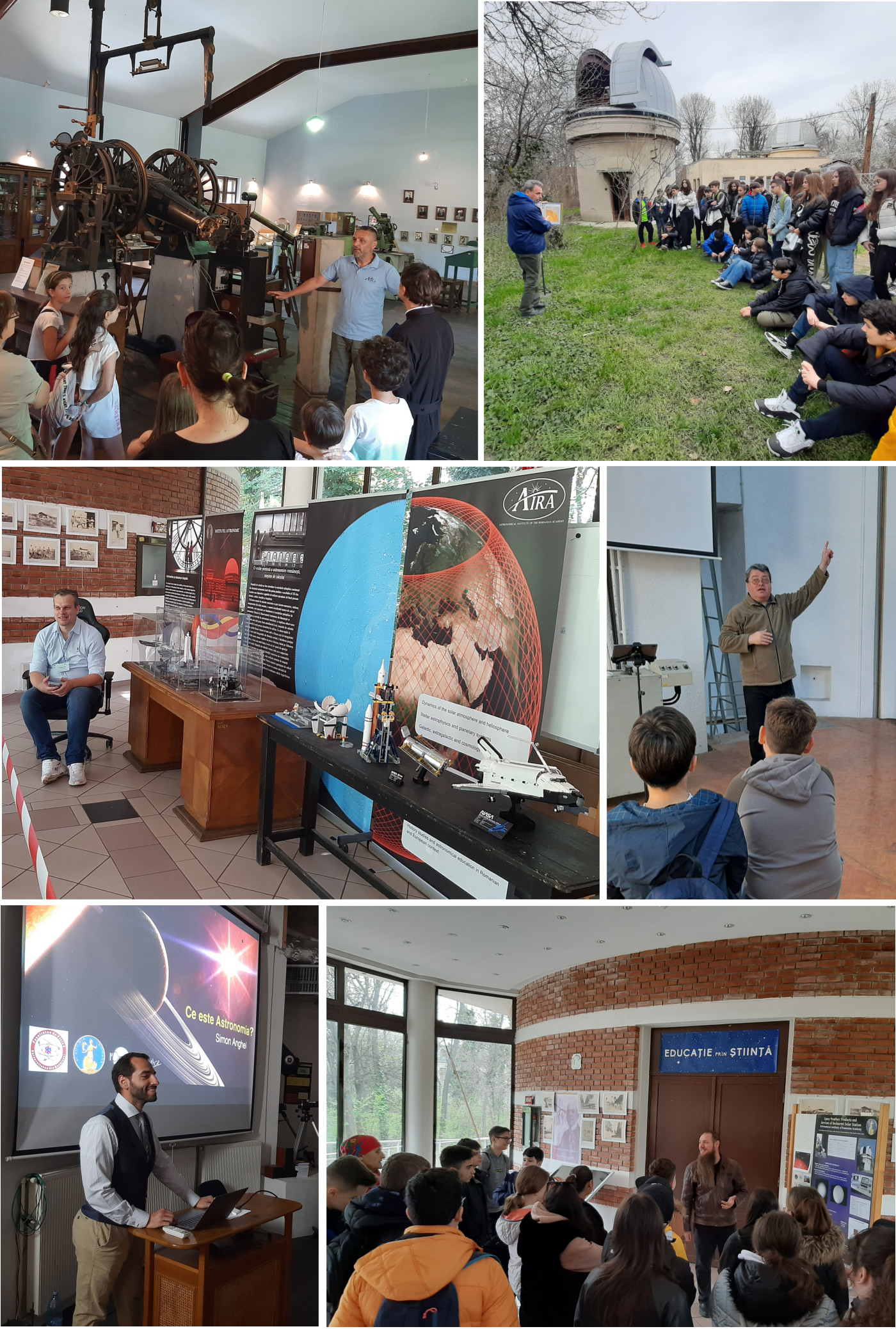
30 iunie 2023, Asteroid Day - Ziua Porților Deschise la Institutul Astronomic al Academiei Române
În data de 30 iunie 2023, Institutul Astronomic al Academiei Române, Observatorul Astronomic din București, va organiza Ziua Porților Deschise, cu ocazia celebrării evenimentului mondial Asteroid Day.
Localizat în imediata vecinătate a Parcului Carol I din București, pe str. Cuțitul de Argint, nr. 5, în Sectorul 4, Institutul Astronomic va organiza acest eveniment în intervalul orar 10.00-18.00. Accesul publicului este gratuit și se va face doar pe bază de programare la adresa de email astro@astro.ro, în intervalele orare disponibile, până la atingerea numărului maxim de vizitatori ce pot fi primiți în parcul IAAR pentru acest eveniment.
Tururile ghidate vor cuprinde: vizitarea interiorului Cupolei Ecuatoriale, unde se află cea mai mare lunetă din țară - astrograful Prin-Merz, al Sălii Meridian, care găzduiește numeroase echipamente științifice spectaculoase și unice în România; prezentări și activități educaționale cu suport audio-video în Holul și Sala Planetariu; un tur al parcului Institutului Astronomic printre cupolele astronomiei românești și emblematica Vilă Bosianu, care a avut un rol important în istoria națională.
În rondul din fața Clădirii Soare, publicul vizitator va avea posibilitatea, în funcție de condițiile meteo, de a observa prin instrumente științifice echipate cu filtre corespunzătoare, steaua de lângă noi, Soarele.
La întâlnirea cu publicul vor veni astronomi profesioniști ai României, personalități românești ale științei din țara noastră și pe plan mondial, pedagogi și alți membrii ai echipei Institutului Astronomic. Ca de fiecare dată de Ziua Porților Deschise la Institutul Astronomic, pozele, videourile memorabile, nenumăratele întrebări și voia bună vor fi nelipsite. Vă așteptăm cu drag pentru a vă arăta și spune povestea de peste un secol și jumătate a astronomiei românești moderne, și a unuia dintre cele mai dinamice domenii de cercetare științifică ale Patriei noastre.
Published on Jun 19, 2023
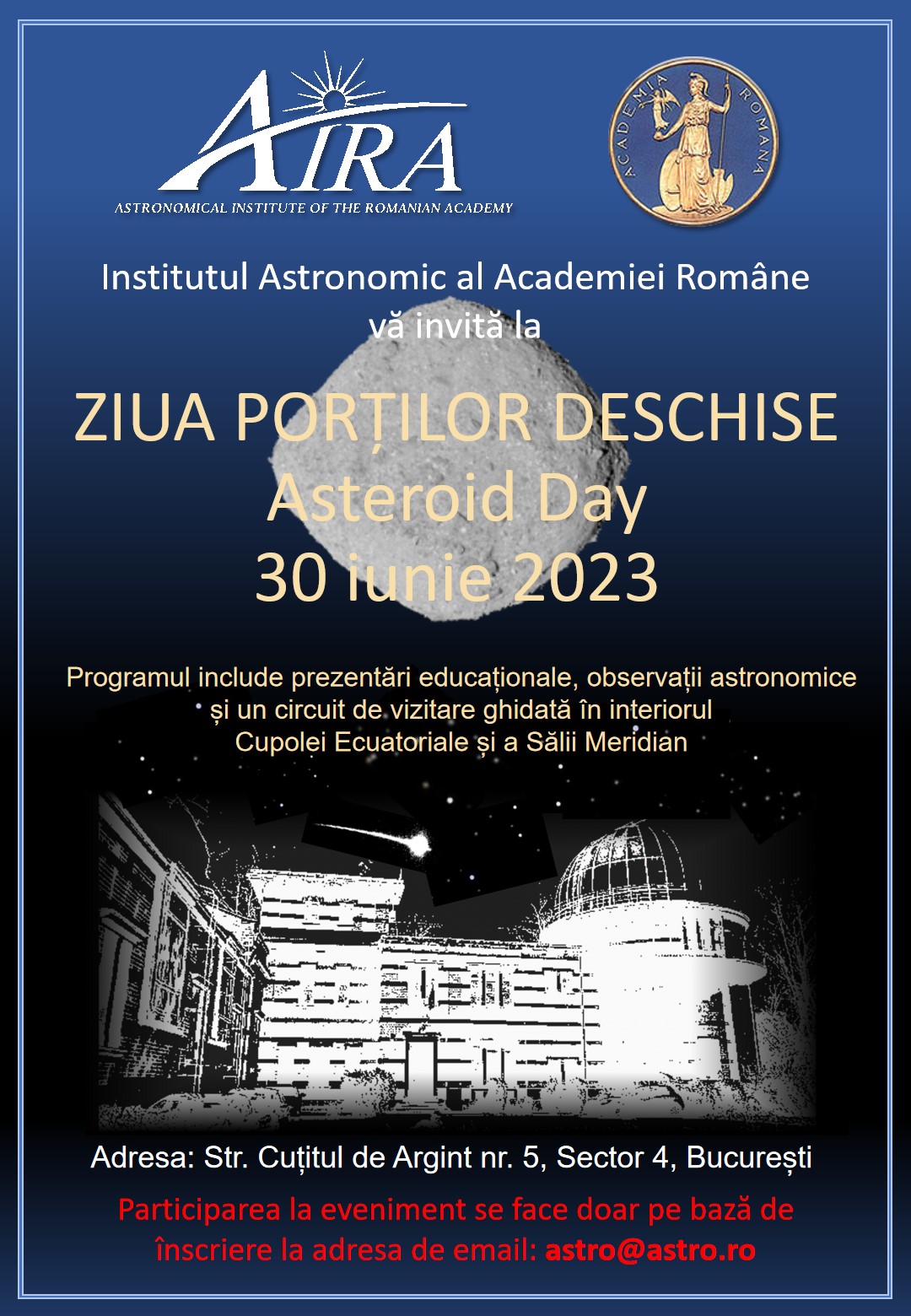
Asteroid 2023 CX1 entered Earth's atmosphere
On the morning of February 13, 2023, the small asteroid 2023 CX1 entered Earth's atmosphere, 7 hours after discovery. Its former provisional name was SAR2667.
The asteroid was observed for two hours from Berthelot Observatory - The Astronomical Institute of the Romanian Academy, the last observation being recorded 20 minutes before impact.
In the image, the asteroid is visible as a streak which crosses the image from bottom right to the top.
The estimated diameter of this celestial body was about 1 meter.
Desegregation of this object took place north of Le Havre (France) and its debris fell over France and in the English Chanel.
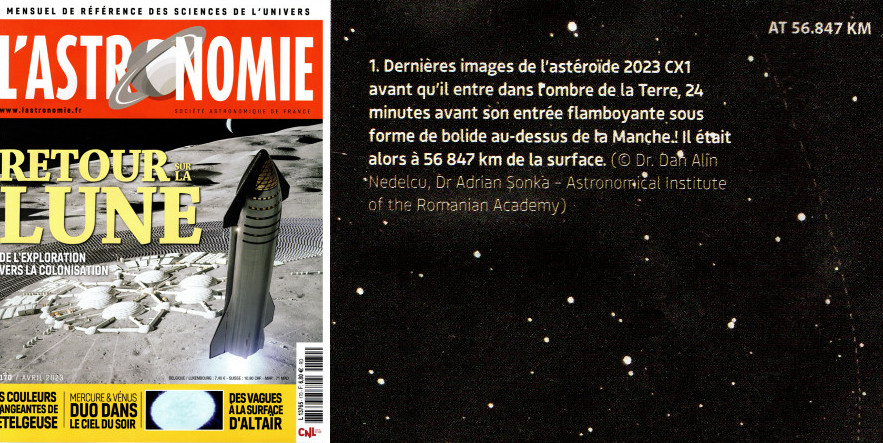
Published on May 24, 2023
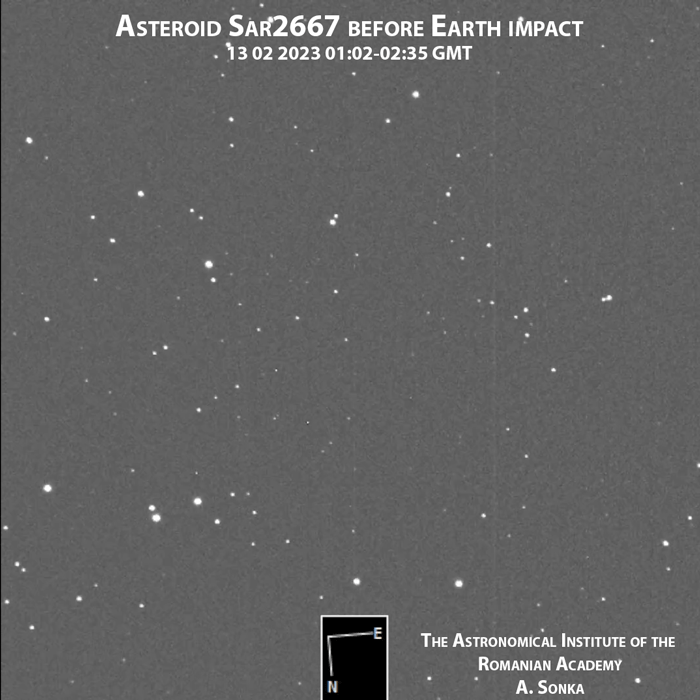
The Astronomical Institute of the Romanian Academy participated at Astrofest 2023
On May 20, 2023, the popular astronomy and science educational fair - Astrofest 2023 opened again its gates of knowledge to the public, in Bucharest. The Astronomical Institute of the Romanian Academy had a fully featured stand for the entire duration of the event, and welcomed there a large number of visitors of all ages.
Inside and outside our colorful educational stand, AIRA’s outreach team members - Dr. Diana Ionescu, Octavian Blagoi, Dr. Simon Anghel, Dr. Dumitru Pricopi, Cristian Dănescu, Sorin Marin and Cristian Omăt, presented to the public our main research areas in astronomy and beyond it, in other associated scientific fields. To better introduce the visitors to our research fields, a binocular stereo microscope was used to analyze the features of a Sericho pallasite meteorite fragment discovered in Kenya in 2016. Our magnetic field experiment and that of the proportion size of planets relative to the size of our Sun complemented the discussion about the variety of space bodies and their features in our Solar System.
In front of the AIRA stand, our educational refractory telescopes determined the formation of queues of people for the whole day. They waited patiently and eager only to have a glimpse of Venus through these fine instruments.
On the main stage of Astrofest 2023 event, Dr. Mirel Bîrlan, our Director, revealed some of the challenges of a light polluted metropolis like Bucharest for the astronomical research, while the astronomy historian Sorin Marin presented in brief the story of the scientific infrastructure build-up process that took place on AIRA’s present day domain since the 19th C.
Published on May 22, 2023
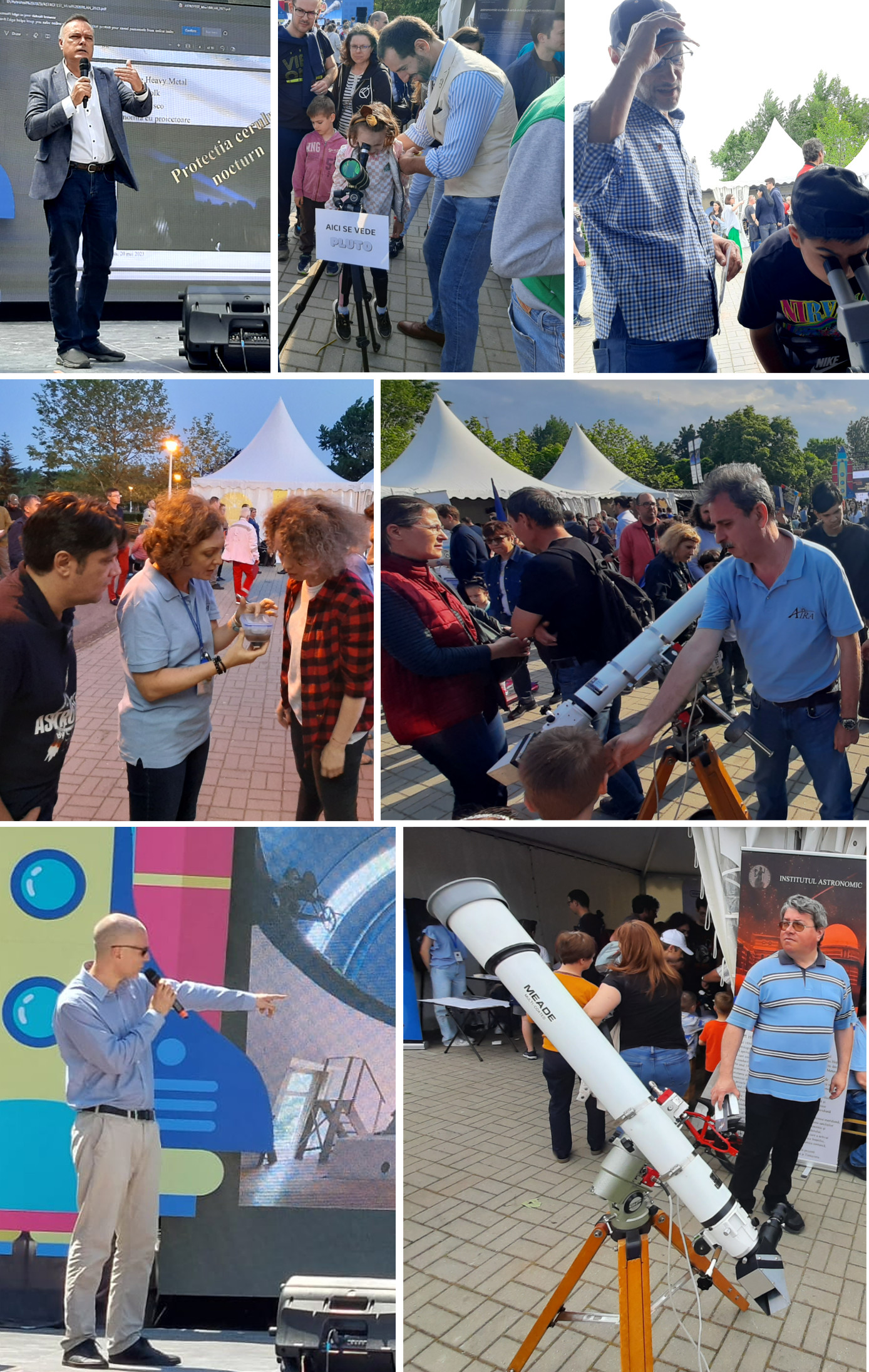
Astronomical Institute of the Romanian Academy - 115 years of research
On the 1st of April 2023, the Astronomical Institute of the Romanian Academy (AIRA) celebrates 115 years of continuous scientific endeavour. The governmental Decree issued by the Minister of Public Instruction and Religious Affairs, Spiru Haret, on April 1, 1908, created the Astronomical and Meteorological Observatory of Bucharest - the present day Astronomical Institute of the Romanian Academy. Back then, at the turn of the XXst Century, that new scientific institution was developed as the next step of the Romanian astronomy after its previous pioneering age. Since those times of the Old Kingdom of Romania, the building up of scientific knowledge and infrastructure has been advancing constantly, in favorable periods or during economic, politically and military turmoil.
Inside the Main Building of AIRA, a true astronomy palace of Romania constructed in between 1908-1912, the Romanian scientists brought and sometimes even designed, a number of great astronomical instruments such as the refractory telescopes Prin-Merz (1912) and Gautier-Prin (1926), the Zeiss Transit Instrument (1953), the Zeiss solar refractors (1957-1958), the Cassegrain Telescope (1964), the precise vacuum dome fundamental pendulums Le Roy (1930) and Riefler (1956), or the massive quartz clock Rohde & Schwarz (1967), large photographic equipment such as the camera AFU-75 (1970).
Always in the scientific service of our country, the Romanian astronomers calculated and reported for decades the Legal Time of Romania by studying the Earth’s rotation, our primordial clock.
During 1908-2023, the calculating and computing hardware used here by the astronomers, evolved from the old Odhner and Mercedes mechanical calculating machines to the present day AI scripts and reduction algorithms developed indoor at AIRA, running on a super-computer with hundreds of cores and as big as a medium-sized office.
In 1908, on the astronomical side, the Bucharest Astronomical and Meteorological Observatory had a 16 square meters Meridian Hall that hosted a 1893 Geneva-made refractory telescope, and another Bardou refractory telescope, working together with a few precise clocks. Today, AIRA has a vast human operated and AI robotic infrastructure in astronomy covering hectares of scientific parks and development platforms, that is composed of directly or remotely operated telescopes like those in Berthelot, Cluj-Napoca, Bucharest and Timișoara Astronomical Observatories, the MOROI network of all-sky cameras spread all over the territory of our Motherland, never falling asleep, stellar investigating hardware, algorithms and protocols, starting with our Sun, in various types of spectrum radiation from visible to radio and up to the advanced mathematical models. AIRA is nowadays dynamically integrated with the ESA projects and space missions flow of data.
Today, the former scientific research facilities such as the Meridian Hall or the Equatorial Dome, where the old instruments are preserved, are visited every year by thousands of children and adults. They hear and see with amazed eyes the story of the achievements of Romania in astronomy and of generations of scientists led by Nicolae Coculescu, Gheorghe Demetrescu, Ella Marcus, Călin Popovici, Constantin Drâmbă and others. They also understand that this was a national effort in astronomy and beyond it, a story of struggle, dedication, perseverance, heroism and humanity of the Romanian astronomers who fought in the scientific field as well as on the military battlefields under the flag of Romania.
Published on Apr 01, 2023
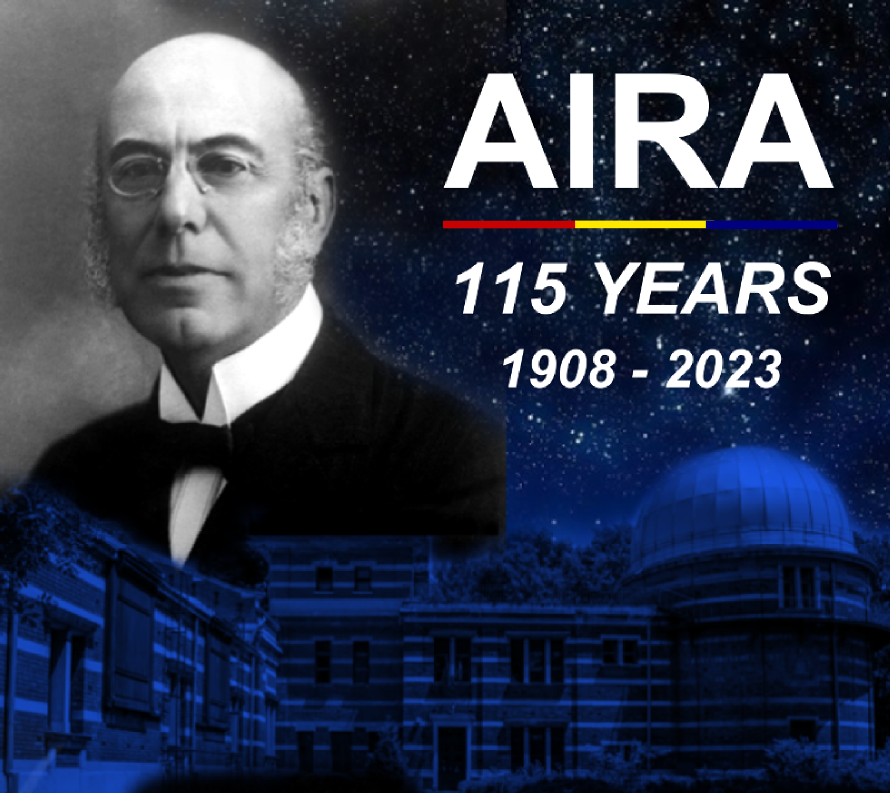
A solar explosion from an unexpected area of the Sun observed by AIRA
On March 13, 2023, during AIRA's solar patrol, we observed a spectacular phenomena - a filament eruption, followed by an C3.1-class flare. A C-class flare is a medium-sized flare that releases energies from 10−6 to 10−5 W/m2 (for peak flux range at 0.1-0.8 nm), an energy that would be equivalent to one 100 W light-bulb emitting light for more than 6 days.
AIRA's solar patrol data is observing the solar full disk in white light and Halpha every day the weather conditions permit, and the data is available at http://solar1.astro.ro/~solar/observations.html. The instrument is a refractor – Carl Zeiss Jena refractor 80/1200 mm with an Halpha filter (Solar Spectrum S-1.5 (0.3A)), while the CCD camera used is an Atik11000 (4008x2672 px, 0.009 mm, 16 bit).
The observed filament eruption was not associated to any active region on the Sun's surface, such as defined by NOAA and can be found at https://www.solarmonitor.org/, and was located at N27E07 (Carrington coordinates). The filaments’ length, before the eruption, was ~250000 km.
Published on Mar 15, 2023
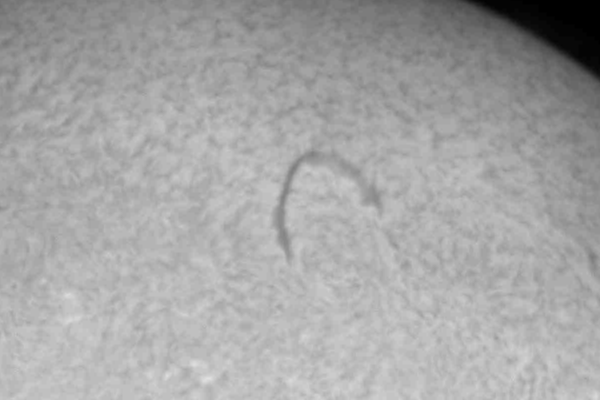
Romania's telescopes watch the Comet C/2022 E3 (ZTF)
The Astronomical Institute of the Romanian Academy, Cluj-Napoca Observatory, is currently taking telescopic images for subsequent study of the comet C/2022 E3 (ZTF), popularly known as the ”Green Comet” due to the specific green glow of its nucleus. The Romanian team of astronomers lead by Senior Researcher I Dr. Vlad Turcu is using for this purpose the AROAC T08 sensor and the Orion ShortTube80 refractory telescope together with the CCD SBIG STT1603 camera, and other scientific equipment as well.
The exposures were done at 2 seconds intervals and the time frame between two consecutive frames was 130.5 seconds.
The coordinates of the center of the image are:
RA 2000: 05h 03m 57.9s
DEC 2000: +42deg47arcmin28.7arcsec
Pixel size: 9.24arcsecx9.24 arcsec
FOV: 118.23 arcmin x 78.78 arcmin
Position angle: 351.33 deg from North
Published on Feb 08, 2023
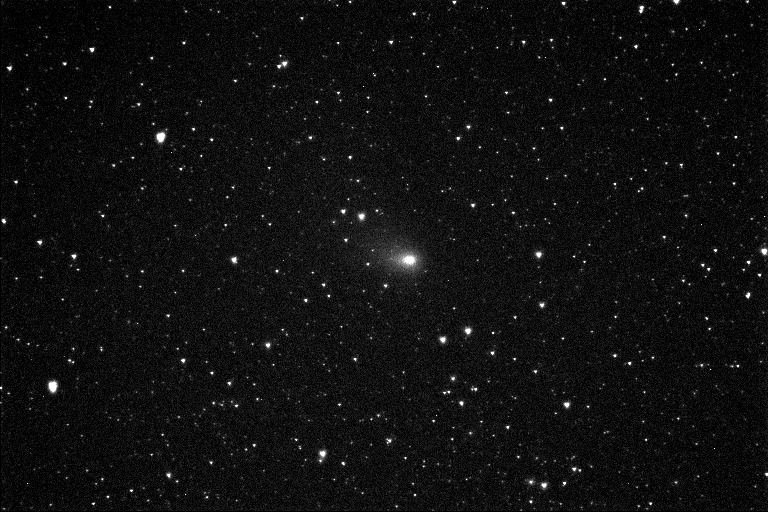
Huge Sunspot
Solar activity has recently significantly increased! Many solar flares, coronal mass ejections, etc. have been seen during the last few weeks. This is a consequence of the fact that the number of active region has increased.
A larger than Earth Sunspot was observed on the Sun on January 19, 2023. It
is so large that it can be visible with a pair of eclipse glasses!
The white light image was taken at the Bucharest Solar Observatory
of the Astronomical Institute of the Romanian Academy.
Published on Jan 20, 2023
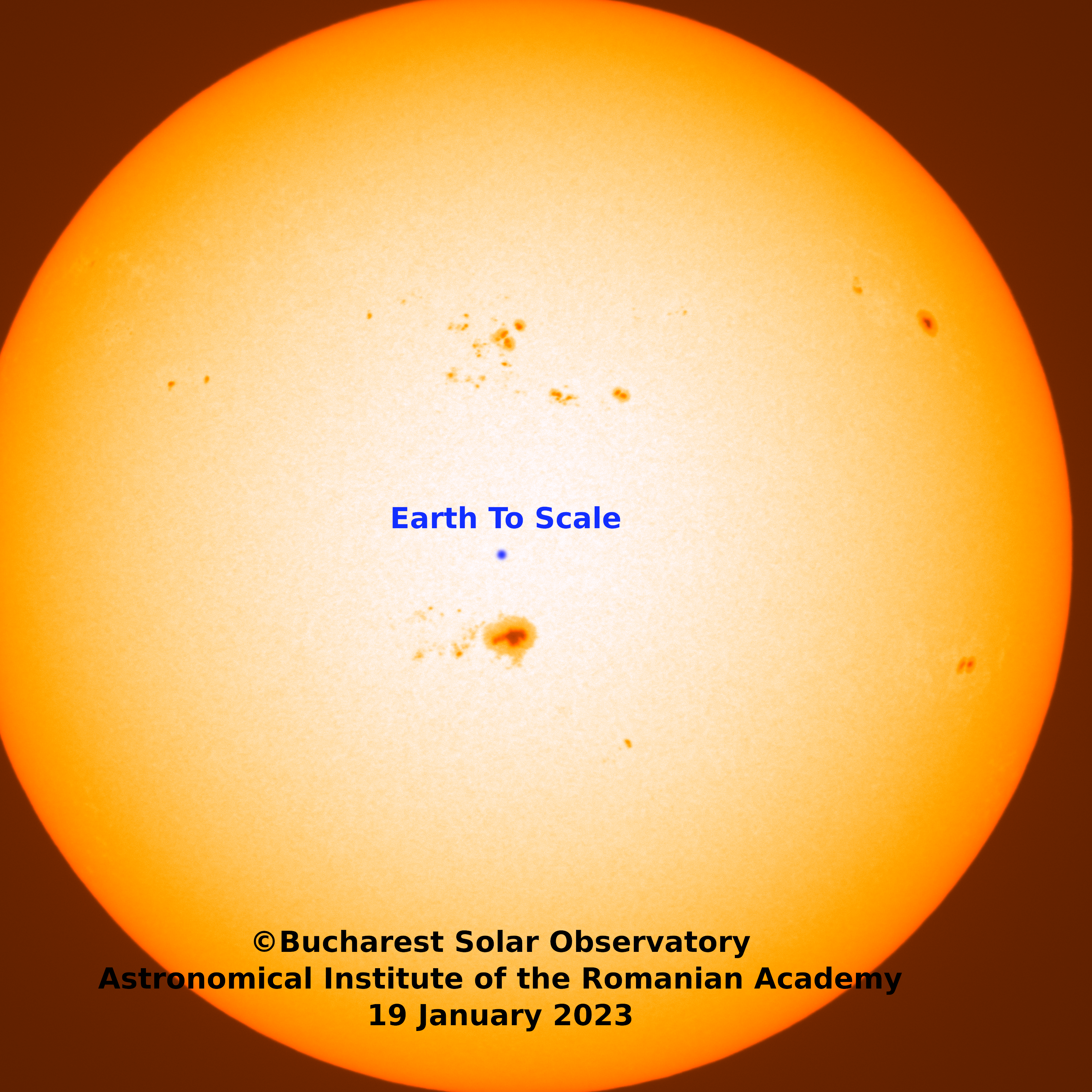
Happy New Year 2023
The Astronomical Institute of the Romanian Academy wishes you a happy and prosperous New Year 2023.
The greetings card was devoted to the Sun, our star. Its activity is monitored in various wavelengths, using instruments and devices owned by our institute. The correspondent database contains images obtained over several decades and used in scientific articles.
Nuclear reactions inside the Sun, mainly composed by atoms of hydrogen, are producing energy and release particles such are nuclei of helium and hydrogen. The particles are released into space by huge events called coronal mass ejections, sometimes associated to localized solar eruptions/solar flares.
Solar particles released in space, are electrically charged, and travel to space as a wind, the solar wind.
The solar wind interact with Earth's magnetosphere and could have an important influence for space activities of artificial satellites. Human activities on Earth might be also influenced, thus it is important to monitor and predict effects of solar activity on Earth. All the effects of solar activity on Earth and neighborhood are called space weather predictions.
Published on Dec 28, 2022
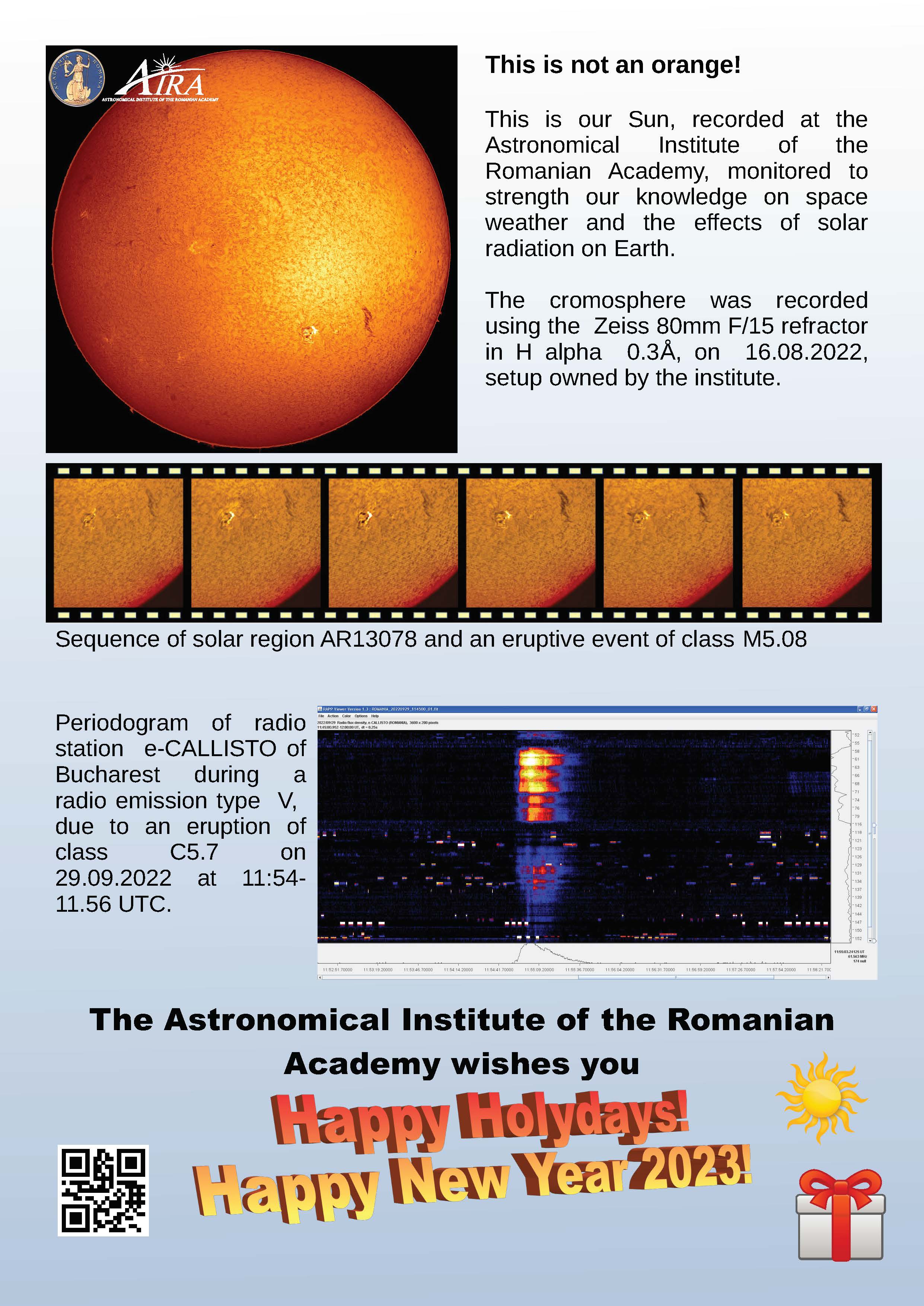
Fête de Science 2022. Culture, education and a tribute to French-Romanian cooperation in astronomy
On the 22nd of November 2022, the Astronomical Institute of the Romanian Academy (AIRA) was invited to a new edition of the cultural event Fête de Science, organized by the French Institute in Romania. The organizers of this event allocated us the beautiful Atrium hall of their headquarters in Bucharest, in order to display all the patrimonial objects and scientific hardware that were brought there by our Institute’s team.
At the beginning of the event, H.E. Ms. Laurence Auer, the Ambassador of France in Romania and Dr. Mirel Bîrlan, Director of the Astronomical Institute of the Romanian Academy, gave speeches to the audience regarding the French-Romanian scientific cooperation in the field of astronomy.
The classical lines of the Atrium Hall where the event took place, were complemented by some of the most interesting patrimonial values of Romania that we displayed there, which formed a small astronomical exhibition. Among these marvels, was the old refractory telescope Bardou, produced in France and used in Bucharest by the Romanian astronomers since 1893. From the early pioneers of the modern Romanian astronomy like Constantin Căpităneanu, to those well known of the present days, this telescope has seen many great personalities of the Romanian astronomy, among all the stars it has seen in the Universe. And, indeed, at Fête de Science 2022, it was Dr. Mirel Bîrlan the one who offered explanations to the audience about this emblematic telescope of Romania and its historical scientific context. Nearby in the exhibition hall, Dr. Alin Nedelcu installed a MOROI/FRIPON all-sky camera in a closed-circuit on a large TV screen, and offered scientific details on the capabilities and integration of these sleepless scientific electronic eyes and AI software modules that watch 24/24 hours the sky of Romania.
Dr. Diana Ionescu introduced the visitors to the astronomical research area of the physics of the Sun, by using theoretical and practical demonstrations. Other scientists of AIRA - Mădălina Trelia and Octavian Blagoi engaged the public in discussions about the research and study of the various types of objects in the Universe, from asteroids to distant stars and intergalactic nebulae. The scaled down replica of the Hubble telescope built by Octavian, was highly appreciated by everyone.
In the background, the mechanical, electro-mecanical and electronic calculating machines we included in the exhibition, were used by the AIRA’s historian Sorin Marin to tell the story of the mathematical requirements of knowledge, speed and precision met by generations of Romanian astronomers as well as by many others in the whole world.
A special guest at the event was Dr. Magda Stavinschi, Honorary Researcher and a former Director of AIRA. Our team also included the technical engineer Nicolae Dociu, who assisted every logistical aspect done during this event.
Published on Nov 26, 2022
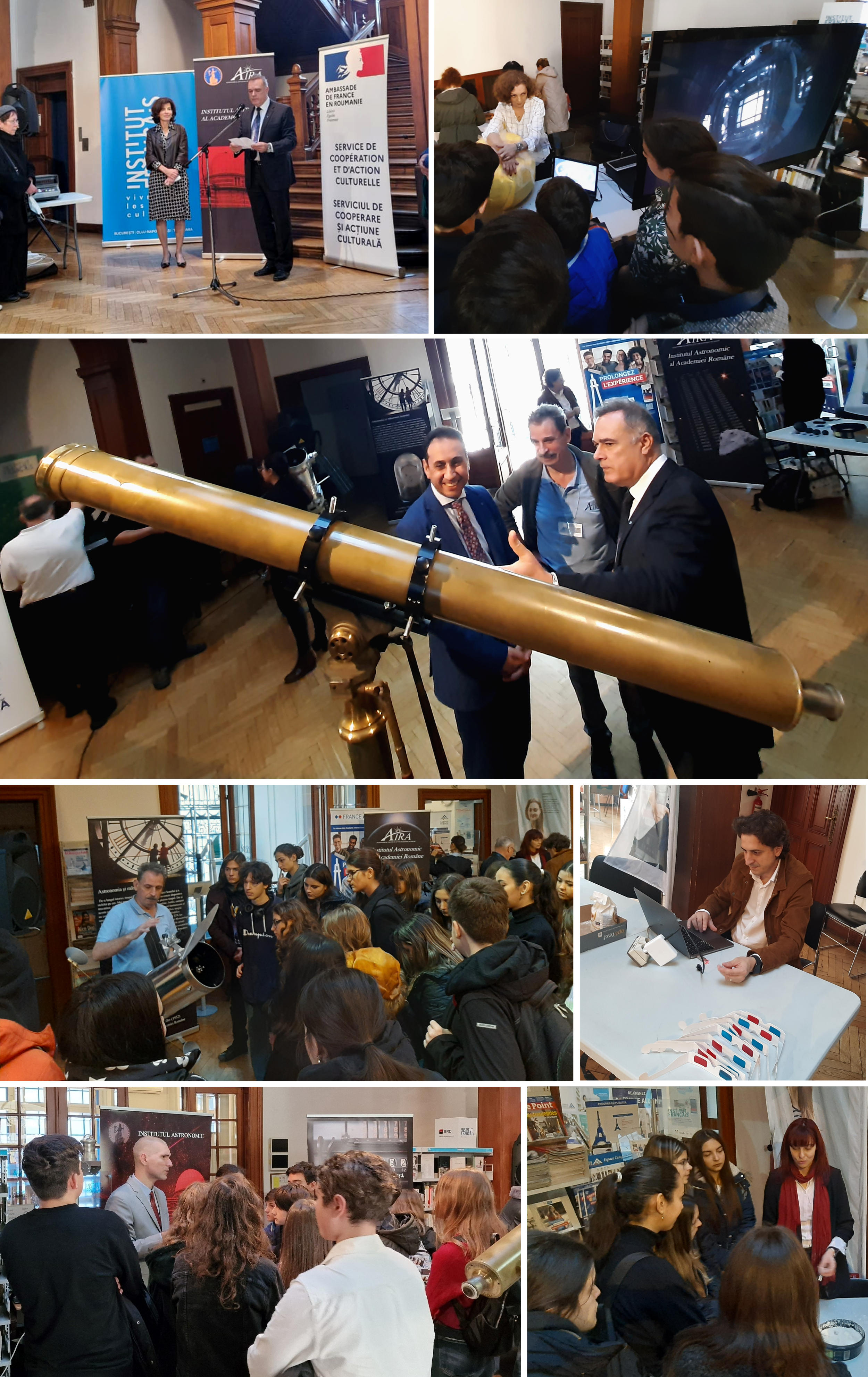
Eclipsa parțială de Soare observată de la Sediul Central al Academiei Române
Marți, 25 octombrie 2022, Institutul Astronomic a participat la organizarea unei sesiuni ghidate de observații astronomice ale eclipsei parțiale de Soare, vizibilă și din România. Evenimentul a avut loc la Sediul Central al Academiei Române din Calea Victoriei nr. 125, în intervalul orar 12-15, Timp Legal Român. Organizarea a fost asigurată de Academia Română, prin Institutul Astronomic al Academiei Române, în parteneriat cu Astroclubul București.
Observațiile au fost făcute cu instrumente astronomice dotate cu filtre solare – un telescop Newton-Dobson de 200 mm diametru și o lunetă de 80 mm, precum și cu ochelari speciali pentru eclipsă. Orientarea vizitatorilor s-a realizat de către personalul științific al Institutului Astronomic al Academiei Române, în colaborare cu entuziaștii astronomi amatori ai Astroclubului București.
Explicații și îndrumări au fost oferite de Magda Stavinschi - cercetător onorific al Institutului Astronomic al Academiei Române, Mirel Bîrlan - Directorul Institutului Astronomic al Academiei Romane, Dan Alin Nedelcu, Diana Ionescu, Mădălina Trelia și Sorin Marin - personal de specialitate din cadrul aceluiași institut, dar și de Marian Naiman, Cristian Suciu, Victor Vasile și Melania Boicescu de la Astroclubul București.
La eveniment au participat personalul din structura centrală a Academiei Române precum și numeroși pasionați de astronomie și știință din rândurile publicului general.
Published on Oct 27, 2022
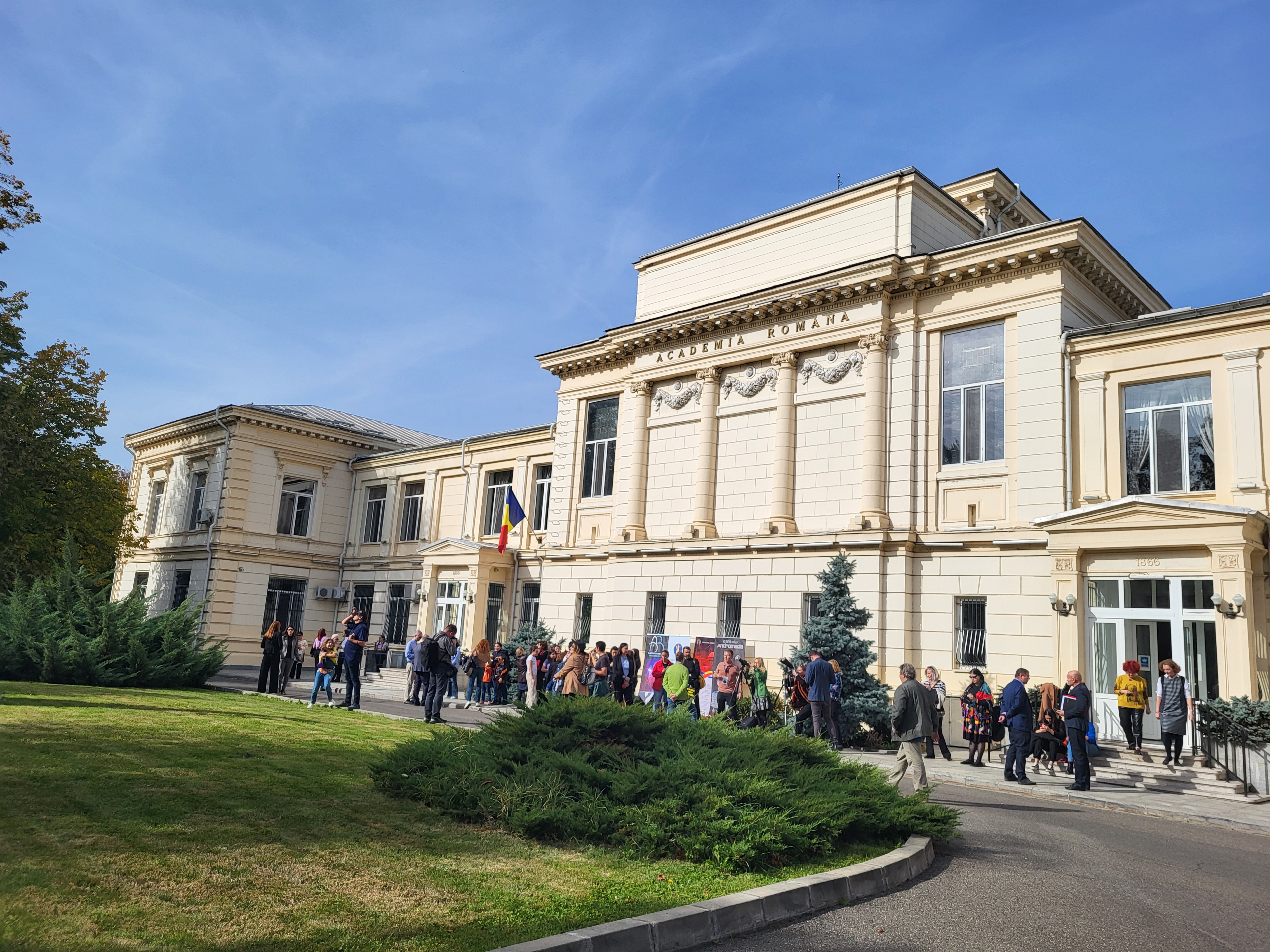
AIRA's outreach team at Bucharest Science Festival & European Researchers' Night
The outreach team of the Astronomical Institute of the Romanian Academy (AIRA) recently participated to Bucharest Science Festival and to the European Researchers' Night educational events which took place in Bucharest and Măgurele.
Aiming to promote science education and astronomy knowledge for the general public, our Institute welcomed visitors inside AIRA's scientific and educational park, during Bucharest Science Festival 2022. The newest attraction of this edition at AIRA was the virtual trip to Pluto from the Equatorial Dome, a construction which is the home of the largest refractory telescope in Romania. Here, AIRA’s astronomy historian Sorin Marin, told visitors the story of our Prin-Merz telescope and its contribution in taking some of the first pictures of the dwarf planet Pluto ever made in the whole world. Walking on the astronomical footsteps of Clyde Tombaugh, the famous US astronomer who discovered Pluto, and of NASA's extraordinary New Horizons mission, the visitors could admire through a Full HD projection some of the best real pictures of this celestial body. Totally engulfed by Pluto’s blue halo as photographed by the electronic eyes of New Horizons back in 2015, the public of the Equatorial Dome had the chance to make a comparison between the pictures of Pluto as taken from the Earth and the fantastic images obtained from its proximity due to the success of the New Horizons mission.
Bucharest Science Festival 2022 at the Astronomical Institute of the Romanian Academy also involved a visit inside the Sun Dome where the tour guides were our scientific researchers, Dr. Liliana Dumitru and Tavi Blagoi. The three Zeiss solar refractory telescopes of this dome were in use during the visits so the public could see the workflow and routine of the Romanian astronomers to scientifically monitor from Bucharest the spectacular activity of our near-by star, the Sun.
During the guided tours, our public had the chance to visit the Meridian Hall’s astronomy exhibition, and also to learn about the impressive historical legacy of the Bosianu House.
For the next two days following the Bucharest Science Festival 2022 event, AIRA's astronomy promoters moved to down-town Bucharest and to Măgurele city square in order to participate to another science fair, the European Researchers' Night 2022. There, our educational stand and telescopes gathered large crowds of people for almost 8 hours every day of the event, with long queues, enthusiasm and patience, for each person to have a glimpse to the filtered flares of our Sun, to Jupiter or to almost orbit over the craters and slopes of the Moon. For this event, the Astronomical Institute of the Romanian Academy had a team of 8 promoters of science and astronomy. Tavi Blagoi, Dr. Liliana Dumitru and Dr. Dumitru Pricopi were the telescopes masters and Solar System explorers together with the gathered public, while other members of our scientific staff - Dr. Dan Alin Nedelcu, Dr. Diana Ionescu, Dr. Ioana Boacă, Mădălina Trelia and Sorin Marin, organized science experiments and debates at the AIRA stand and gave interviews to the press. During all three days of the events the weather was perfect and several celestial bodies of our Solar System were observed through our telescopes.
Published on Oct 04, 2022

Characterization of the Fireballs Detected by MOROI in Romania
The meteors recorded by all-sky cameras in Romania were analyzed in a paper recently published in The Astrophysical Journal. In this paper we study the meteors detected by the FRIPON network in Romania in the time period January 2021 – April 2022 with the use of the MOROI all-sky cameras. We focus on the events with noticeable deceleration (V_f/V_0<0.8 , where V_f is the velocity of the meteoroid at the end of the luminous trajectory and V_0 is the initial velocity of the meteoroid). We characterize the fireball events with the use of the the ballistic coefficient α and the mass-loss parameter β. Based on this analysis, the events are classified in three categories: 1) meteoroids that are likely to produce meteorites, 2) meteoroids that can possibly produce meteorites, 3) meteoroids that are unlikely to produce meteorites. We computed the entry and final mass of each event. We identified a meteoroid that is likely to produce a meteorite on the ground and we analysed its past dynamical evolution. The article is available in Open Access.
Contact ioana.boaca@astro.ro
Published on Sep 12, 2022

M-Class Solar Flare
A M-class solar flare (M5.0) that was detected above the active region NOAA 13078 was also observed today from the Bucharest Solar Observatory. This region has been highly active during the last 24 hours with more than 10 C- and M-class solar flares.
Here is an animation of the Hα images from 06:23 to 08:35 UT. AR NOAA 13078 is visible in the lower right.
Contact: cristi.danescu (at) astro.ro
Published on Aug 16, 2022

Predicting CME Geoeffectiveness
New science on experimenting with different machine-learning methods trained on white-light coronagraph data sets (SOHO/LASCO) of close-to-Sun CMEs, to estimate whether such a newly erupting ejection has the potential to induce geomagnetic activity has been published in the Astrophysical Journal.
Coronal mass ejections (CMEs) are the most geoeffective space weather phenomena. They are associated with large geomagnetic storms, and have the potential to cause disturbances to telecommunications, satellite network disruptions, and power grid damage and failures.
The paper focuses on forecasting the geoeffectiveness of CMEs to exclusively use solar onset parameters, in order to ensure extended warning times. The model proposed correctly identified 80.28% of the geoeffective events, with a precision of 15.19%, based on fivefold cross-validation on the entire data set.
The paper can be read here. Contact diana.ionescu (at) astro.ro.
Published on Aug 06, 2022
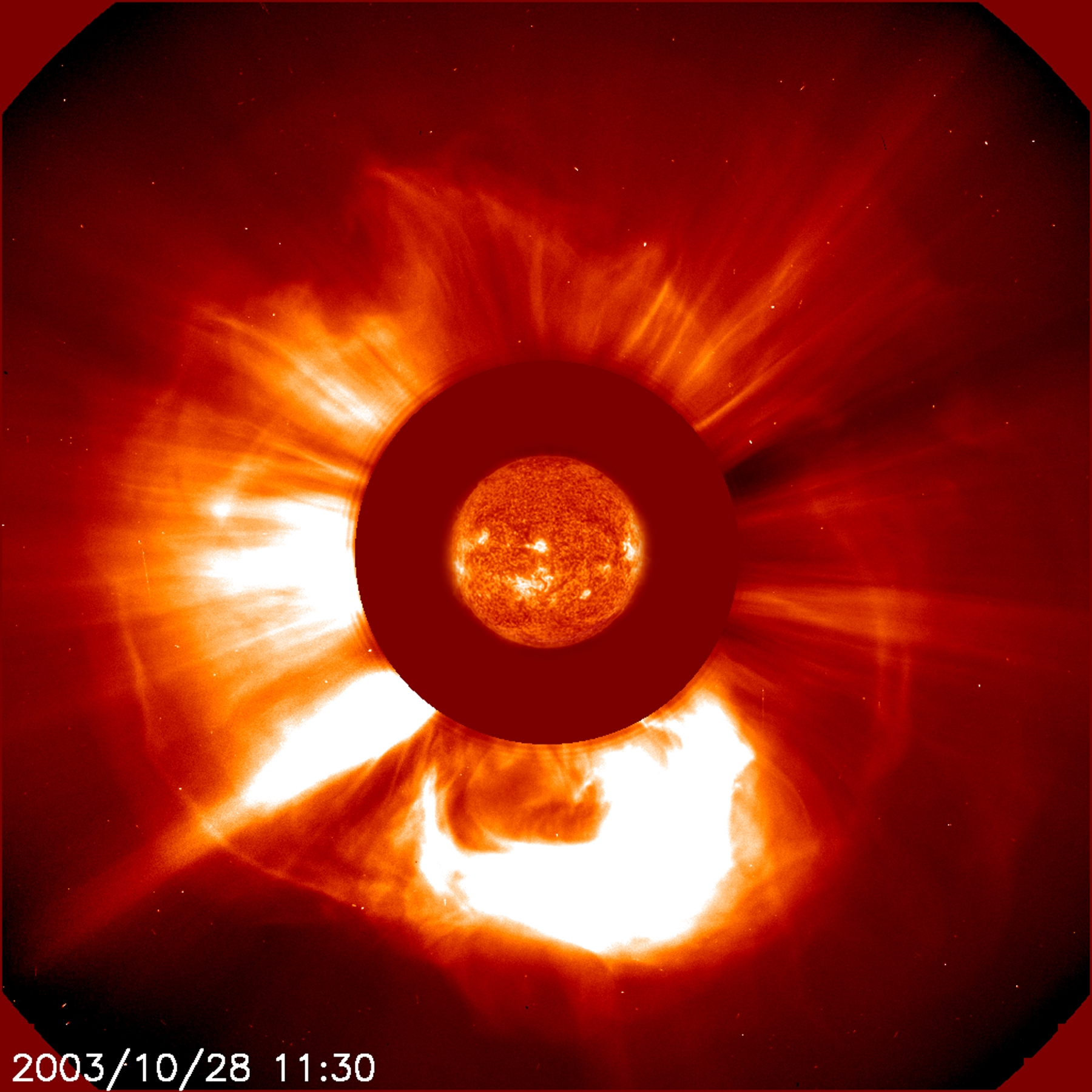
Conferință științifică internațională la Observatorul Astronomic din Cluj-Napoca
În perioada 6-8 iulie 2022, la Observatorul Astronomic din Cluj-Napoca s-a desfășurat conferința internațională "Theory, Observations and Data Processing in Astronomy, Astrophysics, Space and Planetary Sciences".
Organizată de Observatorul Astronomic din Cluj-Napoca din cadrul Filialei Cluj-Napoca a Academiei Române și de Facultatea de Matematică și Informatică a Universității "Babes-Bolyai" din Cluj-Napoca, conferința s-a desfășurat sub auspiciile Zilelor Academice Clujene 2022, având susținerea Institutului Astronomic al Academiei Române și al Comitetului National Român de Astronomie.
La conferință au participat cercetători și cadre didactice din domeniul astronomiei, astrofizicii, științelor spațiale și planetare, matematicii și fizicii din România, Ungaria, Statele Unite, Emiratele Arabe Unite, Brazilia și Iran. La conferință au fost de asemenea prezenți studenți ai Universității "Babes-Bolyai" interesați de tematicile abordate.
Lucrările prezentate au abordat tematici legate de științele planetare și de fizica Soarelui, studii ale sistemelor complexe de stele binare, triple, multiple, și studii teoretice de cosmologie și teoria găurilor negre. Abordările tematicilor au fost diverse, de la observațiile astronomice directe, analiza și modelarea lor, la prelucrarea acestora utilizând tehnici moderne de analiză cu ajutorul inteligenței artificiale și a proceselor de învățare automată. Datele de observație prelucrate astfel sunt utilizate pentru elaborarea de modele, analitice sau empirice, care în final tind să explice fenomenele și problematicile care au fost puse în discuție.
Published on Jul 13, 2022
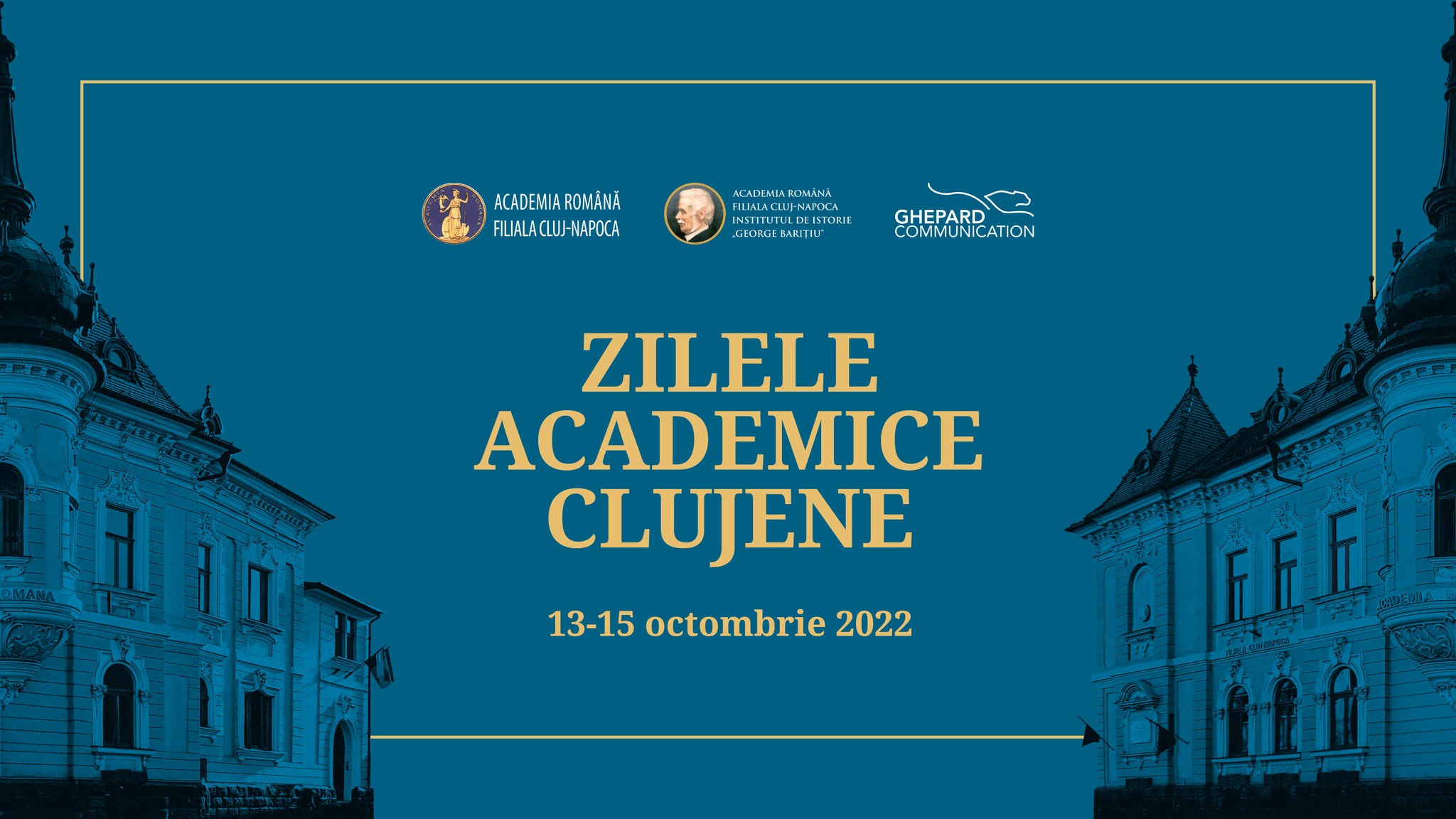
Asteroid Day 2022 - O zi a porților deschise la Institutul Astronomic al Academiei Române
Pe 30 iunie 2022, între orele 10 a.m. - 18 p.m., Institutul Astronomic al Academiei Române (IAAR), organizează o nouă ediție a evenimentului cultural „Asteroid Day”, sub forma unei zile a porților deschise. Intrarea publicului în incinta parcului științific și educațional al IAAR din București, str. Cuțitul de Argint, nr.5, se va face prin înscrierea pe lista de acces, a fiecărei persoane care dorește să participe la acest eveniment. Pentru înscrieri, Institutul Astronomic pune la dispoziția persoanelor interesate nr. de tel. 021 335 68 92 și adresa de email astro@astro.ro.
În cadrul evenimentului, publicul va beneficia de un circuit de vizitare, cu ghidaj de specialitate, a spațiilor de tip muzeal ale IAAR - Sala Meridian și Cupola Ecuatorială, și a principalelor arii de cercetare științifică - Cupola Soare și Clădirea Telescop.
În incinta acestor construcții, vor putea fi văzute unele dintre cele mai importante instrumente ale astronomiei românești din ultima sută de ani și mai bine - lunetele Prin-Merz și Gautier-Prin, ambele fiind clasate de Guvernul Românei ca Tezaur cultural al poporului român, alături de camera fotografică AFU-75, pendulele fundamentale Le Roy și Riefler, mașinile de calculat mecanice și electro-mecanice Mercedes și Rheinmetall, succedate apoi de cele electrice Elka și de primul calculator electronic românesc, Felix, și acesta prezent în expoziție.
În Sala Planetariu, astronomii profesioniști ai IAAR vor oferi publicului prezentări cu suport video despre aceste corpuri cerești misterioase ale Universului, asteroizii, în contextul activității românești de cercetare științifică din domeniul astronomiei.
Published on Jun 20, 2022
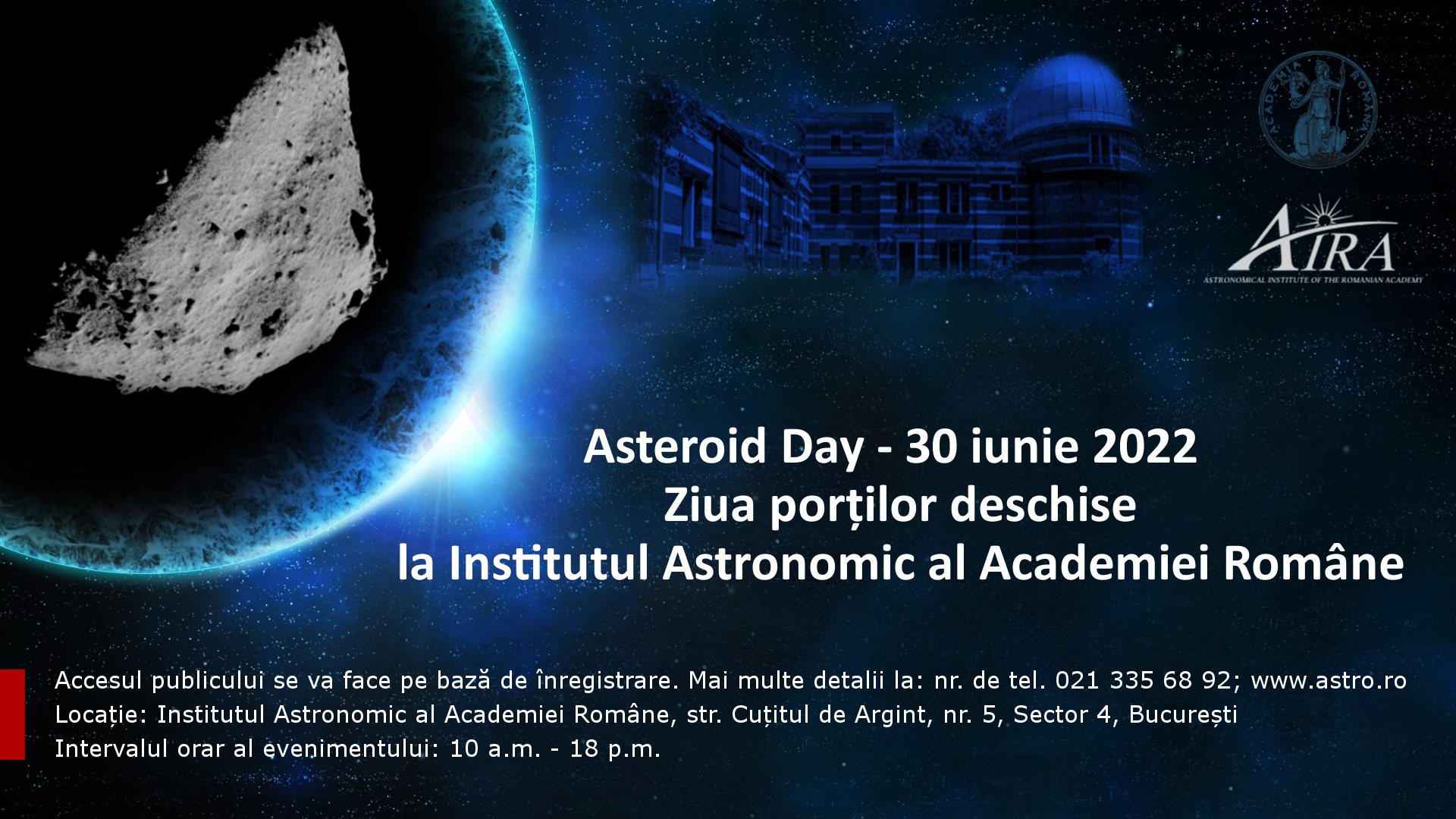
H.E. Mr. Rahul Shrivastava, the Ambassador of India, visited AIRA's headquarteres in Bucharest
Tuesday, 31st of May 2022, H.E. Mr. Rahul Shrivastava, the Ambassador of India in Romania, Republic of Moldova and Albania visited the headquarters of the Astronomical Institute of the Romanian Academy in Bucharest. He was welcomed by our Director Dr. Mirel Bîrlan and by a multidisciplinary team of AIRA members, which also included Dr. Alin Nedelcu, Dr. Diana Ionescu, Dr. Mark Rushton and Sorin Marin. Having a focus on the scientific cooperation between Romania and India in the specific fields of astronomy, astrophysics and the related sciences, the discussions affirmed the mutual interest and potential for a dynamic bilateral scientific agenda, to be followed at a national and international level. The scientific cooperation of the Romanian astronomers with their Indian counterparts of Kolkata, was also remembered during the talks as one of the foundation blocks upon which to continue building the next level of scientific partnership between our two nations.
During the visit, H.E. Mr. Rahul Shrivastava had a guided tour in our 3 Ha. scientific and educational park in Bucharest, and was presented in brief its main buildings, instruments as well as our scientific history of almost two centuries in this particular place of Bucharest. Walking of the foot steps of the first monarch of modern Romania, prince Alexandru Ioan Cuza, who was present here on the same property back in the XIXth C., H.E. the Ambassador of India in Romania visited the Bosianu House. In this building, the details of the 1859 Union between Moldova and Wallachia were set, which led to the creation of the modern Romanian state, a long dreamed, visionary achievement of many generations of Romanians and the nucleus of the Great Union of Romania on the 1st of December 1918.
Published on Jun 06, 2022
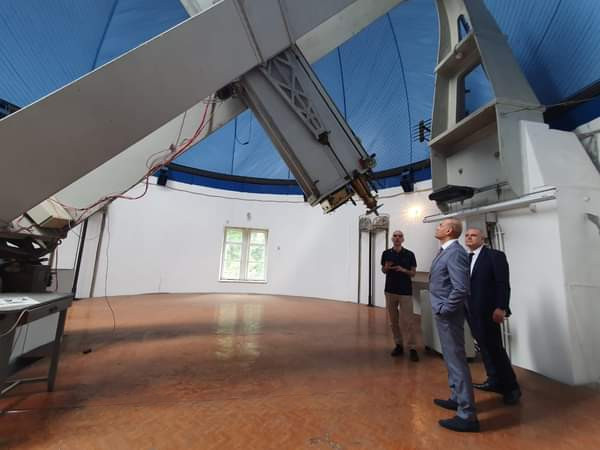
High Speed Streams Catalogue
A High-speed streams (HSSs) catalogue was issued for Solar Cycle 24 (SC24) by Besliu-Ionescu et al. (2022) and is available online at http://www.geodin.ro/varsiti/. Such a catalogue is extremely valuable as it help researchers understand the solar wind state close to the Earth from the point of view of the speed state at a given moment.
HSSs in the solar wind are an important physical driver of space weather. Along with other solar-driven phenomena, they may seriously impact various aspects of our increasingly sophisticated technological lives.
The HSS catalogue for SC24 considers only HSSs generated by coronal holes. These HSSs are recurrent, co-rotating streams with an apparent tendency to occur every 27 days. There are also non-recurrent HSSs produced by certain eruptive solar phenomena such as flares, coronal mass ejections, sudden disappearing filaments, or eruptive prominences.
The catalogue distinctively shows HSS basic properties, their sources, parameters of the interplanetary magnetic field, and various properties related to the associated geomagnetic storms.
The paper can be read here. Contact diana.ionescu (at) astro.ro.
Published on May 31, 2022
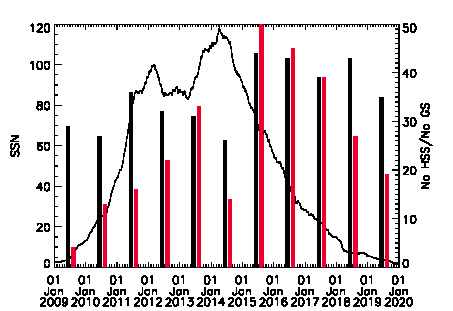
AIRA's participation to Astrofest & Space and Security for Eastern Europe Conference and Exhibition
The Astronomical Institute of the Romanian Academy took part recently to several cultural events: Astrofest 2022 (7 May 2022), a public science & astronomy fair and outreach event organized every year in Bucharest; and the conference and exhibition „Space and Security for Eastern Europe. Romania - 10 years in the European Space Agency” (16-19 May 2022).
During both events, the Astronomical Institute was present with a colorful, dedicated exhibition stand and a specific cultural offer in terms of information about our scientific researches on a theoretical and practical level, including the instruments and technologies we use in these processes. The constant flow of people around our exhibition stand, gave us the chance of presenting to the public, through a series of large info panels with graphics and text, the cultural and patrimonial heritage of our 3 Ha. scientific and educational park in Bucharest. Countless questions were asked and answers were given, while several group visits of our headquarters were booked as well.
For the second event, as the exhibition format allowed us, we brought in our stand additional hardware and IT support such as the two touch screen Info Points, quite popular among our visitors, and an all-sky MOROI/FRIPON scientific camera connected through a dedicated PC to a laser projector, which offered to the visitors a live demonstration of the image and optics parameters that are used by this type of AIRA equipment.
The events gathered at our exhibition stand a wide public, from kindergarten children who looked with amazed eyes and exclamations to the spaceship and astronauts models we presented as educational accessories for their age group, up to Romania’s first and only man in space, our cosmonaut and Romanian Army general, Dr. Eng. Dumitru Prunariu.
Published on May 23, 2022
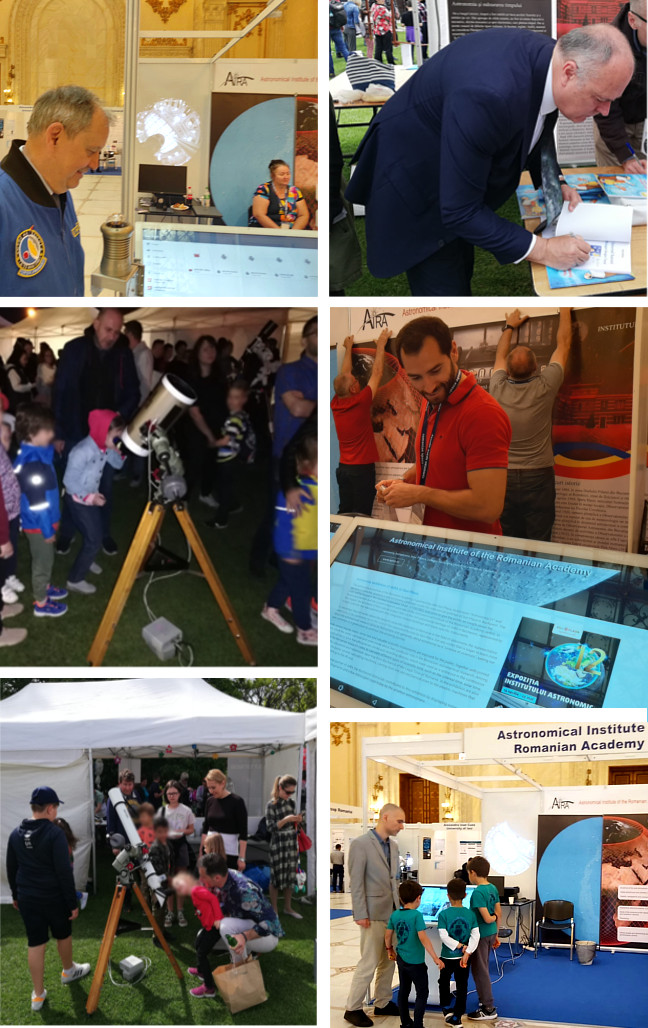
Astronomy exhibition of AIRA at Sun Plaza
The Astronomical Institute of the Romanian Academy, in partnership with Sun Plaza, Association “Astronomia 21” and Bucharest Astroclub, presents a new astronomy exhibition inside the commercial galleries of Sun Plaza in Bucharest. The event will be hosted in this location in between 15.04 - 27.05.2022, and aims to give the public an insight about the historical endeavor and the current research activities of the Astronomical Institute of the Romanian Academy (AIRA). In this respect, the emphasis of this cultural project falls on the rich patrimonial heritage of AIRA in Bucharest, represented by a large scientific and educational park that integrates several buildings and many specific instruments.
A messenger beyond words about the dynamic scientific evolution of Romania in the field of astronomy, the representative selections of our patrimony forms the core of this exposition hosted by Sun Plaza. For any visitor that is eager to learn more about the astronomical research done by Romanians and, generally, about astronomy as a “science of sciences”, seeing our new exhibition is a good place to continue this amazing journey.
Inside several display cases, some rare and valuable scientific instruments are exposed for the public, together with printed panels where the visitor can read and understand about their particular role in the Romanian astronomical research. Among these cultural items are a few ultra-precise clocks and recording devices, which were used as a reference in the continuous efforts of the Romanian research crews to calculate different types of scientific time, such as the sidereal time, solar time, including the calculation and nationwide reporting from Bucharest of the Legal Time of Romania. In the exhibition are also presented to the public several calculating machines, coming form the old mechanical ones to the electric machines that were used at AIRA up to the PC era.
As a close educational partner of AIRA, the Bucharest Astroclub, contributed to this exhibition by displaying some interesting meteorite fragments and a few telescopes used today by the amateur astronomers.
Published on Apr 28, 2022
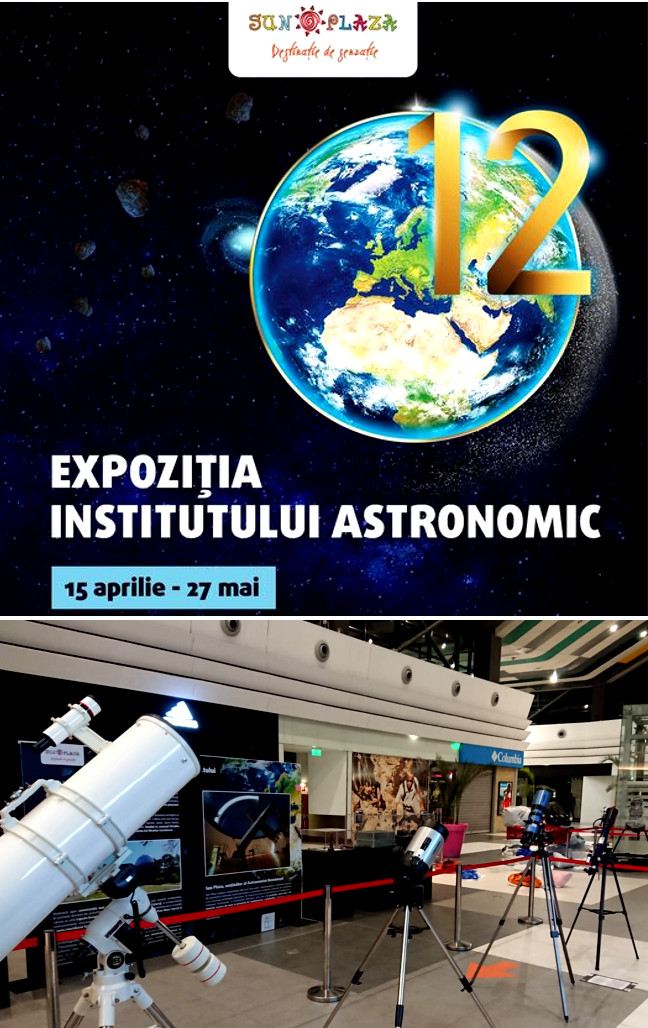
Discovery of new short period variable stars in open clusters using OmegaWhite data
Variable stars are cosmic sources of light that change their brightness in time due to various physical phenomena like atmospheric pulsations and/or geometrical configurations like eclipses.
The OmegaWhite (OW) is a wide-field high-cadence synoptic survey that is searching the Galactic Plane and Bulge for intriguing rare variable stars like the interacting ultra-compact binary systems (also known as AM CVn stars). These are pairs of white dwarf stars that exchange mass. The key point of the survey is that it was designed to explore a new space of parameters: namely to search for faint, low-amplitude stars that exhibit short sinusoidal modulations in their light curves, with periods shorter than 20 min. These are the rarest types of AM CVn stars and also the hardest to be detected by typical transient and spectroscopic surveys due to their observing properties (only 7 are known today).
OW started in 2011, and uses the OmegaCAM detector on the 2.5 m VLT Survey Telescope in Chile. A large number of intriguing variable stars was discovered and several have been followed-up. The most interesting examples like the progenitor of an AM CVn system, the second warm magnetic carbon white dwarf, etc. have been reported in several publications.
The latest study reports on the searching for variable stars with periods shorter than 1 hr in open clusters that happen to overlap the OW fields. Open Clusters (OCs) are gravitationally bound groups of tens to hundreds of stars that reside in the thin disk of our Milky Way. The novelty of this study is that no other open clusters survey has explored the faint stars in the space searched by the OW. The importance of this work is significant since a star that physically belongs to an OC has more known parameters (e.g. the same distance and age as the cluster) and can be used to test stellar physics theories. OCs population studies can also be used to trace the structure and evolution of our Galaxy.
A number of 92 variable stars were found into a set of 20 OCs. Several stellar catalogues were used, including the newest derived from data released by the Gaia mission, to assess if our stars are cluster members. Of these, only 12 have the highest probability to be members, 6 more have unknown status and the remaining are field stars. From spectroscopic follow-up data and studies of the Gaia colour-magnitude diagram, 12 members are low-amplitude delta Scuti pulsators - one of the most common class of variable stars, as expected. The shortest period star found is a 29.8 min delta Scuti with a chance of only 66 percent to belong to an OC. Most of the stars discovered are longer periodic variables. The Gaia Hertzsprung-Russell Diagram (Fig. 1) indicates that the new found cluster members (shown as red star symbols) are located on the main-sequence and beyond; the latter are evolved pulsators. Among the field stars (pink dots), there could also be main-sequence high-amplitude delta Scutis and eclipsing binaries. As reference, all the field stars within 50 pc from the Sun (smaller dark dots) are shown. It is assumed that these closer field stars are not affected by reddening. The report concludes that the new results are in agreement with the literature: there is a relative small number of delta Scuti stars that are members of OCs.
More information: The most recent project was presented in a new published paper in the Monthly Notices of the Royal Astronomical Society Journal: The OmegaWhite Survey for Short Period Variable Stars VI. Open Clusters, by Toma et al. https://doi.org/10.1093/mnras/stac802.
Published on Apr 07, 2022
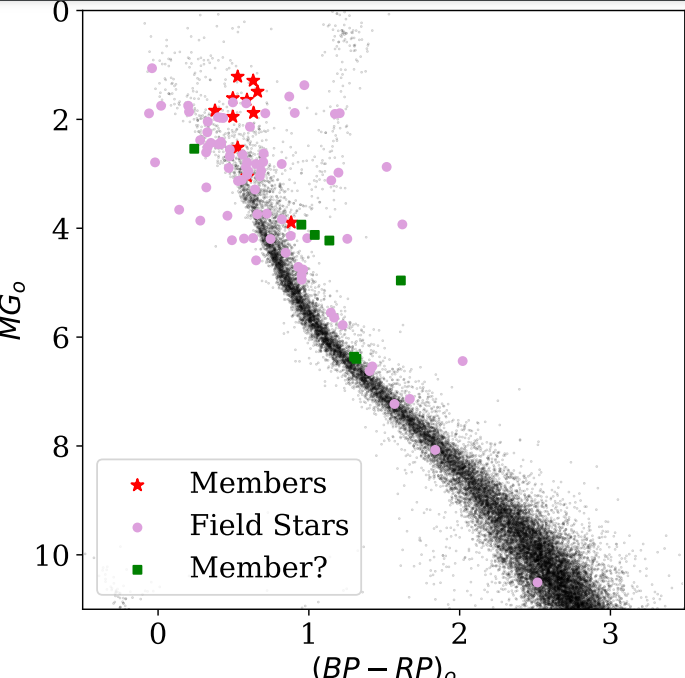
The first radio burst type II detected at Bucharest CALLISTO Station
The solar activity is increasing beyond the predictions for the solar cycle 25. Following a M4 class solar flare in the active region AR12975 occurred at 11:28 UTC, there was a radio burst type II and an Earth direction Coronal Mass Ejection (CME). The type II radio burst was detected and recorded by the CALLISTO radio spectrometer installed at AIRA Bucharest, a custom device for this kind of radio observations, developed by Christian Monstein (IRSOL, Switzerland).
Type II radio are characterized by a slow drift in frequency and two distinct bands of fundamental and harmonic frequencies of the hot plasma emissions. The electrons are accelerated by the shock-wave in front of a CME so these phenomena are strong correlated. In the picture, the blue to red contiguous zones represent the emissions and the other smaller lines and zones are Radio Frequencies Interference (RFI) caused by various terrestrial sources like computers, switching power supply, radio communications, static noise and so on.
A custom software was used to extract the relevant signal from the background noise, provided by Christian Monstein to all e-callisto network stations. More information on: http://www.e-callisto.org/. Contact: oblagoi (at) astro.ro
Published on Mar 29, 2022

Summer Time in Romania - 2022
As daylight time gets longer this period of the year, summer time in Europe will begin in Romania on Sunday, 27 March 2022, at 3 a.m. EET, when clocks will be set one hour ahead. This corresponds to the practice of Daylight Saving Time (DST) applied in the US, Canada, parts of Australia and to some other countries of the world. Today, only a minority of the world’s population uses DST, respectively a number of states located, in general, north or south of the tropics where daylight lasts shorter in the winter and longer in summer.
Regardless on how this is known as - Summer Time in Europe or Daylight Saving Time in other places of the world, this practice basically aims to save energy by the usage of more natural light in all human activities and less artificial light, which is energy consuming. As we still use to a significant extent fossil fuels to produce our energy, such a simple, conventional procedure like summer time observing leads to a significant cut in energy consumption and consequentially, of our carbon footprint on Earth.
Summer time in Europe is applied in most European countries, excepting Turkey, Iceland, Belarus and Russia.
This solution of making human activities more energy-effective was introduced in Germany in 1916, during the military and economic crisis of the First World War. However, for almost half a century afterwards, this practice was discontinued and then reintroduced at times in various places of the globe. The energy crisis of the late 1960s-1970s changed this dynamics ever since, and the European Summer Time is now used every year on most of our continent.
Published on Mar 24, 2022
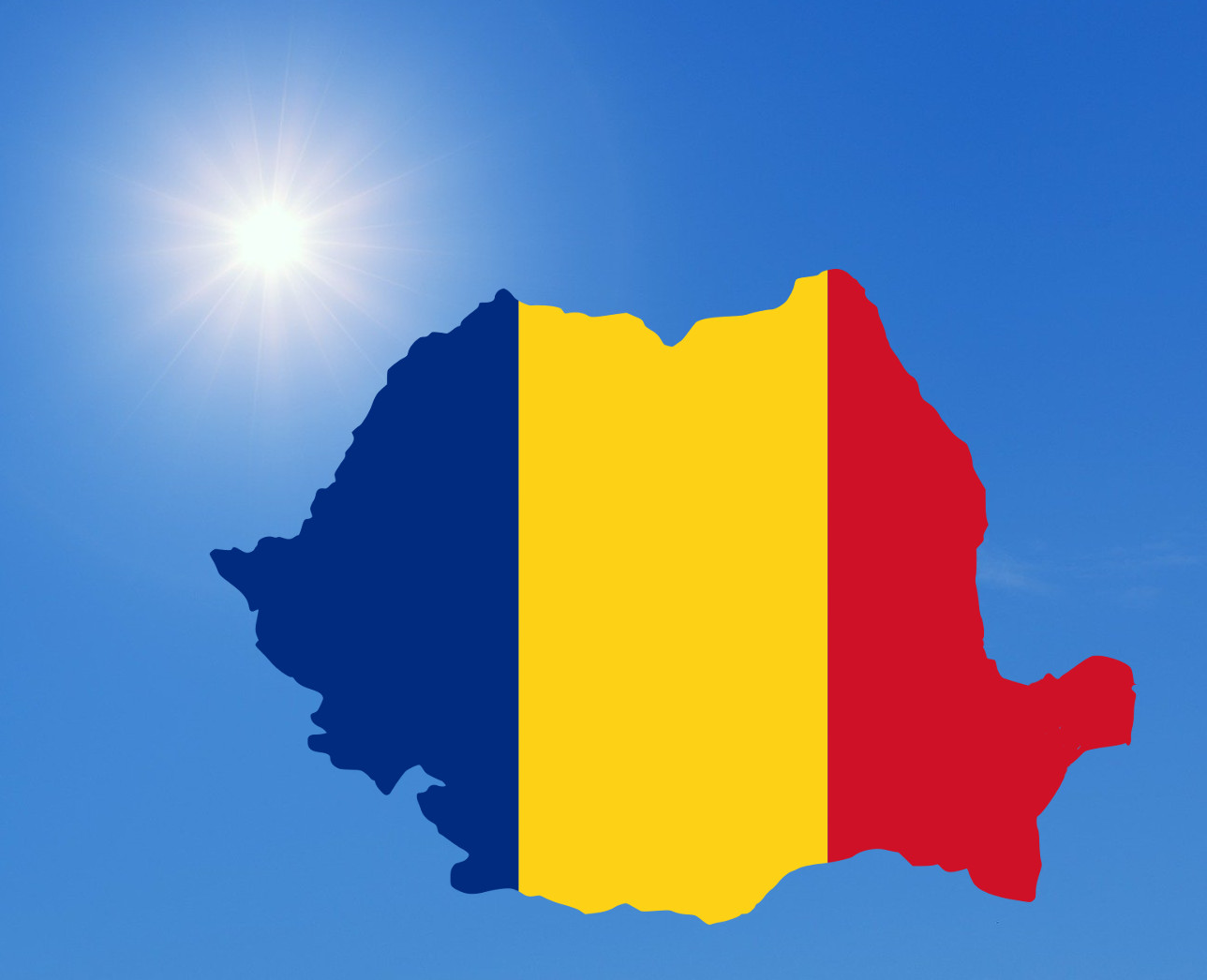
Fireball detected over Romania NE region
The MOROI network recorded a multiple event on 2022-02-17 01:37:20 UTC. The meteor was detected by 3 stations (Mădârjac- ROIS01, Suceava- ROSV01, Bârlad-ROVS01). The image shows in red the luminous trajectory of the meteoroid. The final point of the luminous trajectory is depicted by the yellow circle. The three MOROI stations that detected the meteor are coloured in green. The fireball detections from each stations are represented on the image below.

The meteoroid, with an initial mass estimated to be around 500 kg, vanished completely during the ablation phenomenon. The luminous trajectory started at 88 km altitude and ended at 39 km, the body having a final speed of 24.39 km/s.
Although there are no remnant pieces of material because the object burned completely, based on dark flight segment simulation for a potential surviving fragment with a mass of 50 g under realistic atmospheric wind condition, we estimate that such a body would have landed in the Republic of Moldova. contact: ioana.boaca (at) astro.ro
Published on Feb 22, 2022
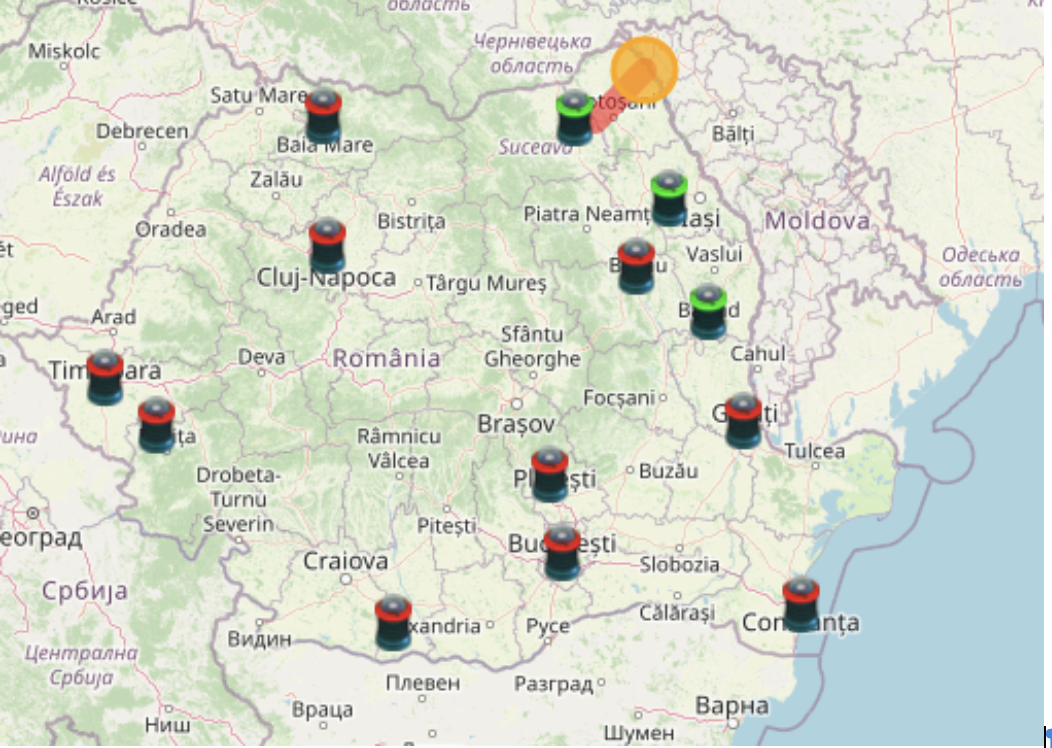
A robust method to measure large meteoroids colliding with the atmosphere
Meteoroids are fragments of asteroids which travel across the interplanetary medium. Although the Earth's atmosphere is bombarded by decimeter-size objects multiple times per day, a precise measurement of their size is poorly constrained. It is known that the larger they are, the lesser the chance of an impact with the Earth. However, their size is just too small to be observed by telescopes.
In a recent study, a more robust method of measuring fireballs was proposed. The semi-empirical relation is based on the entry mass of well known objects of ton-TNT scale impact energy, and their measured radiation. This relation takes as input the fireball radiated light along the atmospheric trajectory, to estimate the source energy of the meteoroid.
This photometric-based method is becoming be very accessible to use since the optical fireball networks are increasing both in number and size. Thus, a next step is to derive a more accurate size-frequency distribution of the meteoroids, and constrain the risk involved in expanding the space-based infrastructure.
The chart to the right shows energy calibrations of well known bolides around the ton-scale TNT. The error bar on the source energy represents the combined uncertainties from mass and velocity. The thin black line is the fit obtained by (Brown et al. 2002) corresponding to source energies greater than 0.1 kt TNT. This is continued with the dotted grey line onto this energy category. The red line is obtained as a best fit of the calibrated impact energy of bolides. The displayed objects have well studied trajectory data, and all except the small circles with black contour were the subject of successful meteorite recovery campaigns. The 100% luminous efficiency correspondence is represented by the thick line.
More information: This research was presented in a paper published in “Monthly Notices of the Royal Astronomical Society” (https://doi.org/10.1093/mnras/stab2968)
Published on Jan 25, 2022
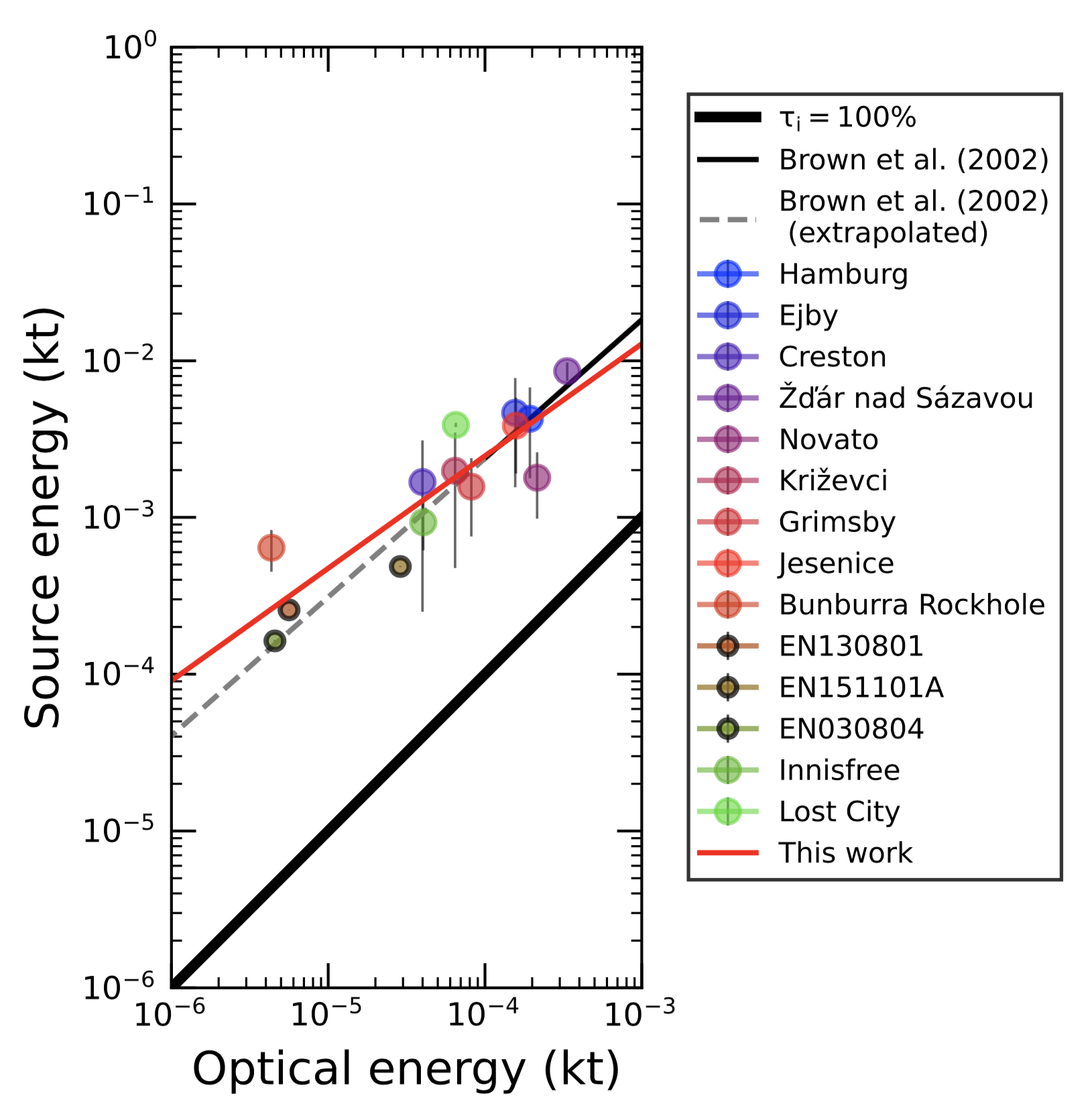
James Webb Observations from Bucharest
Telescopul spațial James Webb este un proiect al Agenției Spațiale a Statelor Unite ale Americii (NASA) al cărui cost de fabricație si lansare s-a apropiat de suma de 10 miliarde de dolari. Telescopul va scruta Universul în domeniul lungimilor de undă din infrarosu apropiat si mediu (0,6-26 microni). El are un diametru de 6,5 metri.
Lansarea lui s-a facut pe 25 decembrie la ora 14h20 timp legal român, de la baza de lansare din Guyana franceză, cu ajutorul rachetei europene Ariane 5. In proiectul James Webb a fost implicată si Agenția Spațială Europeană (ESA). Agenția Spațială Română (RoSA) este membru al ESA.
În seara de 25 decembrie 2021, la numai 6 ore după lansare, Telescopul Spațial James Webb a fost observat de la Institutul Astronomic al Academiei Române. În momentul observațiilor telescopul să afla la 95.000 de kilometri de Pământ.
Observațiile au fost făcute cu un telescop de 0.5 metri în diametru al Institutului Astronomic al Academiei Române, situat în București. Animația ce însoțeste acest text prezintă telescopul James Webb în drumul său către punctul Lagrange L2 al Terrei. In imagine se vede si treapta a doua a rachetei cu care s-a lansat telescopul.
Published on Dec 26, 2021
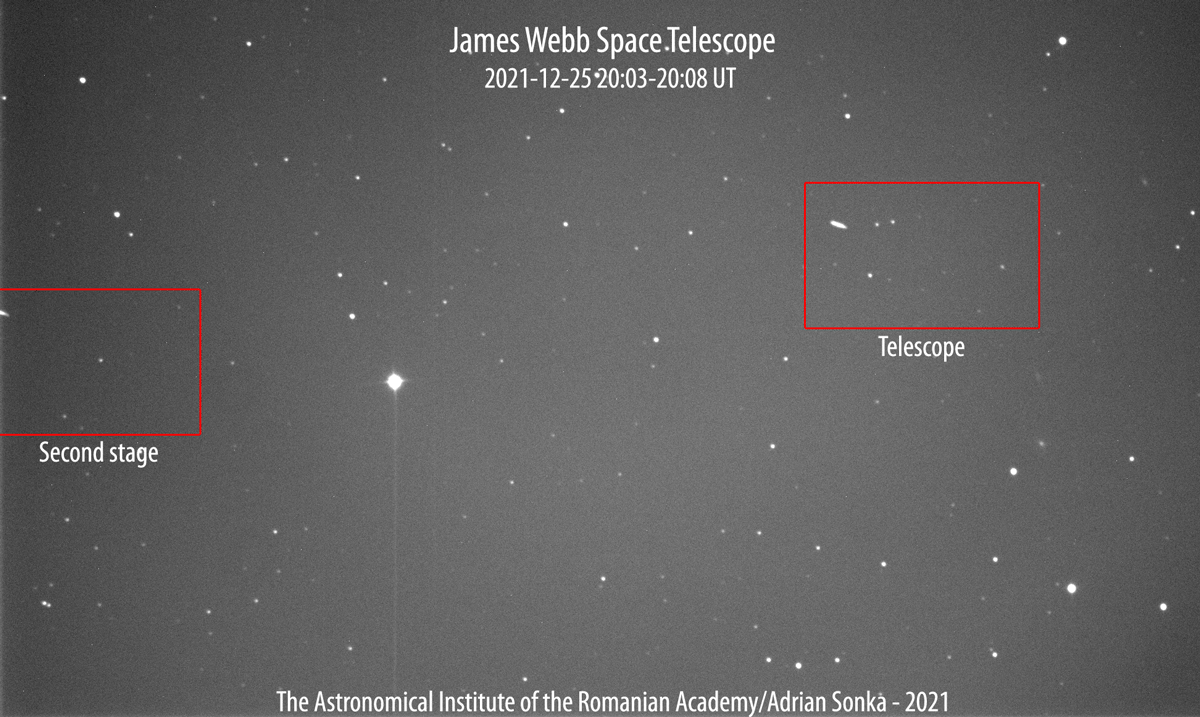
Winter Time 2021
On Sunday, October 31, 2021, clocks in Romania will be turned back by 1 hour and we will return to the standard hour which is considered the Winter hour. Thus, 4 am will become 3 am, Romanian Local Time. This way the difference between the local time of Romania, Winter time (EET) and the Coordinated Universal Time (UTC) will be of two hours. After the Autumnal Equinox, the daylight length decreases while the night length increases. Therefore, the time system of turning the clocks back in the Autumn and ahead in the Spring, was implemented in Europe during the last century for the people to use the natural light as much as possible in their daily activities and thus, save energy.
Published on Oct 30, 2021

Large Program of Asteroids using VLT/SPHERE instruments
The Director of the Astronomical Institute of the Romanian Academy (AIRA), Dr. Mirel Bîrlan is part of the international team that used the European Southern Observatory’s Very Large Telescope (ESO’s VLT) in Chile, and imaged the largest objects in the asteroid belt, located between Mars and Jupiter.
Never before had such a large group of 42 asteroids been imaged so sharply. The observations reveal a wide range of peculiar shapes, from spherical to dog-bone, and are helping astronomers trace the origins of the asteroids in our Solar System.
The detailed images of these 42 objects are a leap forward in exploring asteroids, made possible thanks to ground-based telescopes, and contribute to answering the ultimate question of life, the Universe, and everything [1].
“Only three large main belt asteroids, Ceres, Vesta and Lutetia, have been imaged with a high level of detail so far, as they were visited by the space missions Dawn and Rosetta of NASA and the European Space Agency, respectively,” explains Pierre Vernazza, from the Laboratoire d’Astrophysique de Marseille in France, who led the asteroid study published today in Astronomy & Astrophysics.
The previously small number of detailed observations of asteroids meant that, until now, key characteristics such as their 3D shape or density had remained largely unknown.
”Between 2017 and 2019, Pierre Vernazza successfully and efficiently led an international team of which I was part and which aimed to fill this gap by conducting a thorough survey of the major bodies in the asteroid belt”, said Dr. Mirel Bîrlan, the Director of the Astronomical Institute of The Romanian Academy (AIRA).
Most of the 42 objects in their sample are larger than 100 km in size; in particular, the team imaged nearly all of the belt asteroids larger than 200 kilometres, 20 out of 23. The two biggest objects the team probed were Ceres and Vesta, which are around 940 and 520 kilometres in diameter, whereas the two smallest asteroids are Urania and Ausonia, each only about 90 kilometres.
By reconstructing the objects’ shapes, the team realised that the observed asteroids are mainly divided into two families. Some are almost perfectly spherical, such as Hygiea and Ceres, while others have a more peculiar, “elongated” shape, their undisputed queen being the asteroid Kleopatra.
By combining the asteroids’ shapes with information on their masses, the team found that the densities change significantly across the sample. The four least dense asteroids studied, including Lamberta and Sylvia, have densities of about 1.3 grams per cubic centimetre, approximately the density of coal. The highest, Psyche and Kalliope, have densities of 3.9 and 4.4 grammes per cubic centimetre, respectively, which is higher than the density of diamond (3.5 grammes per cubic centimetre).
This large difference in density suggests the asteroids’ composition varies significantly, supporting the theory that the celestial objects were formed in different areas of the Solar System and migrated to their current location.
These findings were made possible thanks to the sensitivity of the Spectro-Polarimetric High-contrast Exoplanet REsearch (SPHERE) instrument mounted on ESO’s VLT.
Astronomers will be able to image even more asteroids in fine detail with ESO’s upcoming Extremely Large Telescope (ELT), currently under construction in Chile and set to start operations later this decade.
”The study of asteroids is a field where Romanian researchers contribute constantly and significantly. As an associate astronomer of the Astronomical Institute of the Romanian Academy and astronomer of the Paris Observatory, I encouraged and facilitated collaborations between researchers from Romania and France. We have two Romanian doctoral students and researchers with the title of doctor who study small bodies - comets, asteroids, meteoroids - in the Solar System, "said Mirel Bîrlan.
Among the recent results of Romanian researchers are observations of the potentially dangerous asteroid (99942) Apophis, made at the Astronomical Observatory in Cluj-Napoca, Feleacu station, observations of the asteroid Pallas, observations of the asteroid (6478) Gault.
"The Institute's strategy will continue to support research efforts in these directions. Our projects include studies of asteroids approaching dangerously close to Earth, the relationships between asteroids, comets and meteors, the interaction of interplanetary matter with Earth, studies of the dynamics of natural and artificial objects near Earth, "said AIRA Director Mirel Bîrlan.
Notes
[1] In The Hitchhiker's Guide to the Galaxy by Douglas Adams, the number 42 is the answer to the "Ultimate Question of Life, the Universe, and Everything." Today, 12 October 2021, is the 42nd anniversary of the publication of the book.
More information:
This research was presented in a paper to appear in Astronomy & Astrophysics
https://www.aanda.org/articles/aa/full_html/2021/10/aa41781-21/aa41781-21.html.
Original Press release colud be find at the address: http://rosa.ro/index.php/en/news-menu/stiri/5704-meet-some-of-the-42-biggest-asteroids-in-our-solar-system
Published on Oct 13, 2021
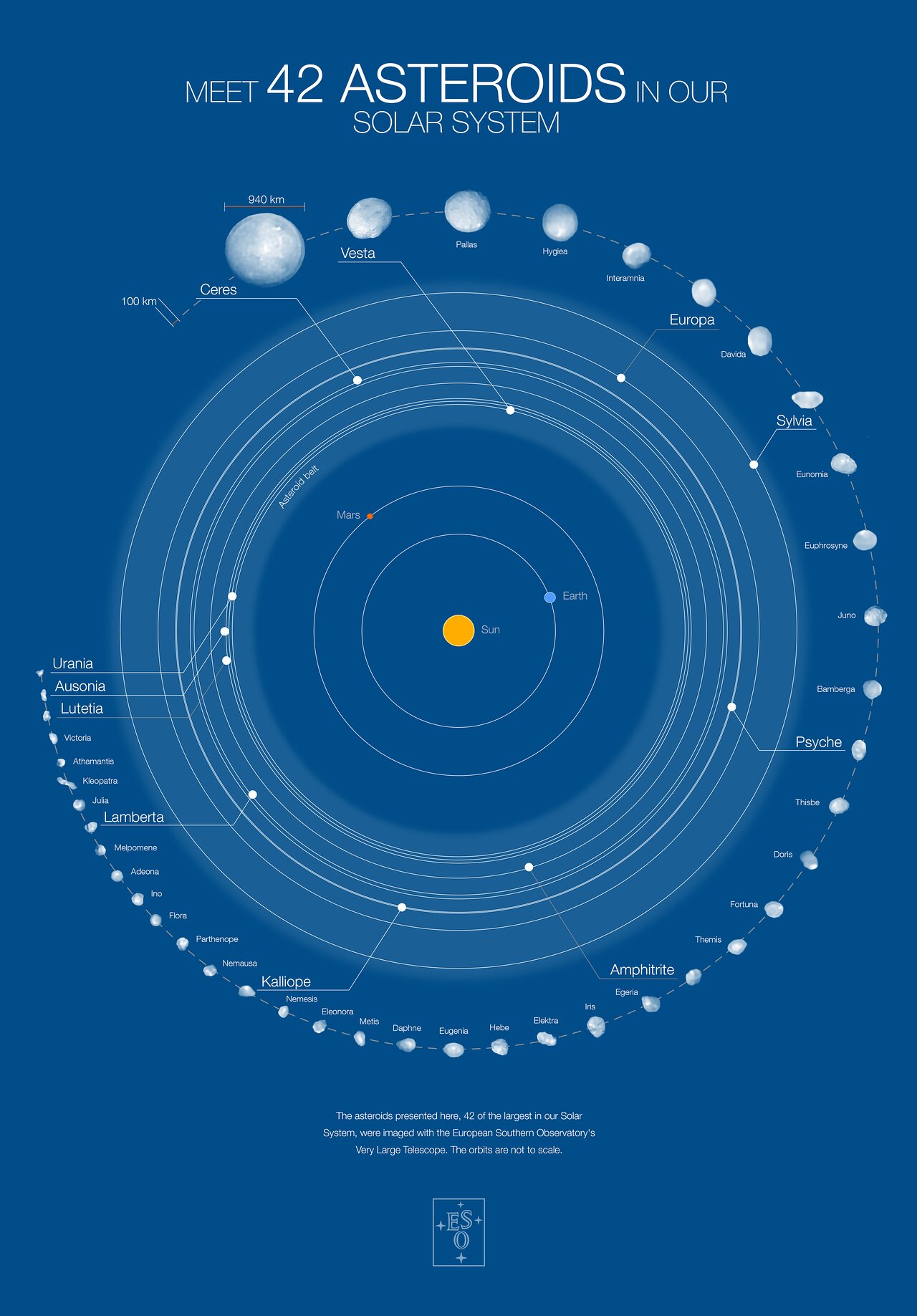
Autumn equinox 2021
By definition, the moment of autumn equinox in the Northern Hemisphere corresponds to the precise time when the apparent geocentric longitude of the Sun is equal to 180 degrees. But, a more common understanding of this phenomenon in our society is that it happens on a certain day of September when daytime equals the duration of nighttime. In 2021, the autumn equinox will arrive on Wednesday, 22nd of September, at 19 hours 21 minutes and 06.77 seconds UTC, respectively at 22 hours 21 minutes and 06.77 seconds (UTC+3h) which is the Current Local Time in Romania, as we use the Eastern European Summer Time (EEST). At the moment of the autumn equinox, in 2021, the geocentric latitude of the Sun equals -0.56″, the right ascension has a value of 11 hours 59 minutes and 59.985 seconds, while his declination is -0.52″. As we can see by looking at the values of geocentric latitude and right ascension, they are close to 0 and respectively to 12 hours. This is the reason why we use to say about the Sun during this moment of the autumn equinox that it is in a direction opposite to that of the vernal point. Scientifically, this statement is considered partially true and it can be generally accepted as the apparent diameter of the Sun is about 30 arcminutes. The autumn equinox in the Northern Hemisphere of the Earth corresponds to the spring equinox in the Southern Hemisphere. The calendar used nowadays in Romania is the Gregorian calendar. This time instrument was created in 1582 in order to adjust the calendar drift with respect to the succession of the seasons. Therefore, according to the Gregorian calendar, the dates of the autumn equinox will always be during 21-24 September. Actually, in most years, the autumn equinox will arrive on the 22nd or 23rd of September while the dates when this will occur on the 21st or on the 24th of September are less frequent. For example, in the year 2092, the autumn equinox will occur on the 21st of September for the first time since the creation of the Gregorian calendar. Similarly, in 1803 the autumn equinox took place on the 24th of September, for the first time since the creation of the Gregorian calendar. Image in full resolution is available here.
Published on Sep 20, 2021
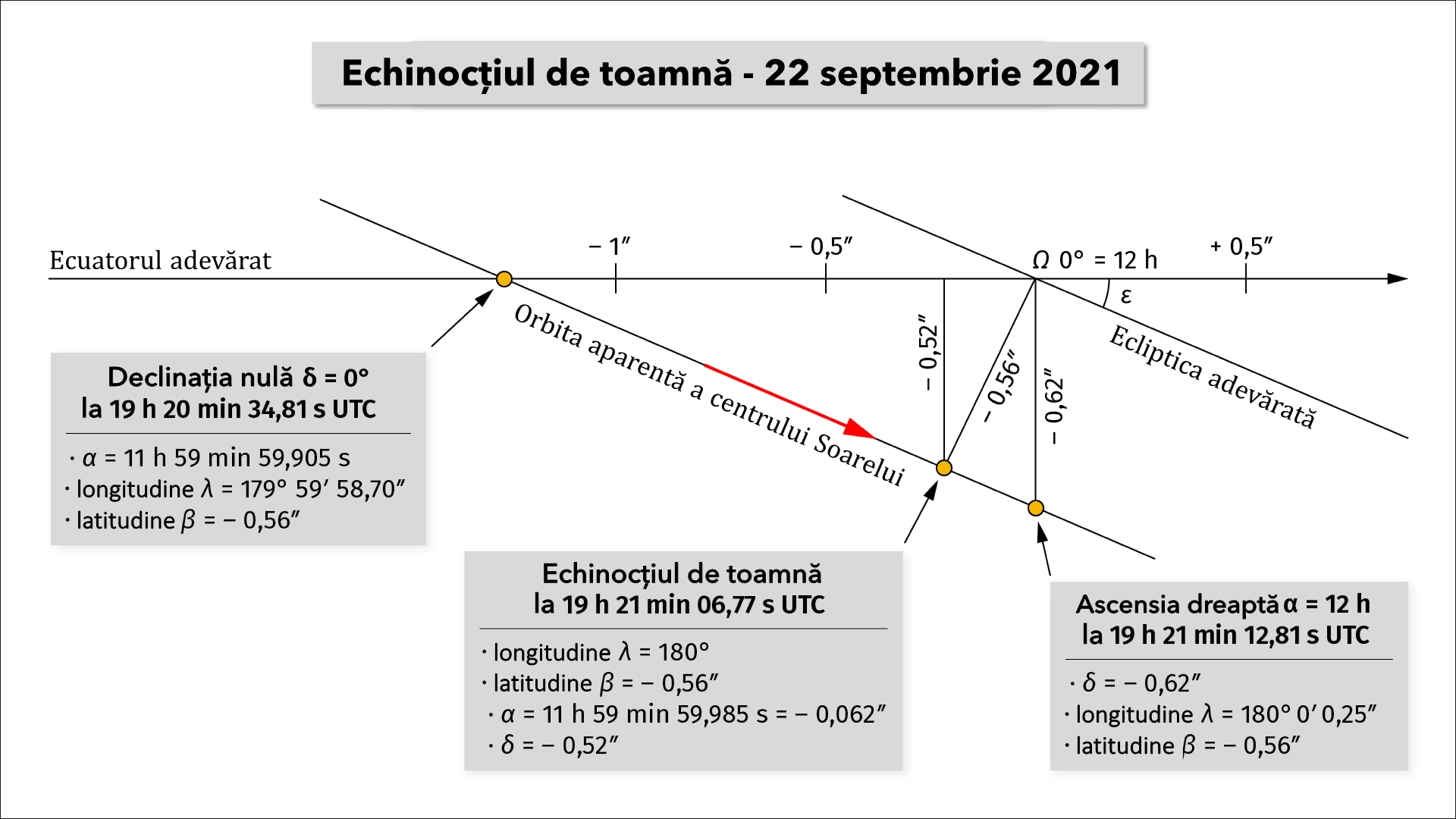
Solar image, AIRA - 01.09.2021
A chromospheric solar image with the active region AR12860, made at Bucharest Solar Observatory on 01.01.2021. This region has the greatest activity at the beginning of the 25th solar cycle, with an M4.7 class and several C1-C9 class eruptions. Instrumentation used: Zeiss refractor 110mm F/15, Halpha Baader Solar Spectrum 0.3A, 0.4X reducer, camera ASI290MM mono. Processed in AutoStakkert 3 and gimp. In this image different features of the solar activity in the chromosphere region can be seen: sun dark spots, plages (bright regions of very hot plasma), flares, filaments of cold plasma, fibriles, prominences, and spicules at the limb. Author: scientific researcher Octavian Blagoi. Annotated colorized image in full resolution available here.
Published on Sep 03, 2021

A group from Nicolae Bălcescu Youth Cultural Center visited AIRA
Members of „Nicolae Bălcescu” Youth Cultural Center and a group of 18 students from several Bucharest high schools were welcomed today at the Astronomical Institute of the Romanian Academy. Their visit was joined by the B1 TV crew which made interviews and a news report. During the event, the AIRA team was represented by our Director, Dr. Mirel Bîrlan, and by historian Sorin Marin. The astronomy promoter Daniel Berteșteanu from Bucharest Astroclub, was also invited and took part in the event.
The participants had the chance to attend several science presentations as they observed the Sun through a refractory telescope using an H-alpha filter, astronomy lessons in the Planetarium Hall and didactic laboratory demonstrations with projector support and various specialized hardware and software.
All these were followed by a relaxing guided tour which included: the Ecuatorial Dome - where it is preserved the largest refractory telescope in Romania, the marvels of Meridian Hall, Bosianu House, Sun Dome, and Telescope Building. While walking towards Bosianu House, a neo-gothic architectural jewell, the students learned they were walking on the footsteps of Prince Alexander John Cuza, who was present in the same house before the 1859 Union, and who later became the first monarch of modern Romania. They have also been told about Constantin Bosianu, Doctor in Law at Sorbonne University in Paris and the owner of the house and its surrounding property for a few decades in the XIXthC., who dreamed with his mind, believed with his heart, and worked day after day for the unification of the Romanian Principalities Moldova and Walachia and the creation of modern Romania.
Published on Aug 11, 2021
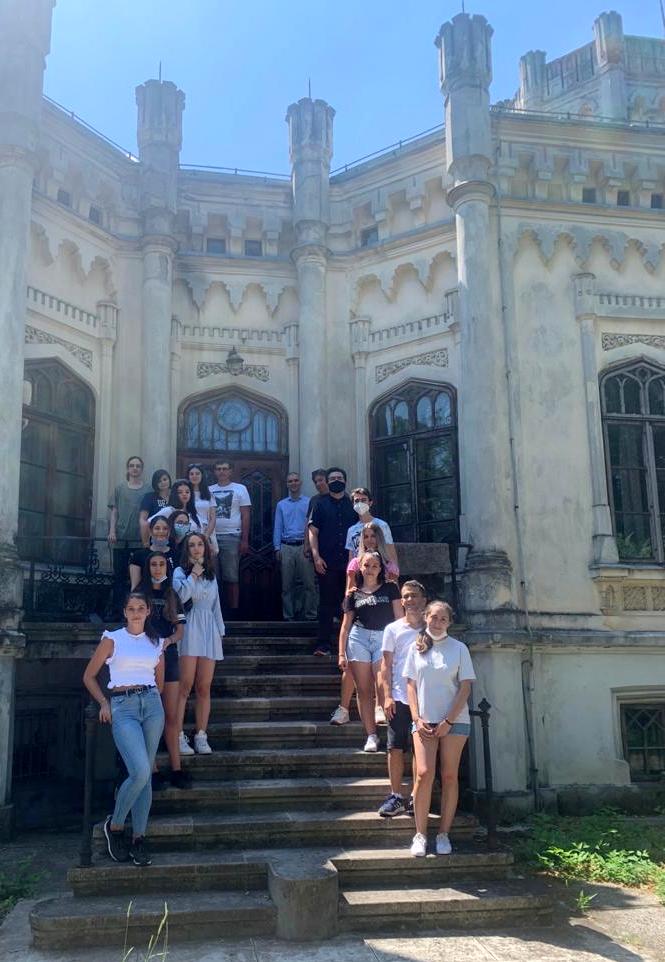
Asteroid (248370) 2005 QN173 became active
Asteroidul (248370) 2005 QN173 aflat în centura principală, cu o perioadă de revoluție de 5,37 ani, are un aspect comentar. Coada a apărut în jurul datei de 7 iulie 2021, fiind descoperită pe imaginile sistemului automat ATLAS. Coada se datorează unei ciocniri sau dezintegrarii din cauza rotației prea rapide. În urma acestui eveniment, asteroidul este observat periodic de la Observatorul Astronomic de la Berthelot al Institutului Astronomic al Academiei Române. Prezentăm o imagine din data de 8 august, în care se vede scurta coadă a asteroidului (credit A. Sonka).
Published on Aug 10, 2021

ASTROFEST 2021
The Astronomical Institute of the Romanian Academy (AIRA) took part on July 23-24, AstroFest 2021 event, organized by the Știință & Tehnică team and the SCIENCE & TECHNOLOGY Association in Crângași Park. The purpose of this event was to popularize astronomy and space sciences, through presentations accessible to the general public (experiments, demonstrations, games, etc). The Astronomical Institute participated with astronomical instruments, informative posters and other materials designed to increase the attendants interest in science. The relatively good weather allowed for astronomical observations on various objects such as the Sun, Moon, Planets and Stars. During the event, the AIRA team also engaged with the public on the topic of science instrumentation, on Q&A sessions on the stage, and provided details about the Institute's main scientific activities. (AIRA Team: Octavian Blagoi, Simon Anghel, Ruxandra Toma, Ioana Boaca)
Published on Aug 03, 2021
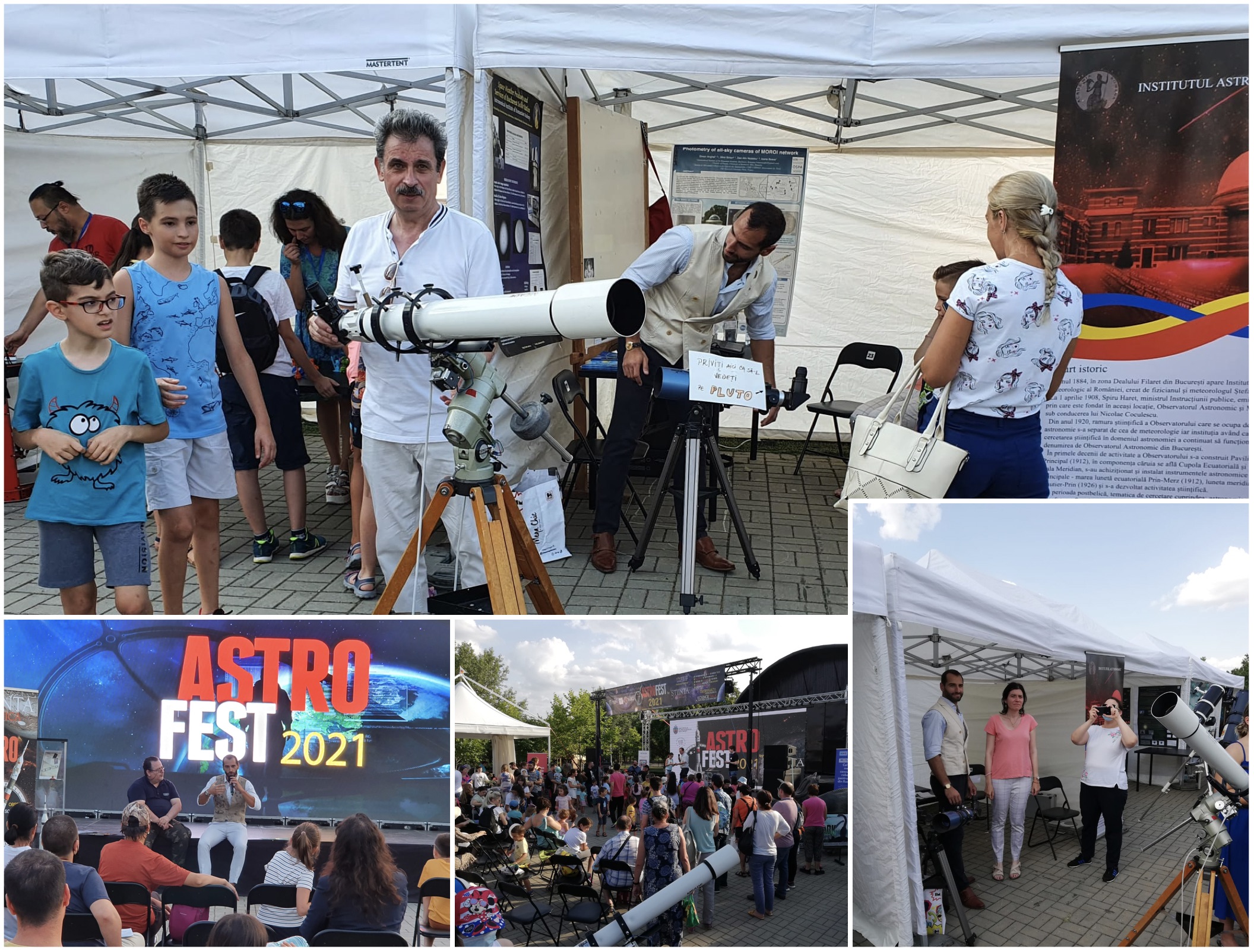
Solar Eclipse from Jun 10, 2021
An annular eclipse was visible from the northern hemisphere on Jun 10, 2021. The annular eclipse happens when the Moon covers the center of the Sun leaving a small edge uncovered.
In Romania, it was visible as a partial eclipse (0.1% to 2.2%) with maximum coverage in the north-western part of the country.
The Cluj-Napoca Astronomical Observatory observed this eclipse with a maximum coverage of 0.8% starting at 13:27 and ending at 14:27.
The image shows the maximum of the eclipse as seen from Cluj (46° 45' 29.45" North and 23° 35' 17.43" East) at 13:57. The image was obtained with a Coronado SolarMax Telescope (D=60mm, F=400mm) using an Hα filter.
Sun's activity is currently increasing. There were two active regions on the Sun. In this image there is a beautiful prominence visible on the eastern limb.
Published on Jun 10, 2021

Star Formation Rates in Galaxies
Our colleague dr. Cristina Popescu has written a chapter in a book called Star Formation Rates in Galaxies, published by Cambridge University Press. The topic dr. Cristina Popescu describes was firstly introduced by her in the field.
This book is is aimed at postgraduate students, young researchers and astrophysicists. Each chapter describes the state-of-the-art methods used to measure the intensity of recent or on-going star forming activity in galaxies and has been written by world-leading experts in the field.
"When I first received the invitation to write one of the book’s chapters, on the very topic that I first introduced to the field and then developed during my career, I was really thrilled." — UCLan's Professor of Astrophysics Cristina Popescu
Professor Popescu is President of the International Astronomical Union's Commission J1. She specialises in the investigation, formation and evolution of galaxies by studying the detailed physical processes that take place in these complex systems, related to the interaction of radiation with dust, gas and cosmic rays.
More details can be read at: UCLAN News Section
Contact: cpopescu (at) astro.ro
Published on May 28, 2021
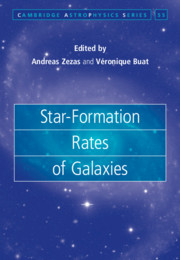
Open Position: Director of the Institute
The Section of Mathematical Sciences of the Romanian Academy announces an Open Position for the Director of the Astronomical Institute. Visit the Romanian Academy web page for more details.
Published on Mar 15, 2021

Potentially Hazardous Asteroid Apophis
The Potentially Hazardous Asteroid (99942) Apophis was observed during the interval: 18:09:36 – 23:46:14 UTC 03/04.03.2021 at the Astronomical Observatory Cluj-Napoca, Feleacu Station. The asteroid was as a distance of only 0.1187 AU, just 2 days before the close approach to Earth due 2021.03.06. This is the last favorable opportunity for observing Apophis before its closest approach of 2029.04.13.9 at a distance of just 0.0002541 AU. An impact with Earth on 2029 is completely excluded.
The telescope used was a PlaneWave Instruments CDK 24” (D=610 mm, F/D=6.5), currently the largest Romanian telescope. The detector was a SBIG STL 6303 CCD camera (3072x2048 pixels, 9x9 micron/pixel) using VRI Johnson-Cousins filters. The exposure time for each filter was 25 sec. The movie stretches 10 R filter exposures per second (resulting in a 17 second movie for more than 5.5 hours of observations).
Astrometric and photometric data on (99942) Apophis is recorded during this close approach from Feleac and Berthelot Observatories on every clear night.


Contact: vladturcu (at) academia-cj.ro, sonka (at) astro.ro
Published on Mar 05, 2021
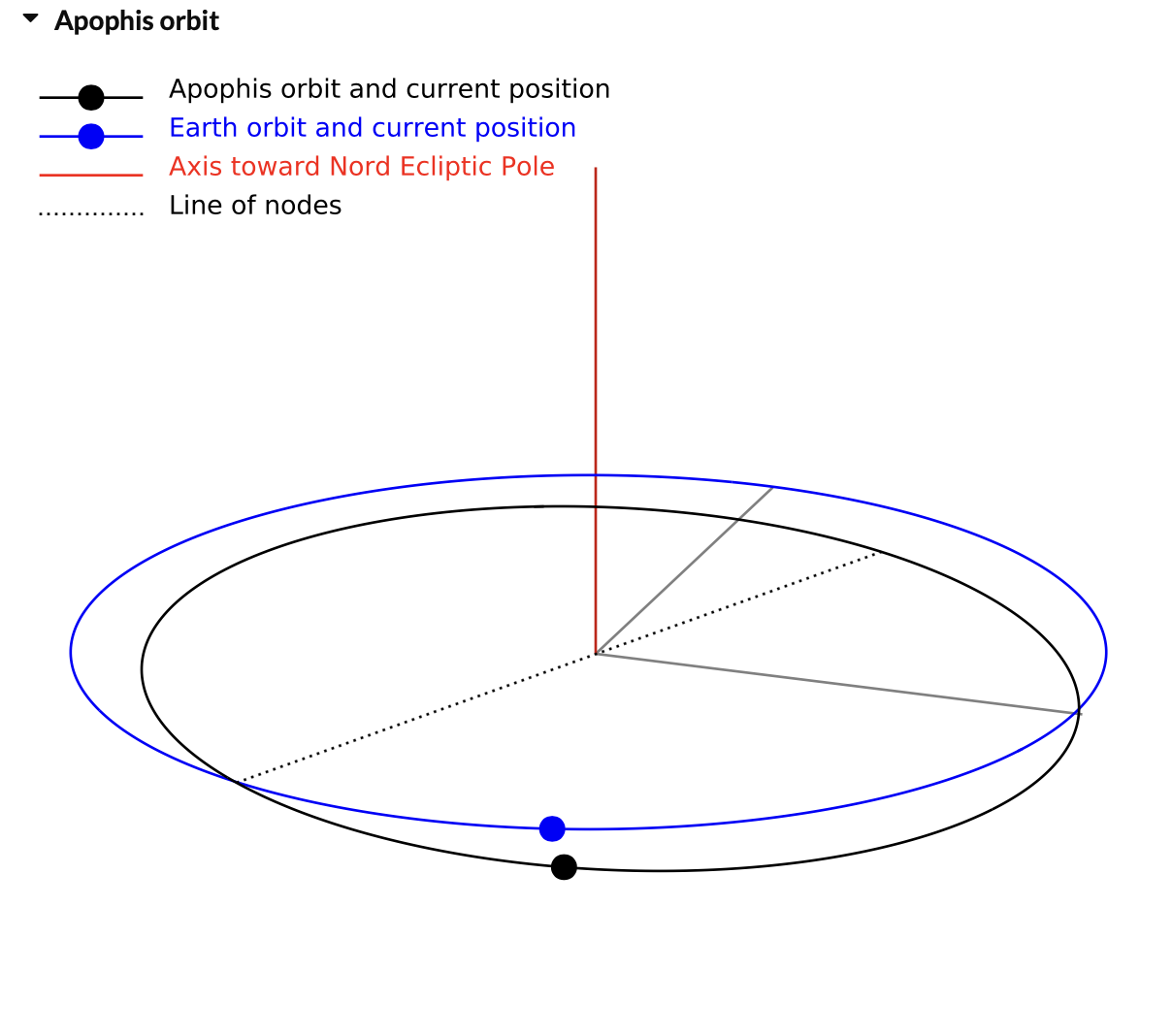
Spectacular fireball above Romania
A spectacular fireball was detected by the Meteorite Orbits Reconstruction by Optical Imaging network (MOROI) in the morning of 3rd of March, 2021, at 05:58 local time (03:58:39 UT). The bolide flared over Suceava county for 5 seconds, reaching a maximum stellar magnitude of -11 (+/- 1). The meteor brightness matched that of the Moon, which was 85% illuminated at the time.
As seen from the city of Suceava, the object traveled from West towards East, displaying fragmentation features in the second half of the atmospheric path. Four other stations in Romania have detected the bolide. From Bacău and Bârlad, the frames during the maximum brightness were saturated, while data from Baia Mare station (250km away) allowed a proper measurement of luminosity, due to the higher extinction close to the horizon. Investigations for trajectory and orbit reconstruction are underway.
Currently, MOROI network is in the process of integration with the international FRIPON network (Fireball Recovery and InterPlanetary Observation Network). The end goal is to fill the gaps between asteroid and meteorite science, by studying the meteoroid interactions with atmosphere, and computing the location where the surviving fragments might land.
contact: simon.anghel (at) astro.roPublished on Mar 04, 2021
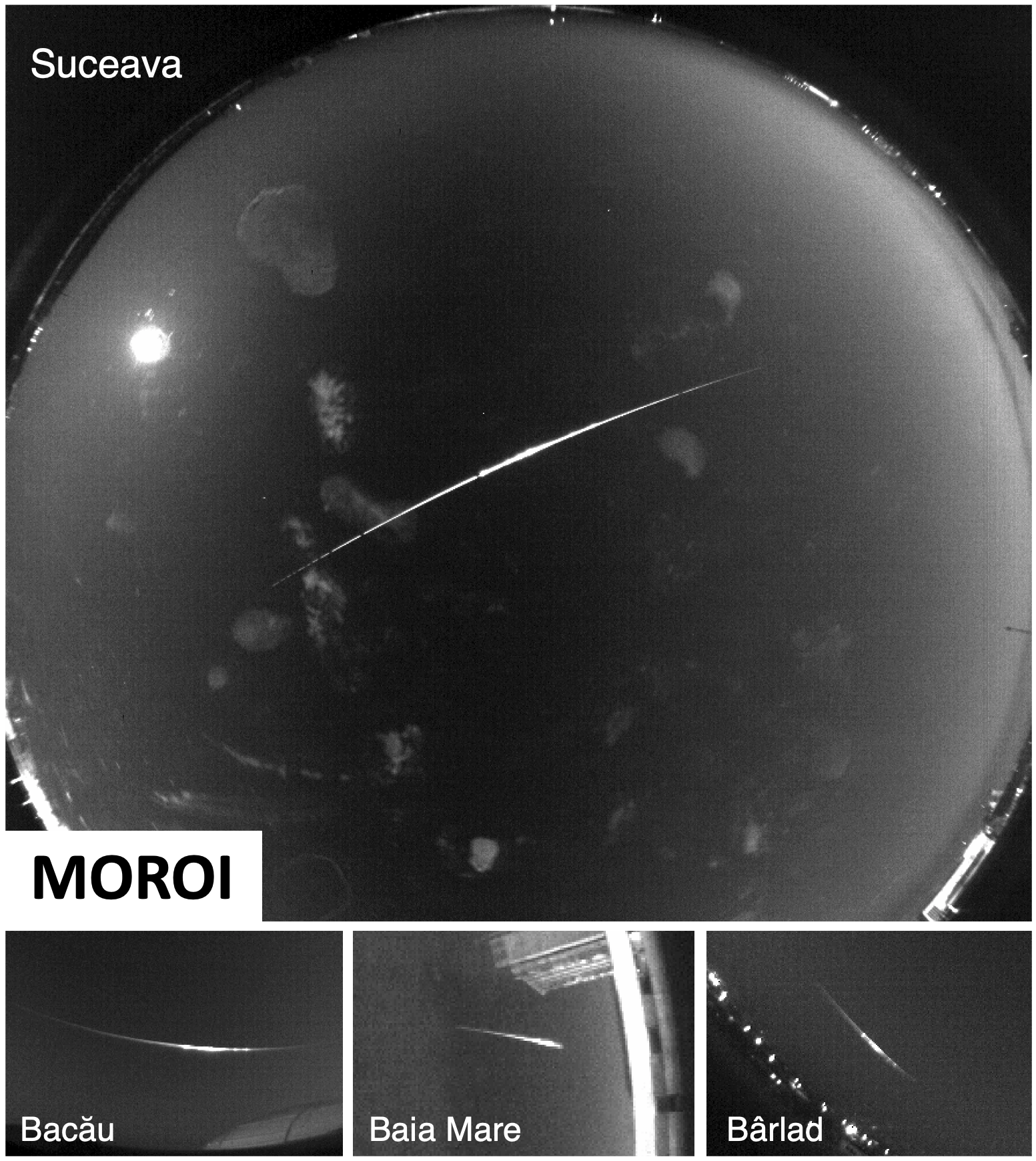
Solar Active Region Observed from AIRA
The first active region of the solar cycle 25 was observed on December 20, 2016. The minimum activity period between solar cycle 24 and the current cycle was approximately double compared to other similar periods.
After almost 4 years, solar cycle 25 is picking up pace!
The active region NOAA 12776 became visible on October 15 and passed the western solar limb on October 27.
In the right-hand side image this region is observed by the Bucharest Observatory on October 21 when it was situated at 14° southern latitude and 45° western longitude. On October 24, a B2.3 class flare initiated from this region was recorded by GOES.
Between October 27 and November 2 another active region (NOAA 12778) was visible on the Sun and generated several C-class flares.
The solar activity as seen in the sunspot number, the number and intensity of flares, as well as other eruptive phenomena, will constantly increase over the next few years.
Today we can see two active regions on the Sun and the sunspot number is 21.
Published on Nov 05, 2020
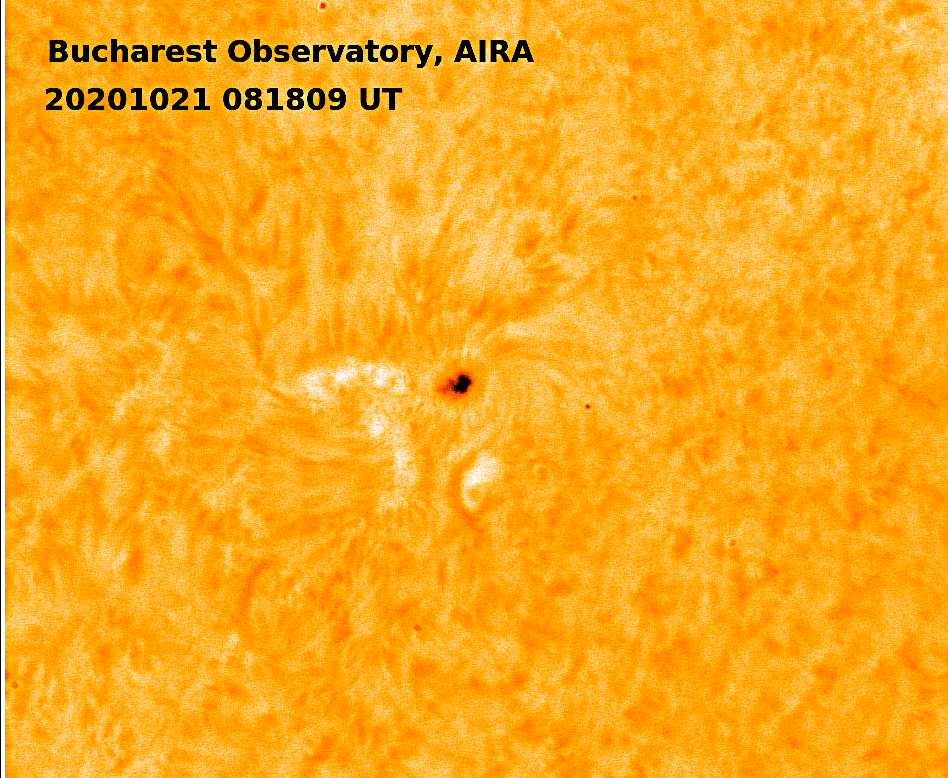
The unusual tail of comet 246P/NEAT
Berthelot Observatory Survey recently reported the detection of an unusual tail of comet 246P/NEAT. The discovery, submitted to Central Bureau for Astronomical Telegrams, was published as CBET 4799. The CBET is available bellow:
Further to CBET 4793, A. Sonka, M. Birlan, and A. Nedelcu, Berthelot Observatory, Astronomical Institute of the Romanian Academy, report on the unusual shape and tail of comet 246P from CCD observations obtained with a 0.38 m f/8 reflector (39'.8 x 28' field-of-view) at Berthelot Observatory on May 12, 21, and 23. A 60-s unfiltered exposure taken on May 23 shows an obvious 3' fanlike tail in p.a. 292.8 degrees, while 46 stacked images having a total exposure time of 0.8 hr shows a long tail visible at p.a. 296.8 degrees; the tail is at least 28' long and shows a 5'.4-long discontinuity, starting at 3' from the comet's coma (after the discontinuity ends, the tail continues and possibly extends outside the field-of-view. The comet's tail is also visible in images taken on May 12 and 21 at p.a. 296.8 degrees. The discontinuity is 5' long on May 12 and 8' long on May 21. Additional unfiltered CCD total-magnitude and coma-diameter measurements for comet 246P: Mar. 20.27 UT, 15.0, 40" (H. Sato, Tokyo, Japan, 0.25-m astrograph near Mayhill, NM, USA; fan-like tail 1'.5 long toward p.a. 250-290 degrees); May 29.44, 14.6, -- (K. Kadota, Ageo, Japan, 0.25-m reflector). Visual total-magnitude and coma-diameter estimates by P. Camilleri, Katherine, NT, Australia (0.40-m reflector): June 9.47, 13.8, 1'; June 14.45, 14.0, 1'.
contact: sonka (at) astro.roPublished on Jun 19, 2020
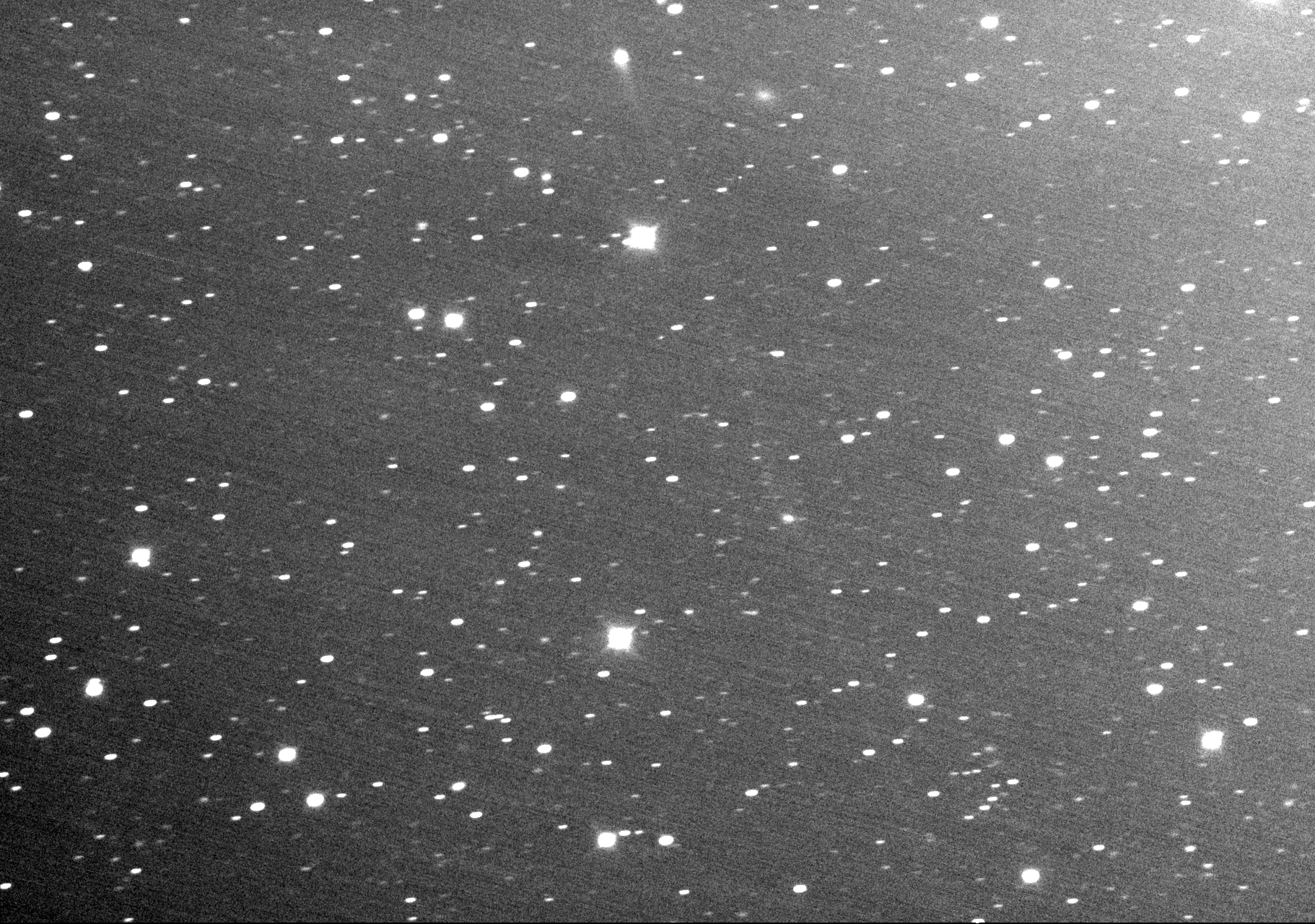
Asteroids in Isolation online conference
Published on Apr 21, 2020
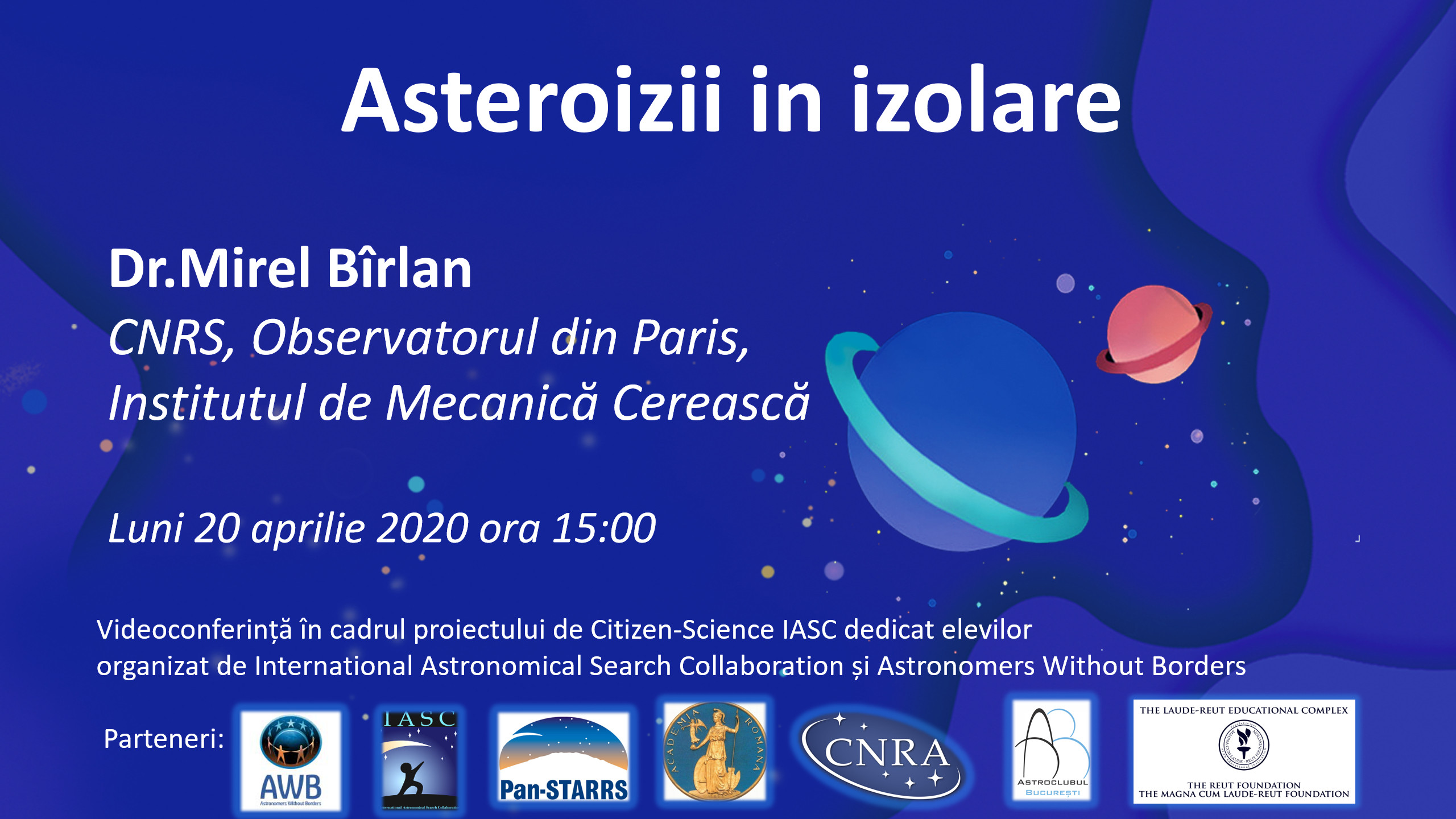
Different Education - Sun
The Astronomical Institute and the Astronomia 21 organisation are contributing to #StayAtHome Covid19-related state.
In the frame of “Școala altfel” – “A different type of learning”, on March 31, 2020, Diana Beșliu-Ionescu has presented “The Sun and its consequences on life” to a class of fourth grade students from ”Grigorie Ghica Voievod” Gymnasium School. Using Google Meet, available on the G Suite for education, students were able to follow our researcher’s presentation.
They have learned about the Sun’s position relative to our Galaxy, its evolution and structure. The students were most impressed by the scaled difference between Sun and Earth sizes represented using a 60 cm diameter yoga ball and a very small metal marble. Students also watched high-resolution animation provided by DOT showing photospheric activity around an active region. The presentation described what is a solar cycle, which eruptive events may influence the Earth and produce geomagnetic storms. At the end students were told that their phones can show the space weather status using NASA/ESA’s Apps.
Published on Apr 13, 2020
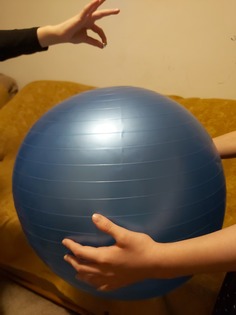
Romanian astronomer helps unlock the mystery of "the golf ball asteroid" Pallas
Dr. Mirel Birlan, researcher at Paris Observatory and the Astronomical Institute of the Romanian Academy is part of a team of researchers that has looked up-close at the Pallas asteroid, the third largest object in the asteroid belt, to better understand its unusual tilted orbit. The team discovered that the surface of the asteroid is so cratered, that researchers dubbed it “the golf ball asteroid”. The research team believes that the craters are a consequence of a violent period of collision during its history and that this could also explain the unusual inclination of its orbit that has puzzled scientists for centuries.
The Pallas asteroid is almost one-seventh the size of the Moon. For centuries, astronomers have noticed that the asteroid orbits along a significantly tilted track compared with the majority of objects in the asteroid belt. This inclination remained a mystery for a long time. Now a European team, led by principal investigator Pierre Vernazza from the Laboratoire d'Astrophyisque de Marseille in France, and including Dr. Mirel Birlan, obtained images of Pallas using ESO’s Very Large Telescope (VLT), an array of four telescopes, each with an 8-meter-wide mirror, situated in the mountains of Chile.
The high resolution images show a very cratered surface of the asteroid. In addition, the researchers created a reconstructed 3D model of the shape of the asteroid, revealing a heavily cratered object on the poles, but also at the equatorial regions. The researchers identified 36 craters larger than 30 kilometres in diameter, covering more than 10% of its surface — proof that Pallas experienced a violent period of collision during its history, two to three times more intense than the one of other large asteroids like Ceres or Vesta. The heavily cratered surface explains also the preservation of its initial shape after the formation. This collisional period could also explain Pallas’ tilted orbit.
The images of the asteroid have also revealed a bright spot on the surface of Pallas. The most probable explanation of this finding and its origin is that Pallas has large deposits of salts at its surface, most probably formed by a mixture of water and silicates. The investigations carried out by the European team have also led to the discovery of the Pallas family of asteroids, a cluster of small asteroids. Simulations of impacts with Pallas suggest that this family could be the result of a violent collision about 1.7 billion years ago by an object having a diameter between 20 km and 40 km. Asteroid 3200 Phaeton, identified as the source of the Geminids meteor shower, which is observed on Earth in December, is part of the Pallas family, and could provide clues to understanding the origin of the parent body, Pallas. Thus, observing meteors and collecting meteorites coming from Phaeton could partly solve the history of Pallas.
The findings were published in Nature Astronomy https://www.nature.com/articles/s41550-019-1007-5.
Published on Feb 20, 2020
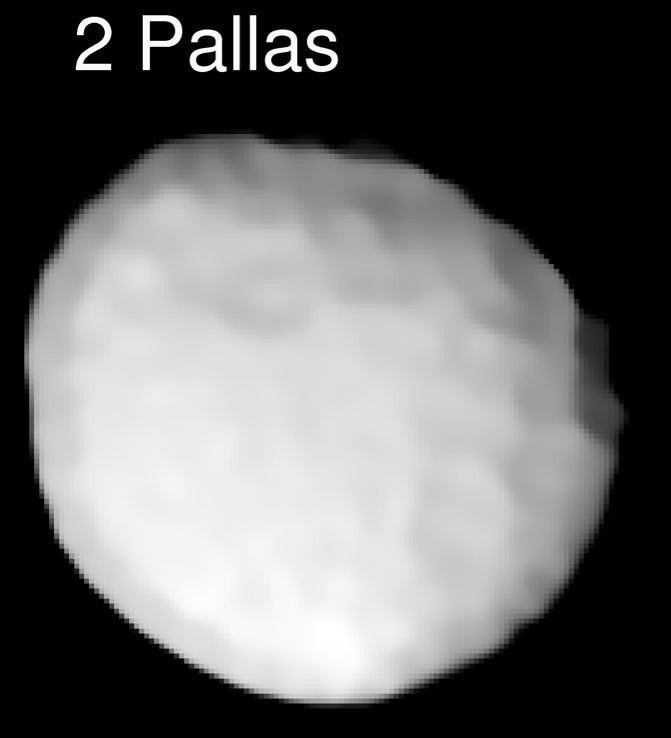
International Astronomical Union celebrates the Romanian astronomer, Nicolae Donici
Published on Feb 14, 2020

Jean Dragesco at his 100th anniversary!
Jean Dragesco was born on the 27th of April 1920 at Cluj. When he was only 15 years old, he was already observing the Moon through a self-made 2″ telescope. Around the same age, he read an outstanding number of astronomy books written in French and this informational pathway made him acquire new scientific knowledge, the building blocks of his future and dedicated life for science.
At 17 years old, he built another telescope, a 4″ Newtonian, which had a mirror made in Stuttgart, Germany He built another mirror, still spherical, but 6″, and finished a good Altazimuthal Newtonian telescope. At 19 years old, he became "officially" a contributor to "Mars" section of Société Astronomique de France. In the same year, Jean Dragesco founded the first organization for the young astronomers in Romania called the Astronomical Society for Young Astronomers and he became the editor of the monthly publication Urania. The next year, he founded the Microscopy Association and started to publish the Micron journal.
Jean Dragesco left Romania for France when he was 21 years old. His father, Ion Dragu, was a philosopher, writer and diplomat; he worked for the Romanian Embassy in Paris as the Head of Press Office, during that time, Eugène Ionesco was Press and Cultural Secretary within the institution. Once in France, an excellent 3″ telescope came to being out of his own hands. After he became a member of Société Astronomique de France and an active observer of "Mars" section there, he got the permission to do observations withe the 6″ and 7.5″ (152 and 190 mm) telescopes at Paris Observatory. It is also the moment when he started to collaborate with several very knowledgeable and dedicated astronomers who latter on became professionals in the field.
At 22 years old, he discovered a gap between the rings B and C of planet Saturn. However, even if the same discovery was made a few weeks later by the distinguished French astronomer Bernard Lyot, the same who invented the coronagraph, the new discovery was attributed to him and not to Dragesco and it is today known as the ''Lyot division".
Published on Jan 26, 2020
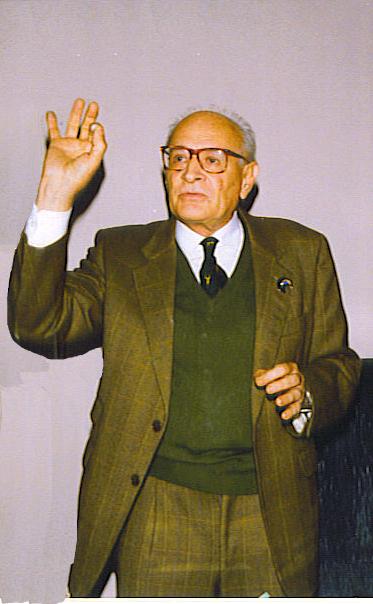
Berthelot Observatory receives MPC observatory code
Berthelot Observatory is a remote observing station of the Astronomical Institute. Built on General Berthelot village, Hunedoara, on a protected area belonging to the Romanian Academy, the observatory is operated in remote mode from Bucharest. Following the first light in mid-November 2018, the observatory is currently involved in near-Earth objects photometric surveys and tracking and surveillance activities in the framework of EU-SST programme of the European Commission.
The telescope is a RC 14.5'' F/7 Optical Guidance System on a fast, 8°/s, equatorial mount able to track objects on medium Earth orbits. The field of view, using an SBIG STL11000M CCD camera, is of 44'x30'.
Berthelot Observatory successfully concluded the first common European exercise of space surveillance and tracking taking place from 15 to 24 July 2019. Astrometry data for the four assigned targets was provided daily in TDM format.
On December 6th, Berthelot Observatory received the code L54 from the International Astronomical Union's Minor Planet Center (MPC).
Published on Dec 06, 2019
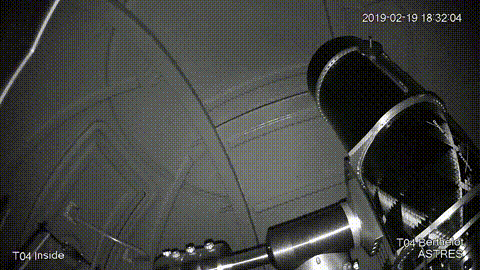
Astronomical Institute in ESA-funded projects
The Institute was recently involved in two new ESA-funded research and development projects. Cheia Antenna Retrofit Phase II is a project led by RARTEL Telespazio, a Leonardo and Thales company, aiming to include the 32 meters antennas presently available at the Cheia Satellite Ground Station, in the context of European SSA programme. The Institute will assist RARTEL in all the project phases (design, software development, integration and testing) for all the aspects related to the tracking services which shall be supplied through the newly developed radar infrastructure.
SYNOPTES project, led by Romanian InSpace Engineeering startup and having both Cluj and Bucharest observatories as partners, is developing a GNSS-based real-time clock (RTC) system for the temporal synchronization of SST ground based observations. Berthelot and Feleacu astronomical stations are the testing beds and on-sky validation infrastructures of the technical solution. Contact: nedelcu (at) astro.ro)
Published on Nov 19, 2019

Bucharest Science Festival 2019
Bucharest Science Festival opened the gates of the Astronomical Institute of the Romanian Academy for the general public, on the 27th of September 2019. The number of visitors exceeded any estimations being around 500 adults and children.
The Planetarium Hall was permanently full of people eager to learn who participated to several presentations with PowerPoint, video or specialized software support. The academic staff and astronomy teachers were: dr. Diana Beşliu-Ionescu (AIRA), Daniel Berteşteanu (Bucharest Astroclub), Florin Zăinescu (University of Bucharest).
A special moment of the evening was the live connection with France, as dr. Mirel Bîrlan (AIRA) interacted with the public through Skype directly from Paris Astronomical Observatory.
The activities included guided tours in the museum halls of the Institute - the Meridian Hall and the Equatorial Dome. There, some of the most important and spectacular astronomical instruments of Romania are preserved for future generations and they are used today for educational purposes.The tour guides - Sorin Marin (AIRA), Octavian Blagoi (AIRA) and Marian Naiman (Bucharest Astroclub) received many questions during the whole event, especially coming from the younger friends of astronomy and they answered to all of them.
The members of Bucharest Astroclub took part in organizing the BSF 2019 event. They displayed with great openness their instruments - several telescopes and their accessories and kindly instructed the public on how to watch the planets and the stars through them.
Published on Oct 04, 2019
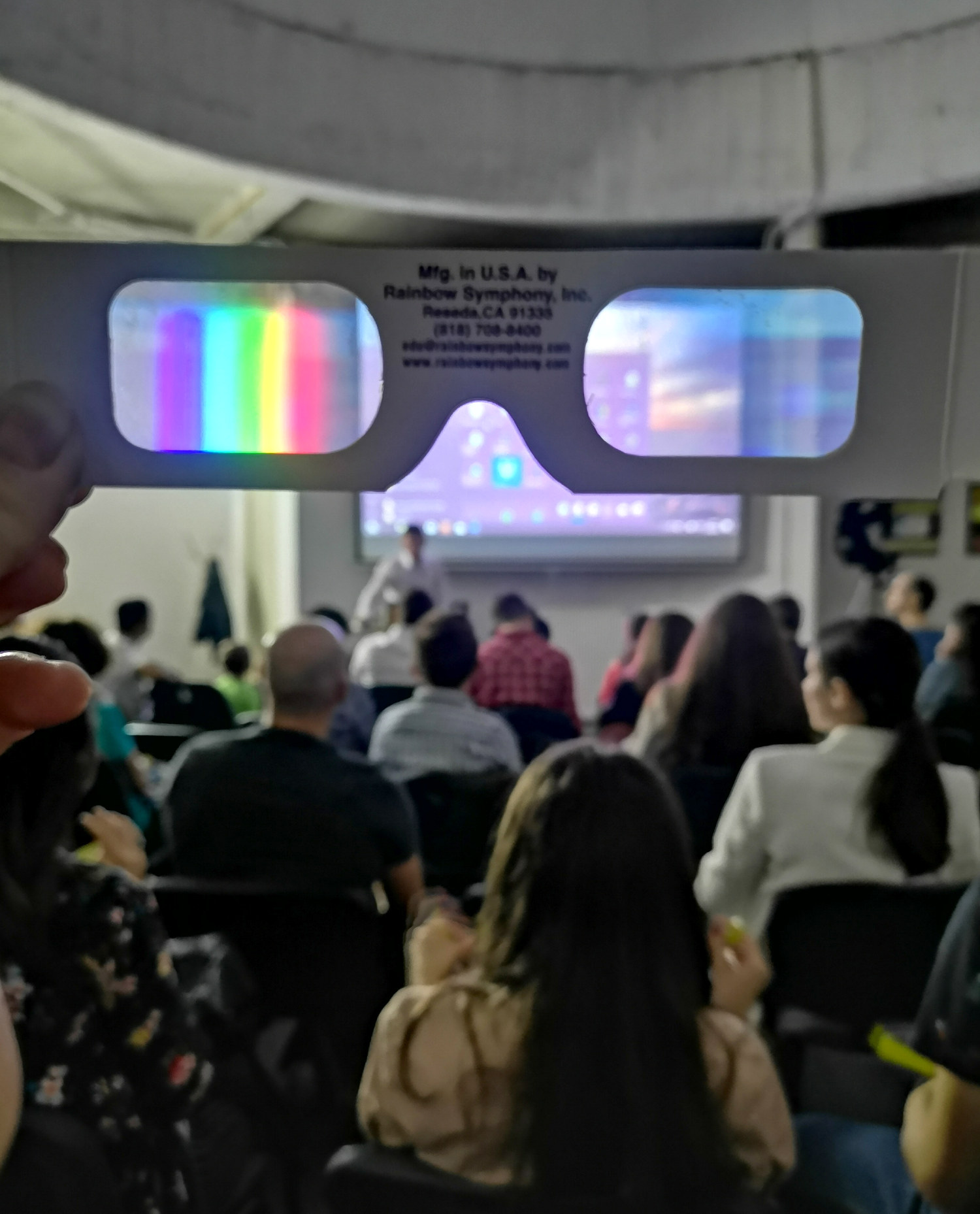
First Interstellar Comet
Using Berthelot Observatory in remote mode we imaged the first interstellar comet - C/2019 Q4 (Borisov) . Based on the current arc, the comet is on a hyperbolic orbit with an eccentricity of almost 3. The comet will reach perihelion on December 7, 2019. Berthelot Observatory will continue to monitor this objects in the following weeks. Contact: sonka (at) astro.ro.
Published on Sep 14, 2019
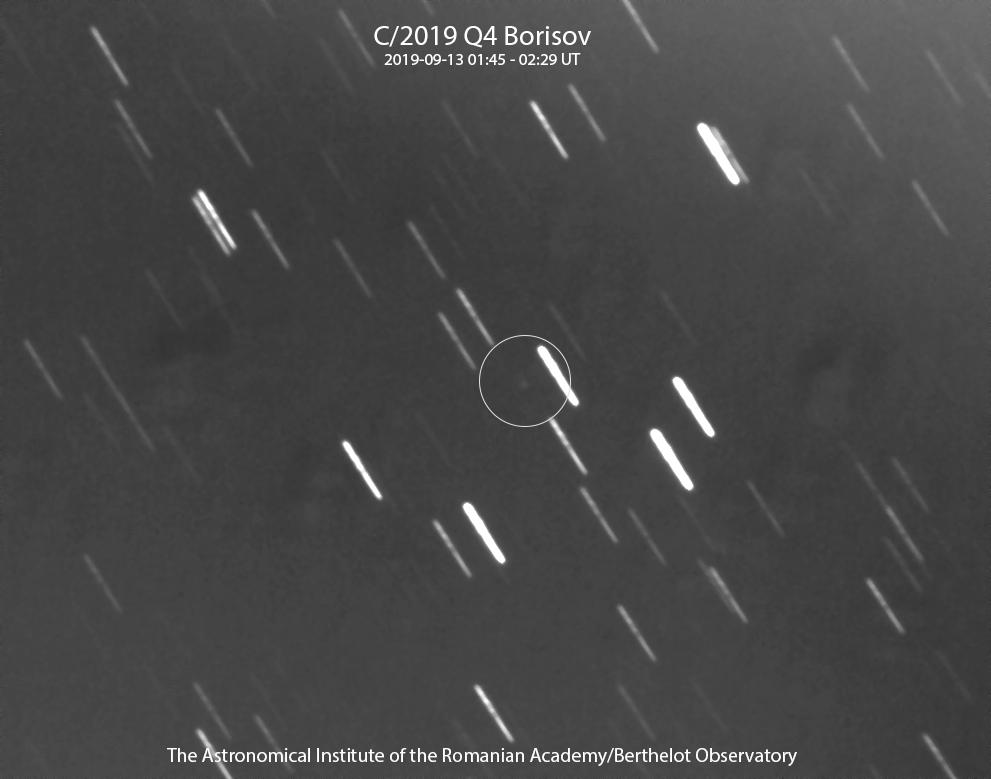
Romanian Astronomical Journal
Romanian Astronomical Journal is an international journal covering the fields of:
Romanian Astronomical Journal appears twice a year since 1991 and three times a year since 2015. This Journal publishes original peer reviewed articles, brief reports, special communications, theoretical and observational works. You are invited to submit your original research to roaj.:at:.astro.ro
Ownership and management:
Romanian Astronomical Journal is part of the Romanian Academy series of journals and it is published in hard copy by the Romanian Academy Publishing House. Subscription information could be found by contacting the journal at roaj.:at:.astro.ro. The publication of the online numbers is under the responsibility of the Astronomical Institute of the Romanian Academy, via the journal webpage
Published on Aug 04, 2019
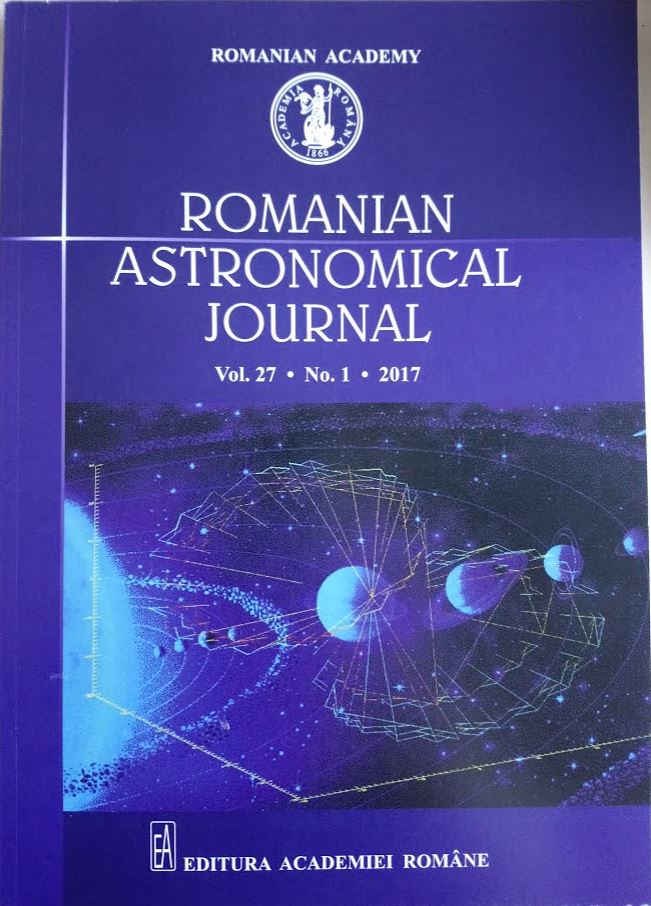
The mysterious active asteroid Gault
Asteroid (6478) Gault is a mysterious object; although it is in the Main Belt of asteroids, this object presents a cometary activity. During 2018 and 2019 astronomers detected a tail of matter in the asteroid's motion around the Sun, most likely due to the sublimation of light elements in its composition. The phenomenon involves the particles of dust and gas that reflect sunlight.
An international team that includes researchers from MIT-US, Astronomical Institute of the Romanian Academy, Weizmann Institute of Science in Israel, Observatoire de Paris-France, Lowell Observatory, Institute for Astronomy in Hawaii, and Northern Arizona University, has monitored the asteroid and obtained spectral and photometric data of Gault, between March and April 2019. Near-infrared spectral observations were performed in late March and early April 2019 with the 3 m diameter IRTF (NASA) telescope located in Mauna Kea-Hawaii; the spectral data were corroborated with the photometric data (Figure 1) obtained with the NEEMO-T05 telescope operated by the Astronomical Institute of the Romanian Academy.
Observational data confirm that the surface of the object contains minerals rich in silicium, most likely similar to the mineralogical composition of the asteroid family (25) Phocaea. The spectral data show variations of the spectral slope, decorrelated by a possible burst in object's cometary activity. This aspect can be explained by observing a new layer, unaltered by space weather, predominantly present on the surface of the object after the initial dust layer was entrained in the tail developed by the asteroid.
These results were recently published in the prestigious Astrophysical Journal Letters.
M. Marsset, F. DeMeo, A. Sonka, et al., "Active asteroid (6478) Gault: a blue Q-type surface below the dust?” accepted in Astrophysical Journal Letters. Contacts: Adrian Sonka, Astronomical Institute of the Romanian Academy, Mirel Birlan, Paris Observatory.Published on Aug 04, 2019
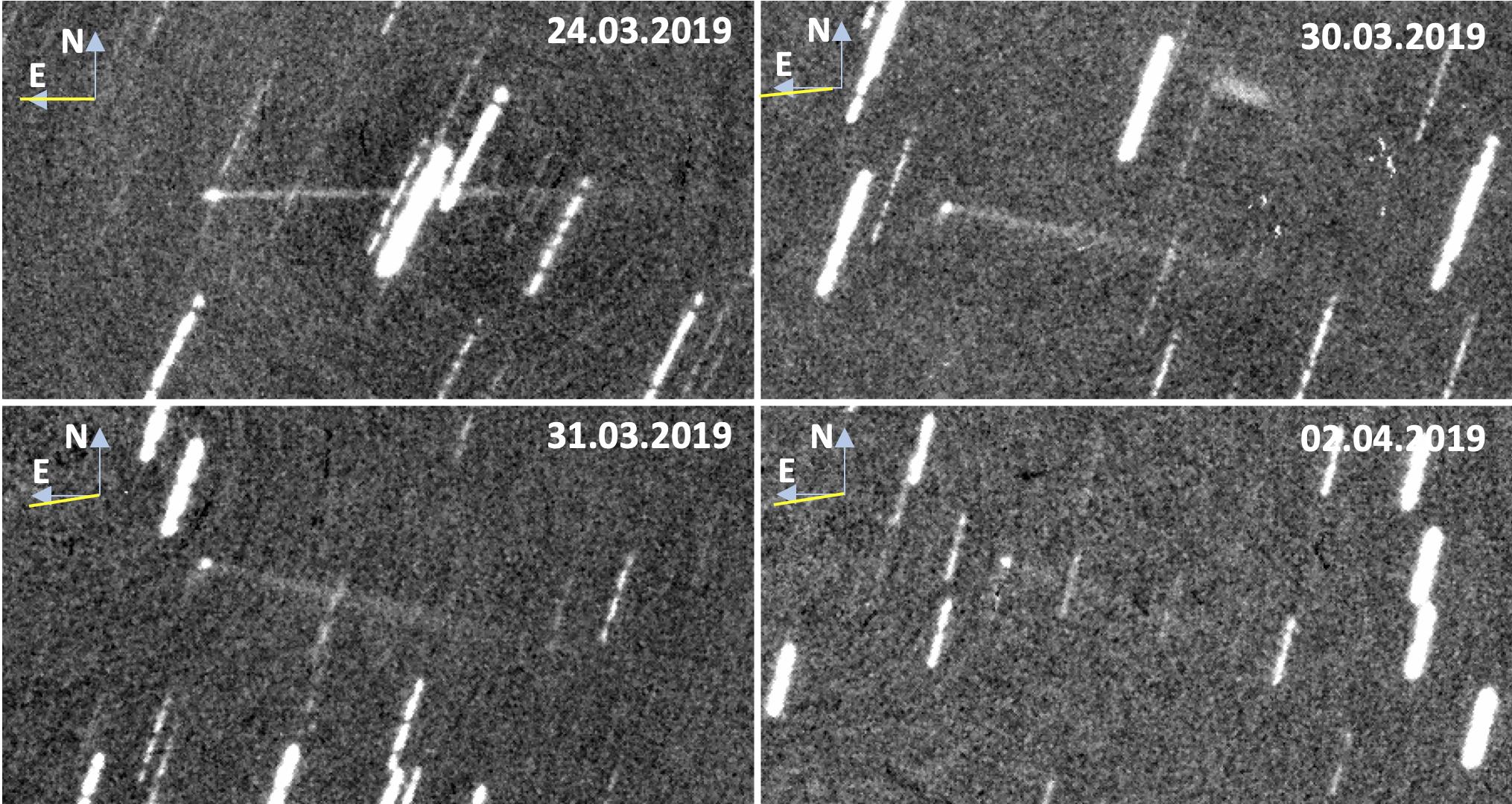
A new logistic regression model for geostorms forecasting
The Sun is the main driver of space weather. Space weather is determining the state of the Earth magnetosphere, which, in its turn, triggers geomagnetic storms.
Coronal mass ejections (CMEs) are pieces of the puzzle that drive space weather. They are one of the most important pieces, because of their large quantities of magnetised plasma released into the heliosphere. An Earth directed CME can hit the magnetosphere about 2-4 days after its initial detection, but not all CMEs arriving to Earth will produce a geomagnetic storm.
Numerous methods (theoretical, numerical and empirical) are being used to predict whether the CME will be geoeffective or not. In a recent paper, a team of researchers lead by D. Beșliu-Ionescu have proposed a new logistic regression model that will produce a probability, expressed as a number between 0 and 1, that a CME will be an event associated with a geomagnetic storm (Beșliu-Ionescu et al., 2019).
Published on Aug 03, 2019
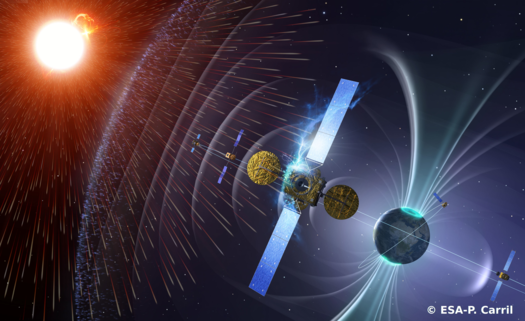
Petre Sergescu Award of the Romanian Academy
Thursday, December 13, 2018, the Romanian Academy has presented the 2016 Awards. Dr. Magda Stavinschi has been granted the "Petre SERGESCU" Award for her books "Nicolae Coculescu, A Life Among Stars" and "The Astronomy and the Romanian Academy".
A novelty in the award presenting by the Romanian Academy is the initiation of the "Petre Sergescu" Award, intended for rewarding the best history of science and technology papers, award that will be given following consultations and votes from all science departments of the Romanian Academy.
The award was established 125 years after the birth of the great science historian, both for showing the importance that sciences have in the contemporary society development, and for honoring the memory of the prominent scholars with outstanding contributions, starting from the precept expressed by Auguste Comte, saying that "to understand science, it is to know its history".
Published on Dec 16, 2018
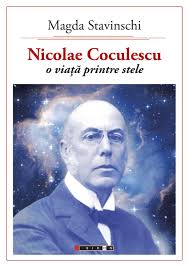
Interviews of our Institute Researchers
Recent interviews of our researchers:
Cristiana Dumitrache
Mirel Birlan
Adrian Sonka
Published on Oct 22, 2018
